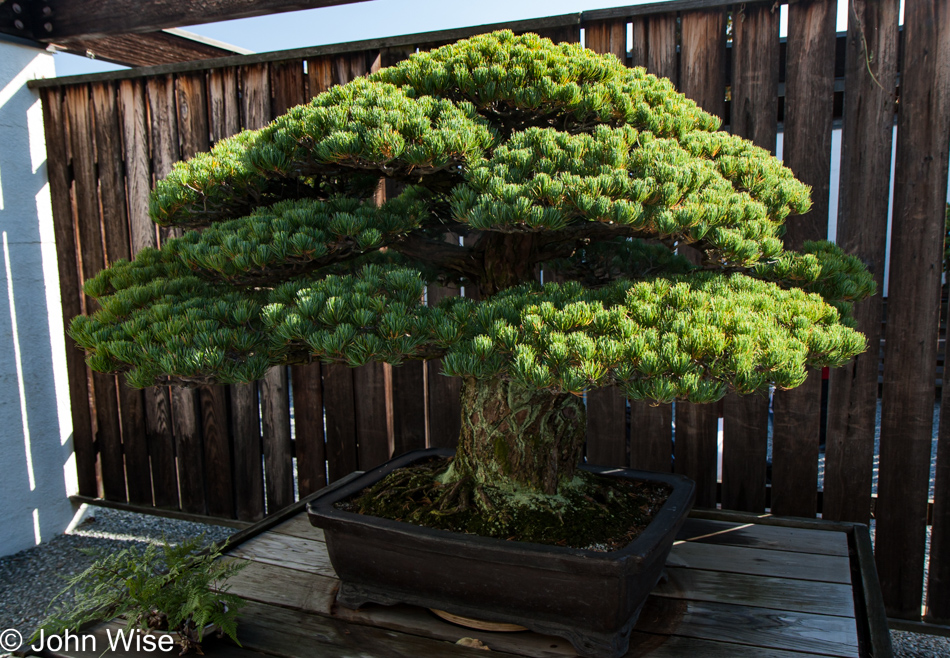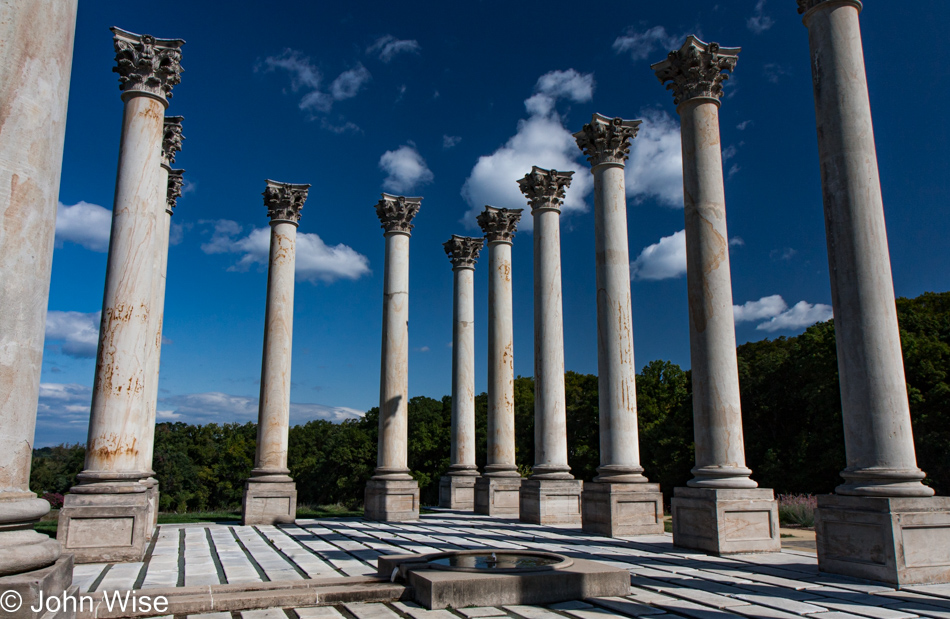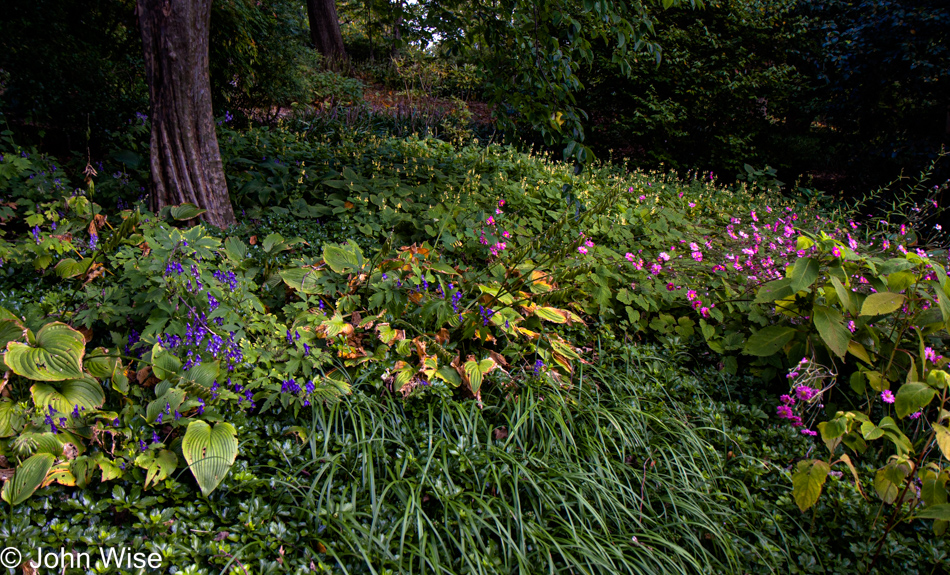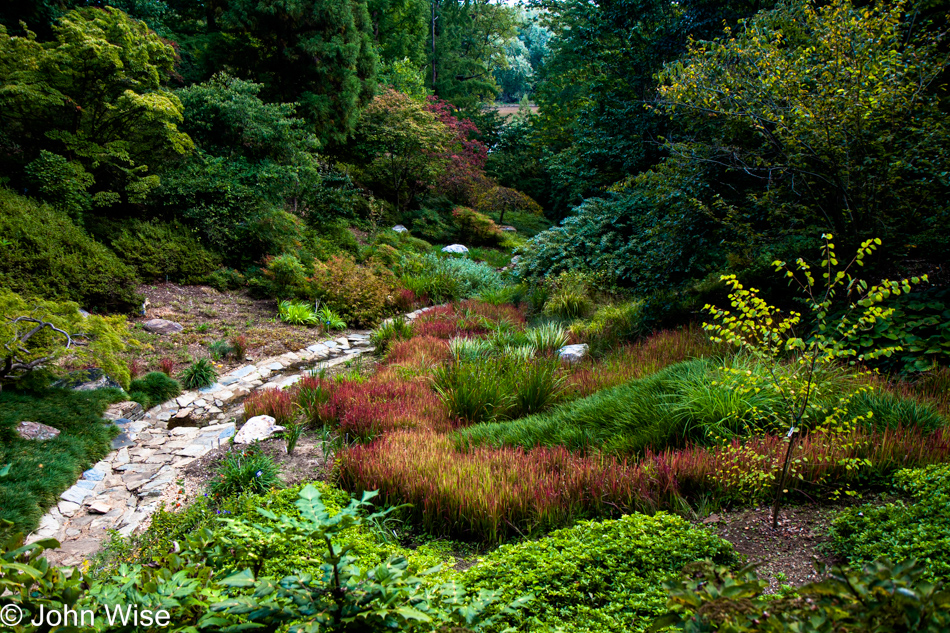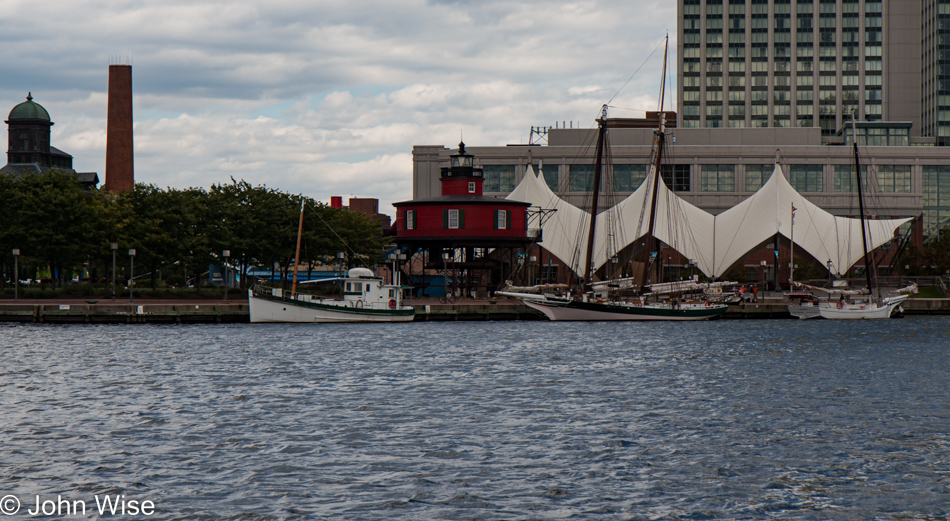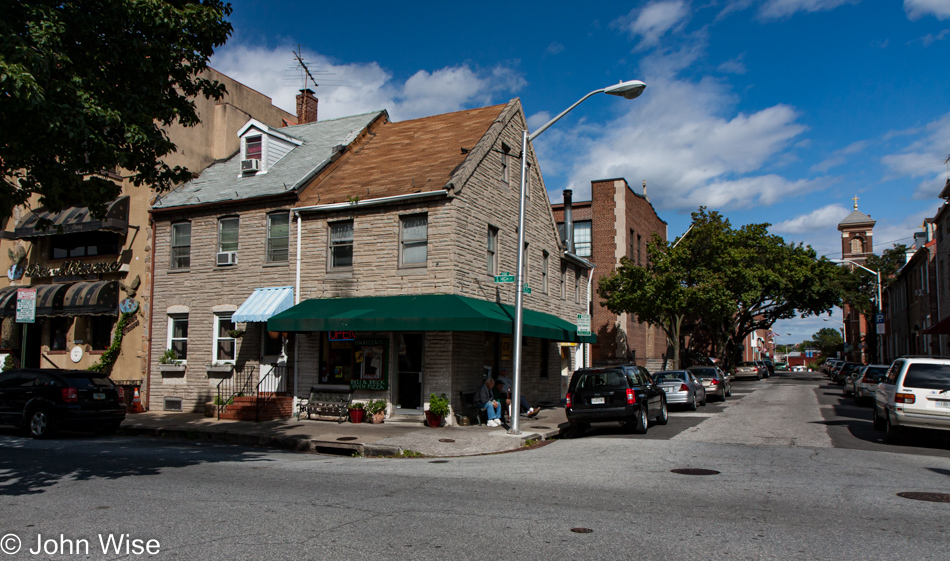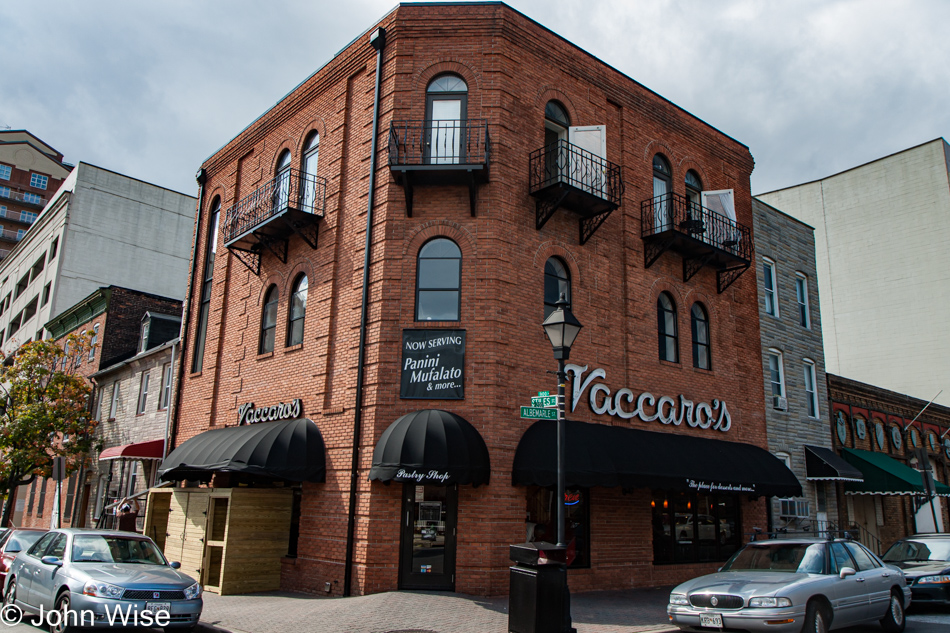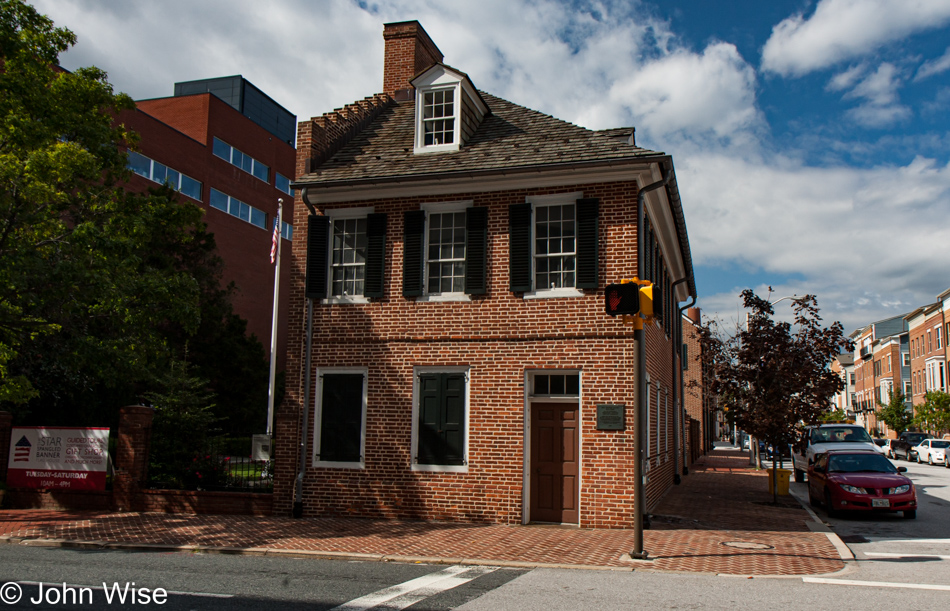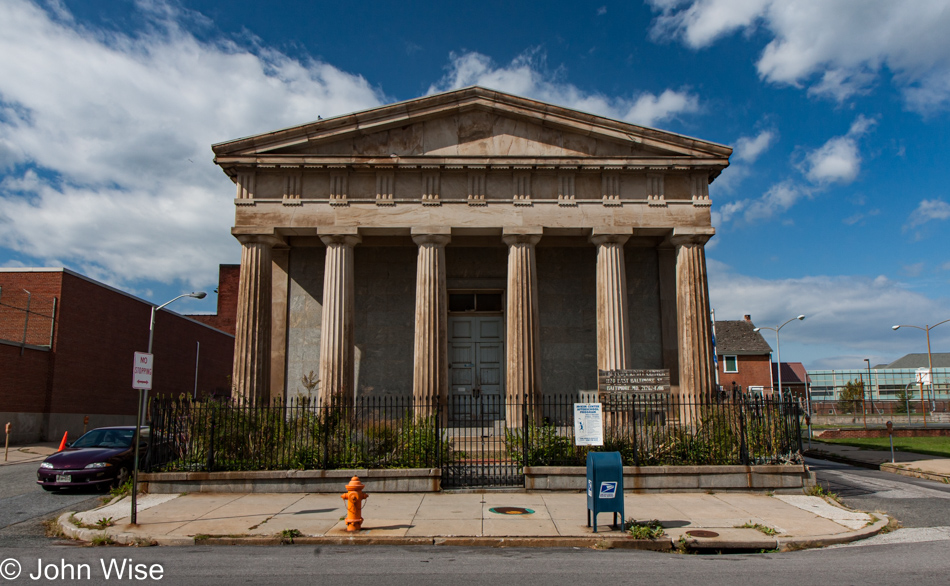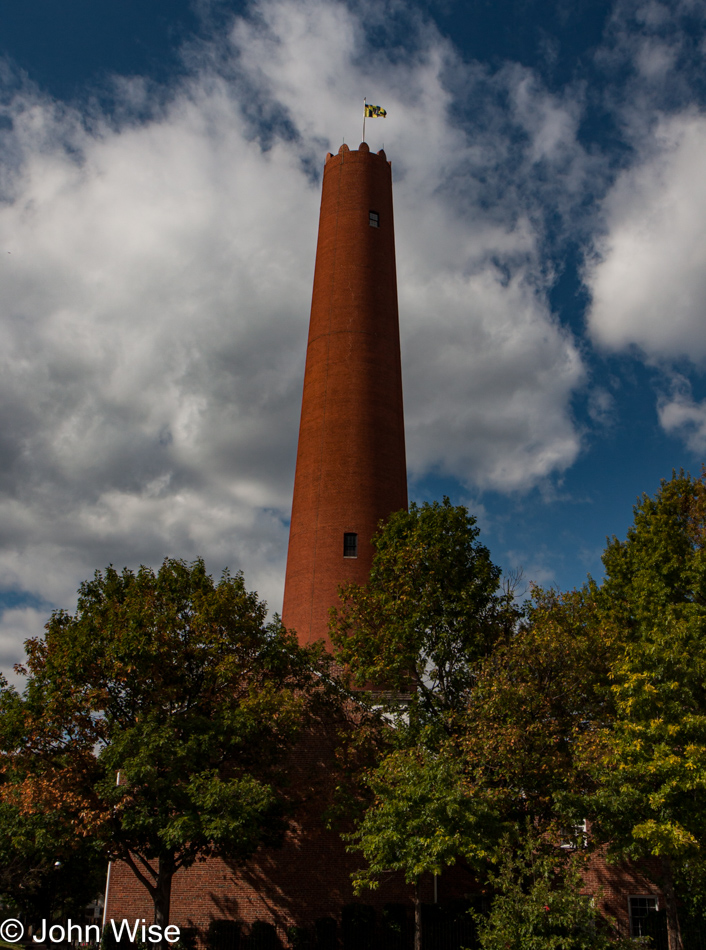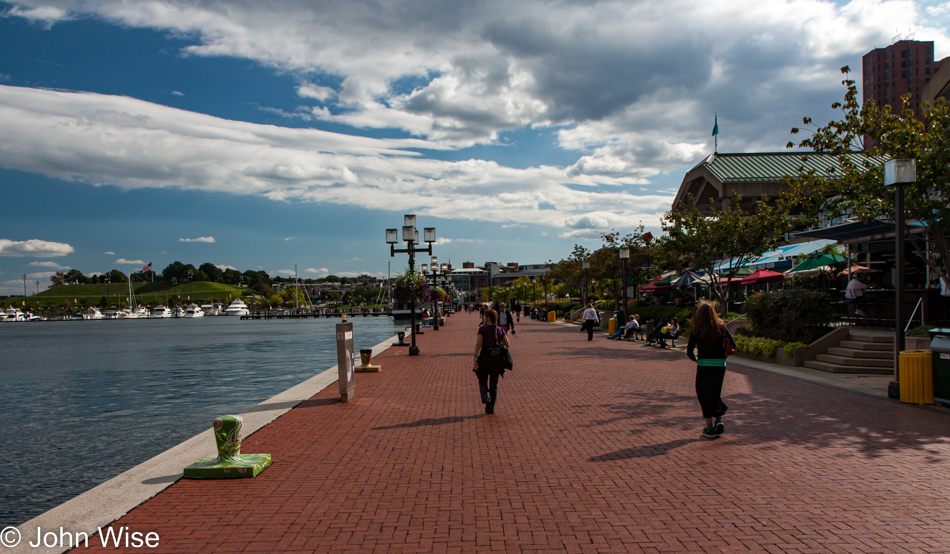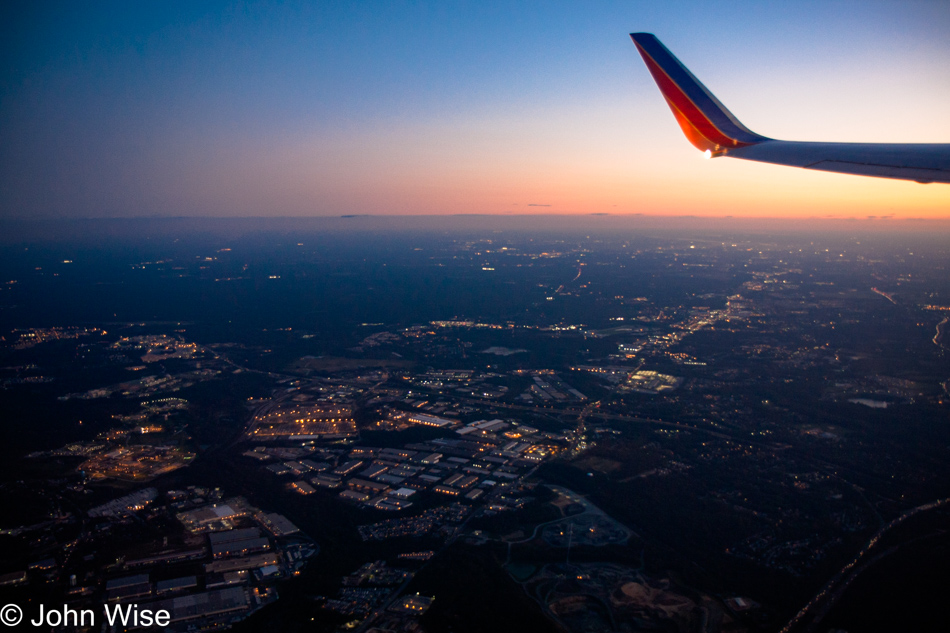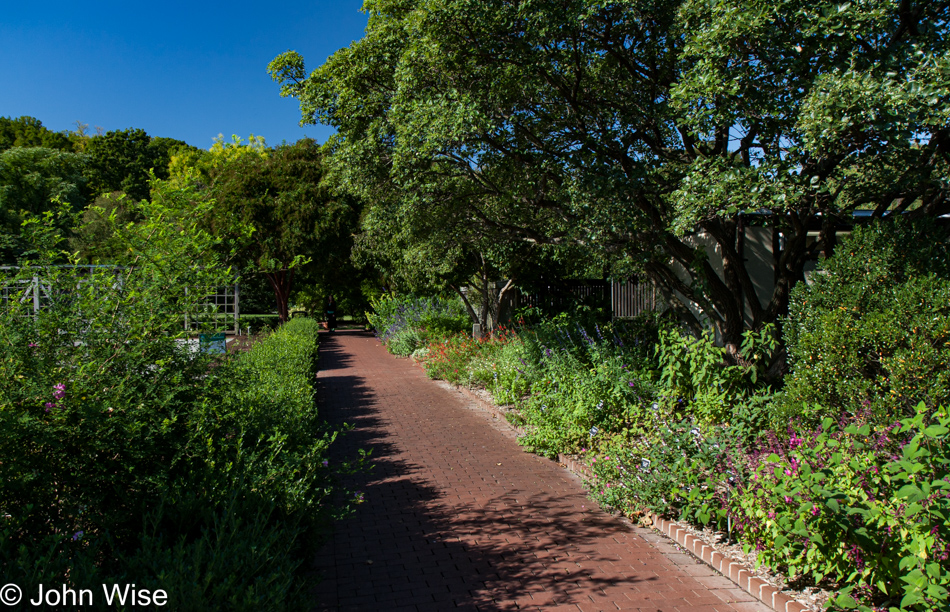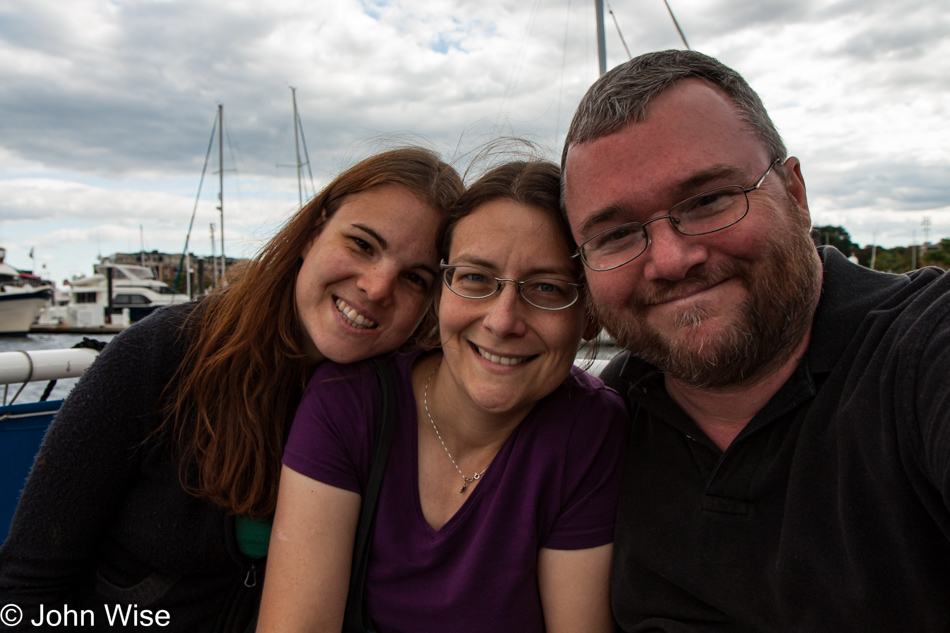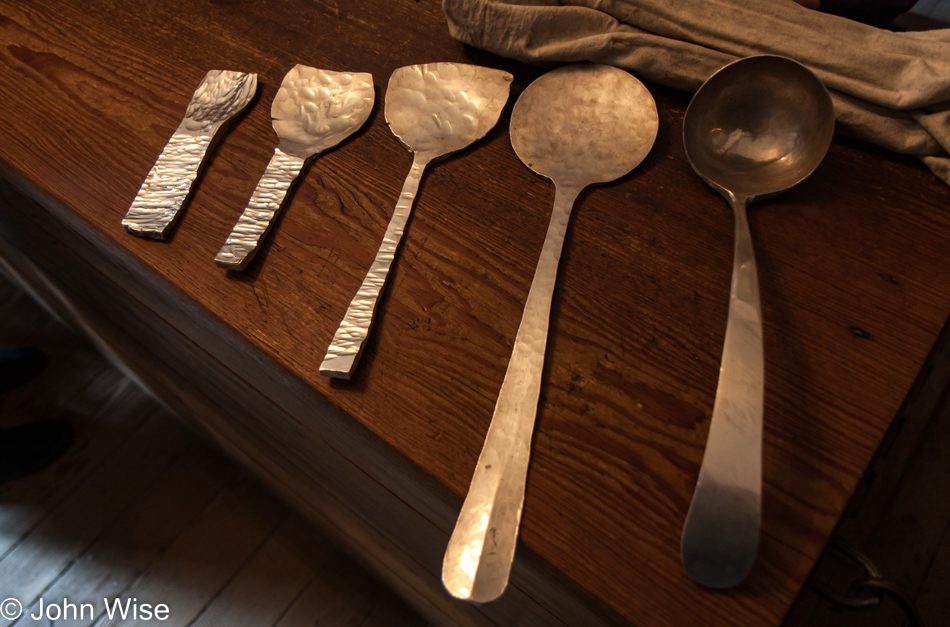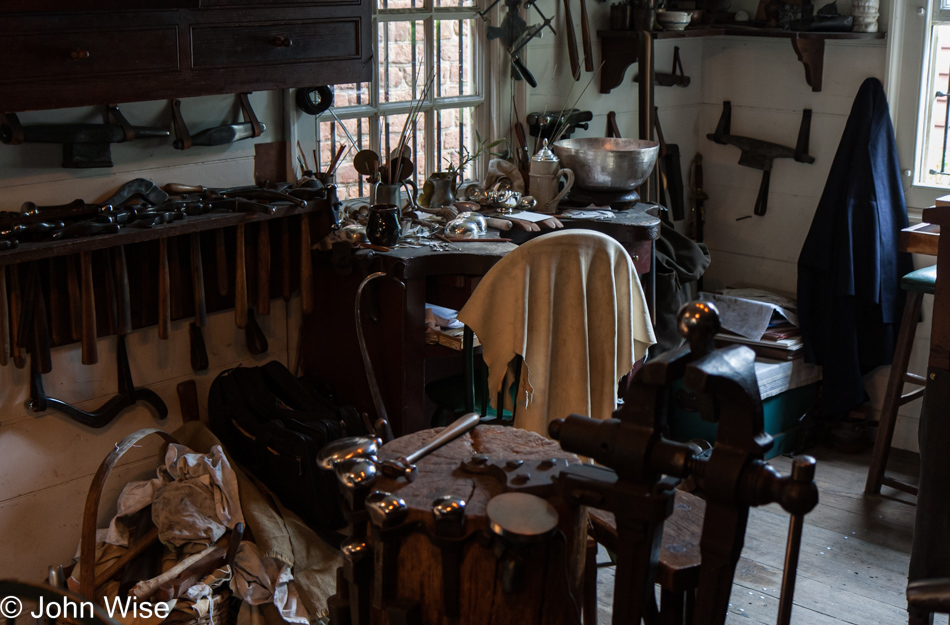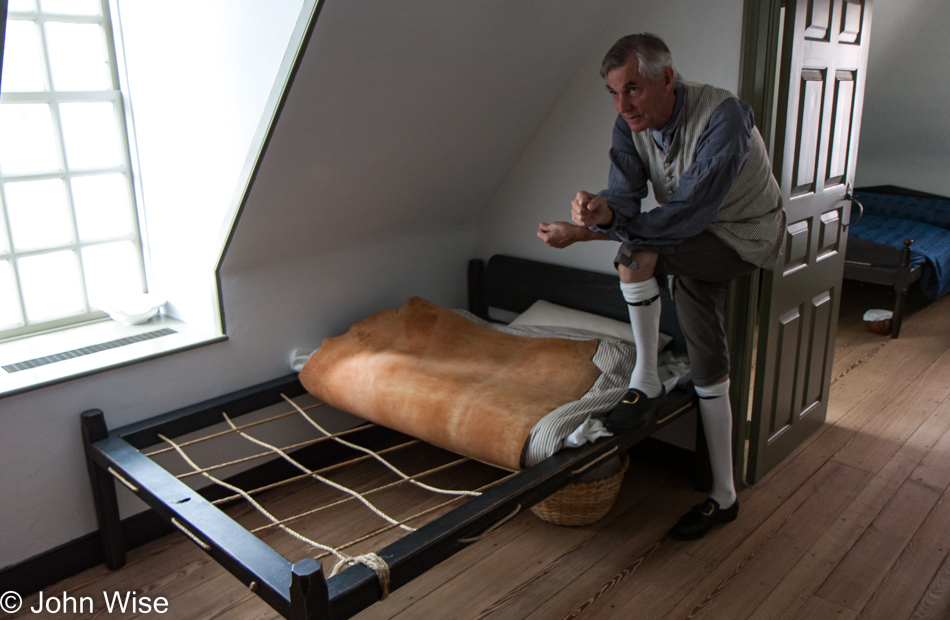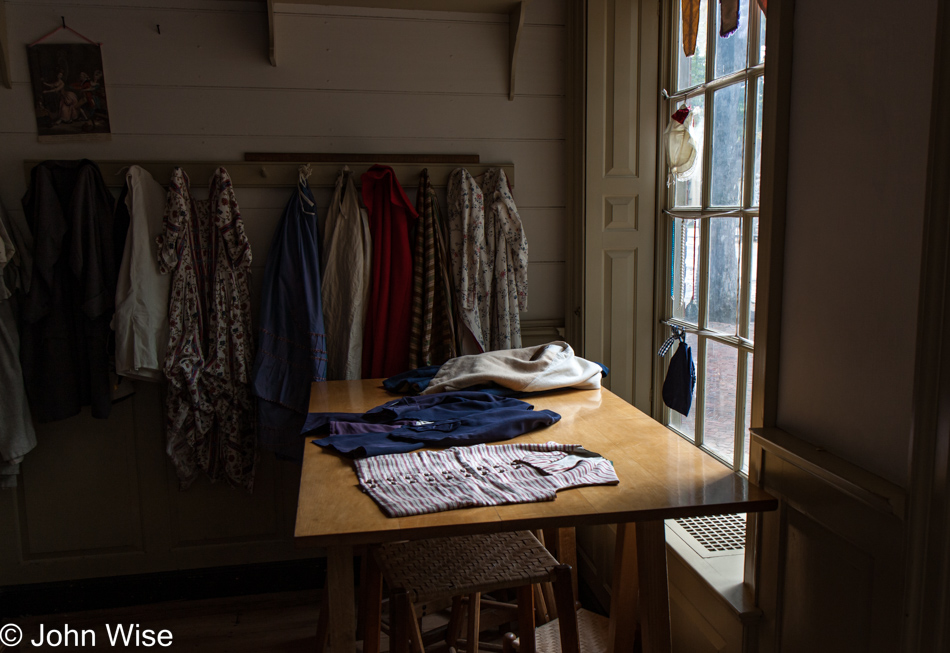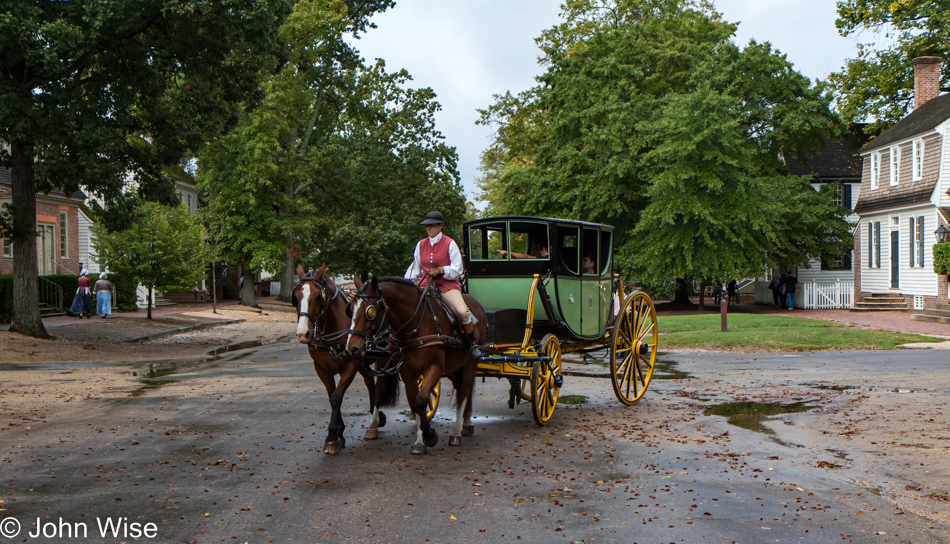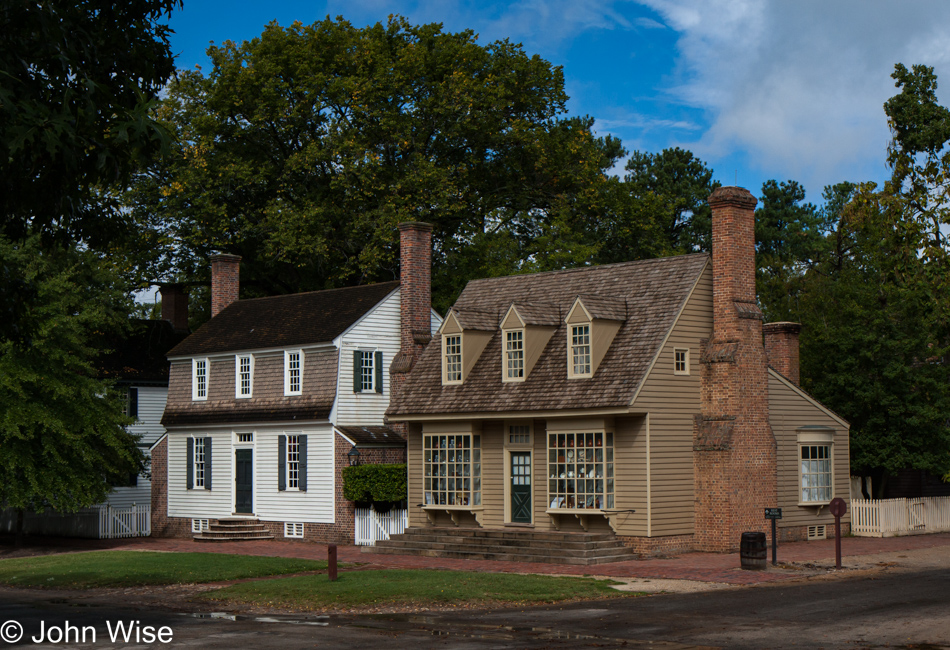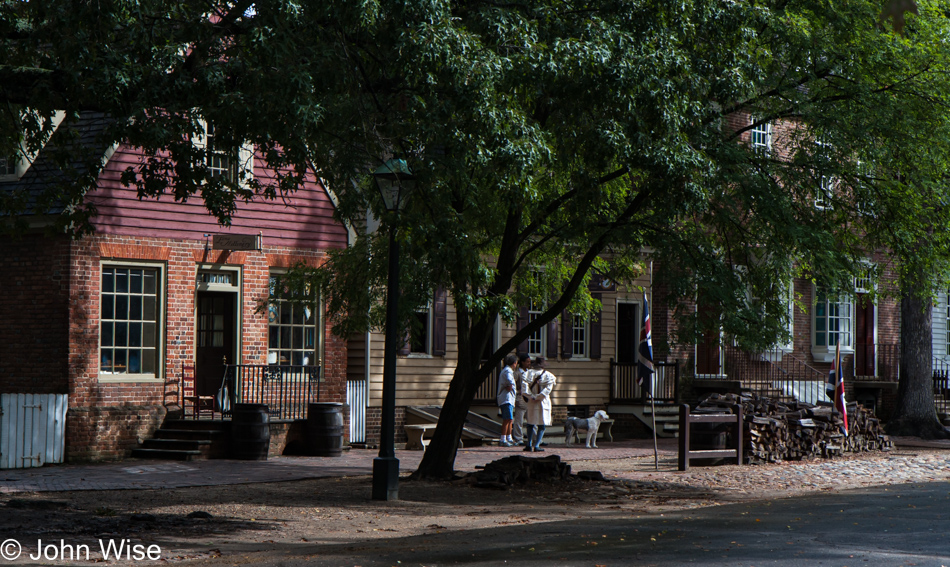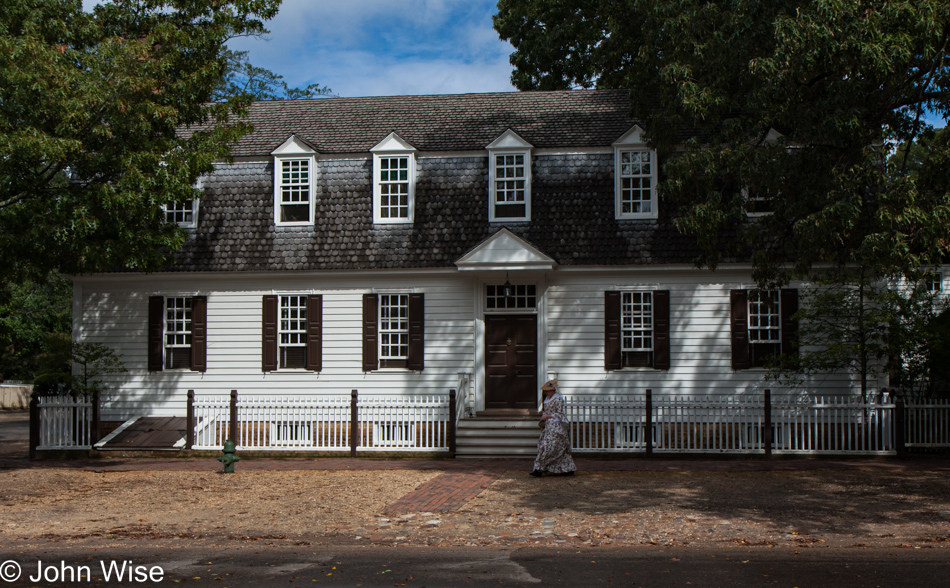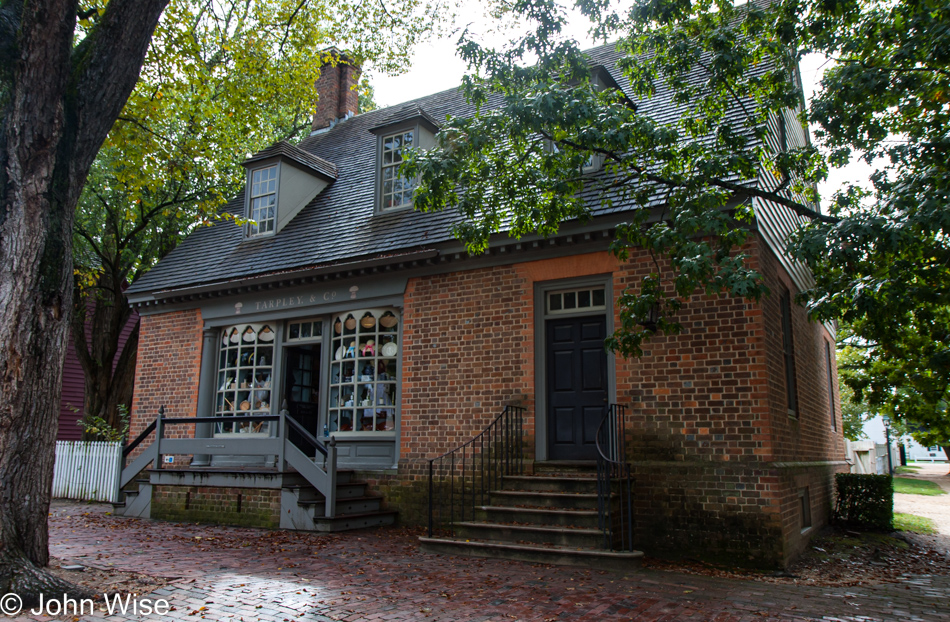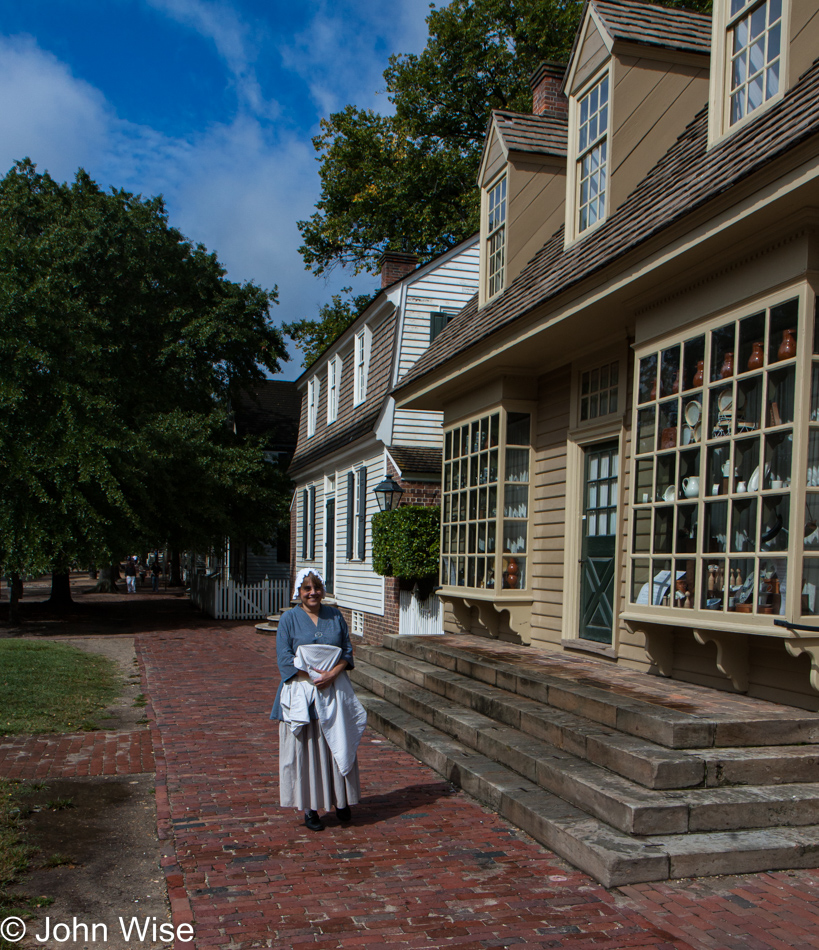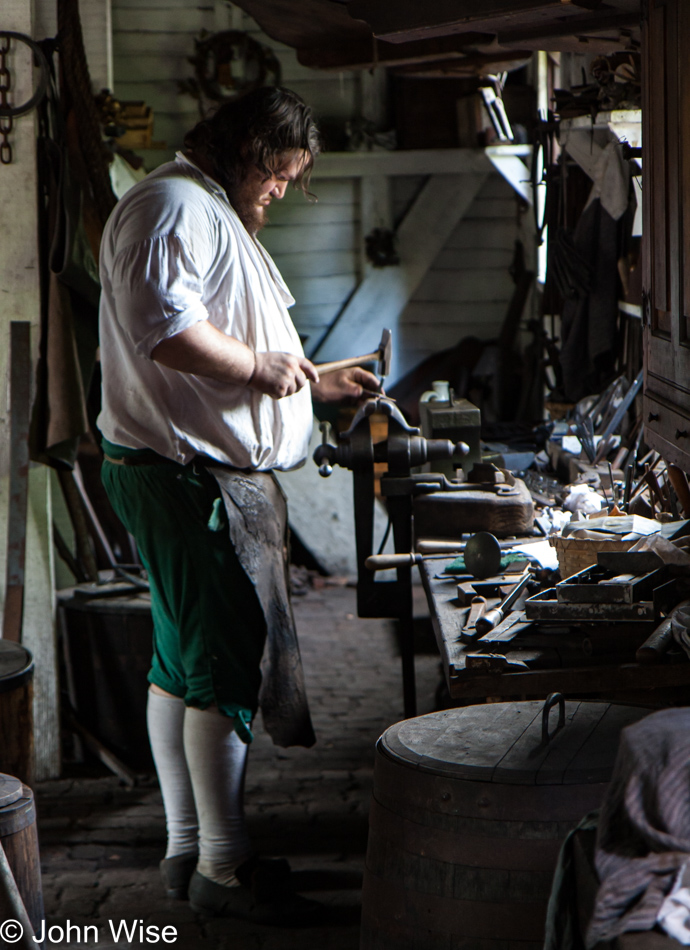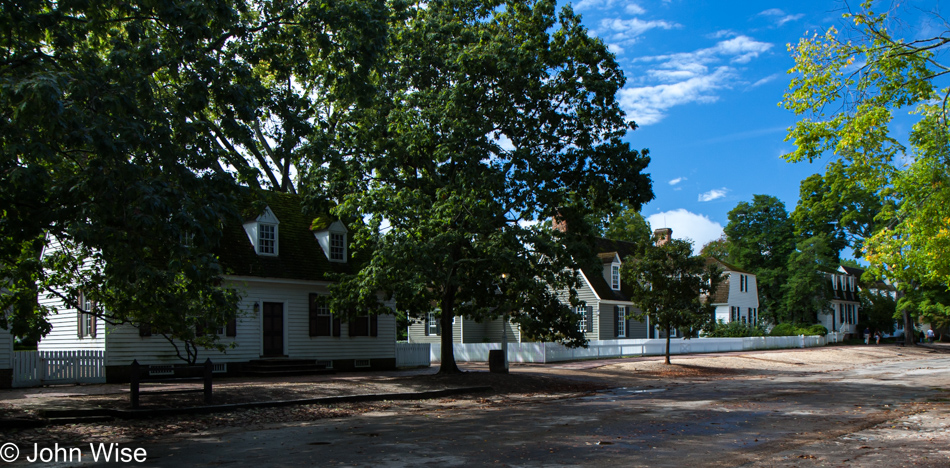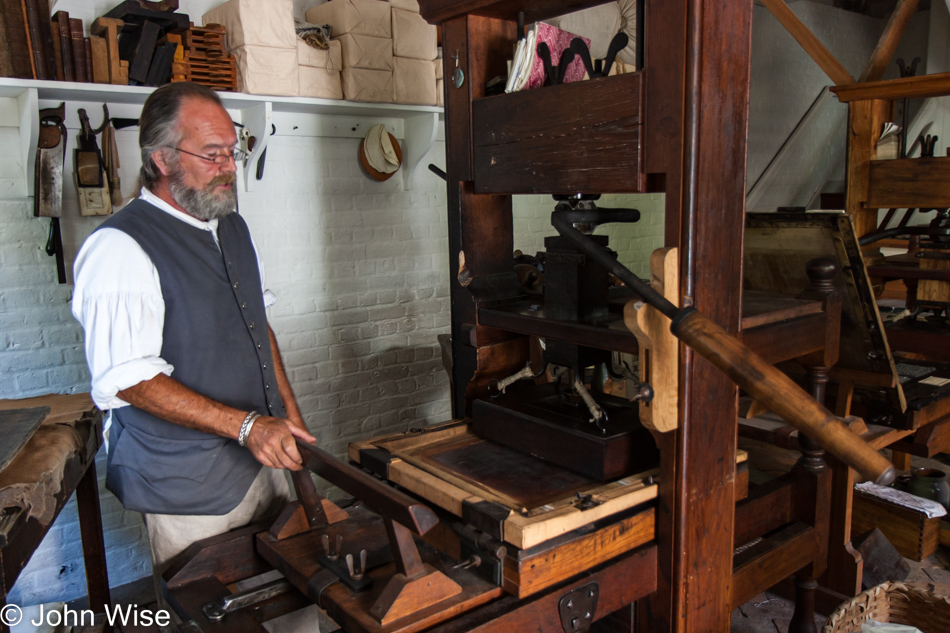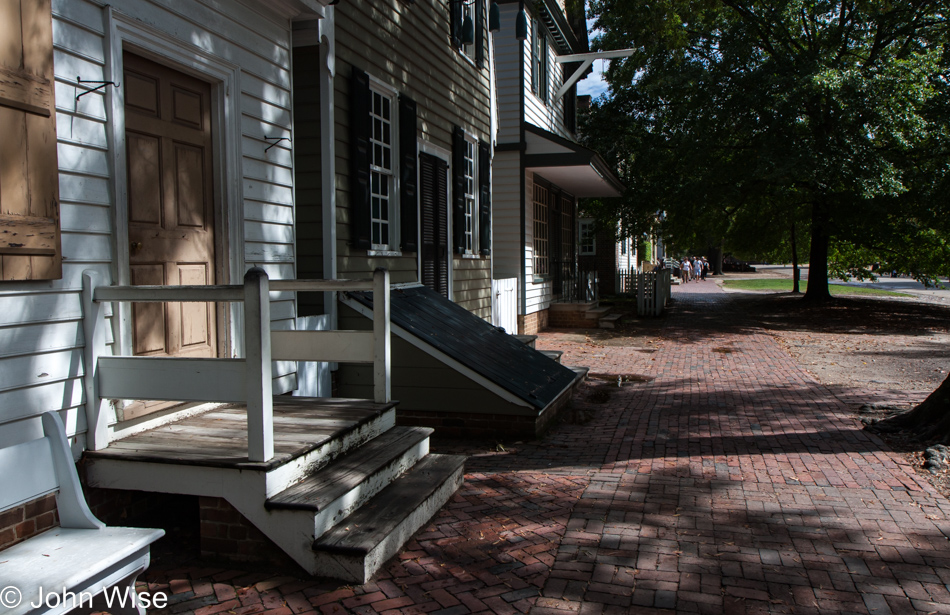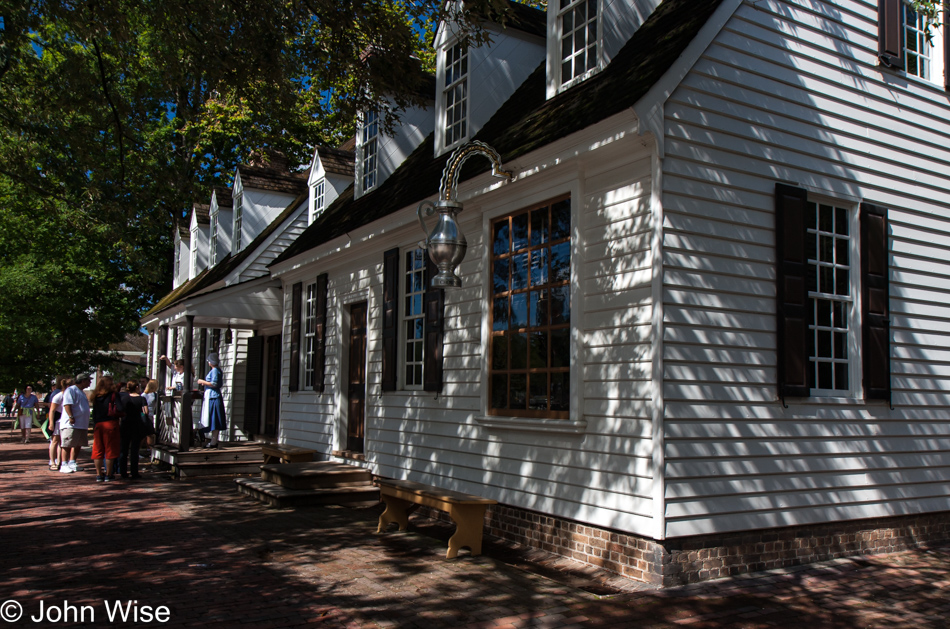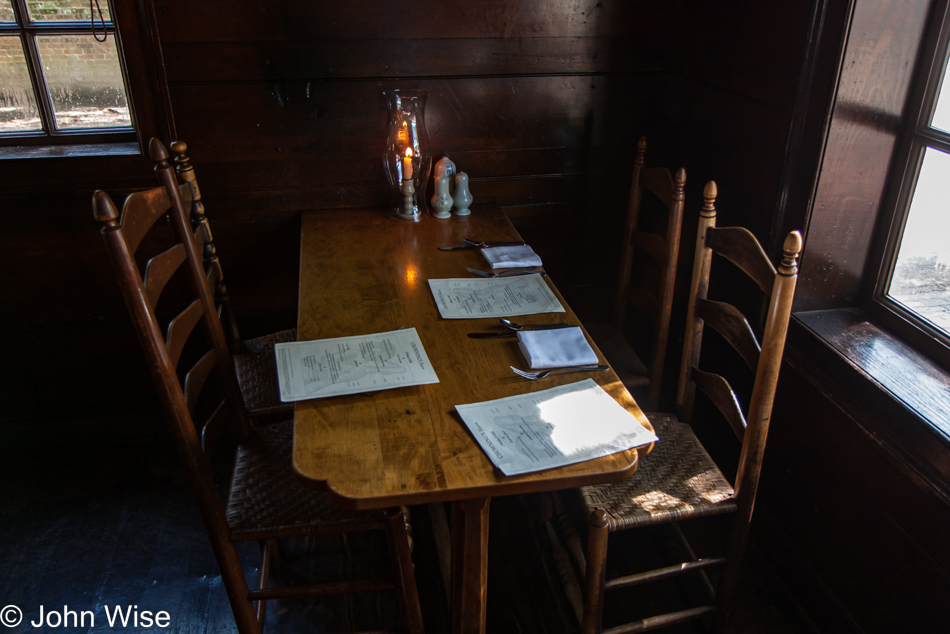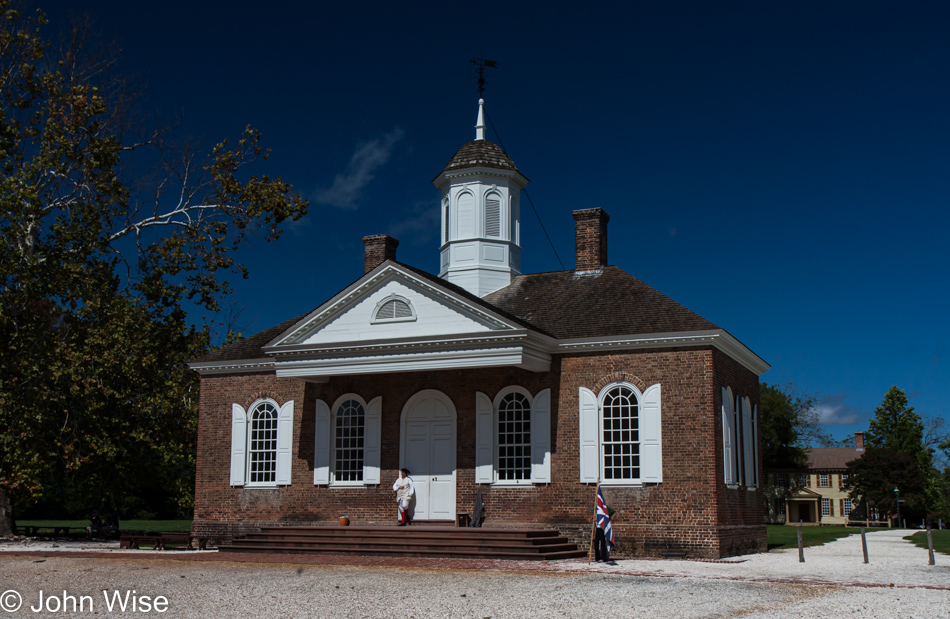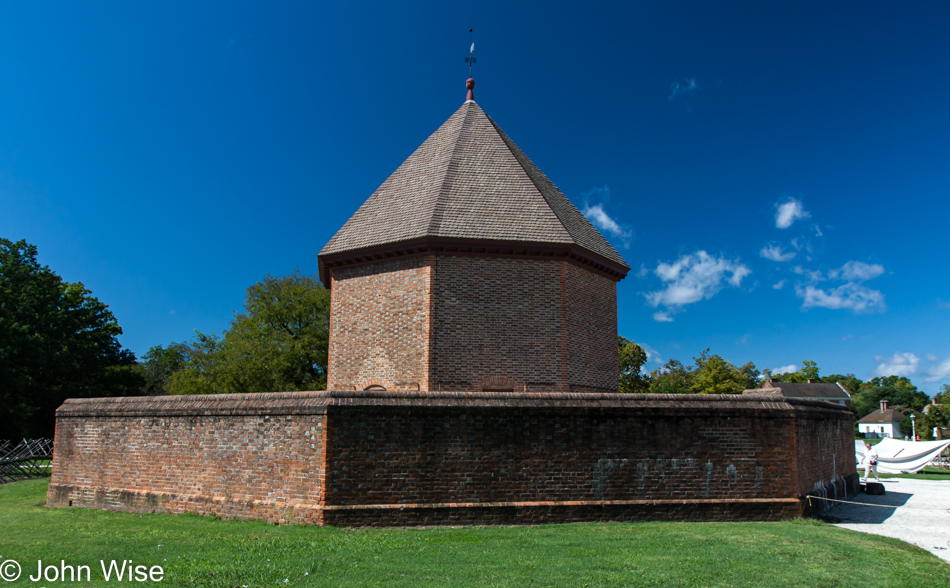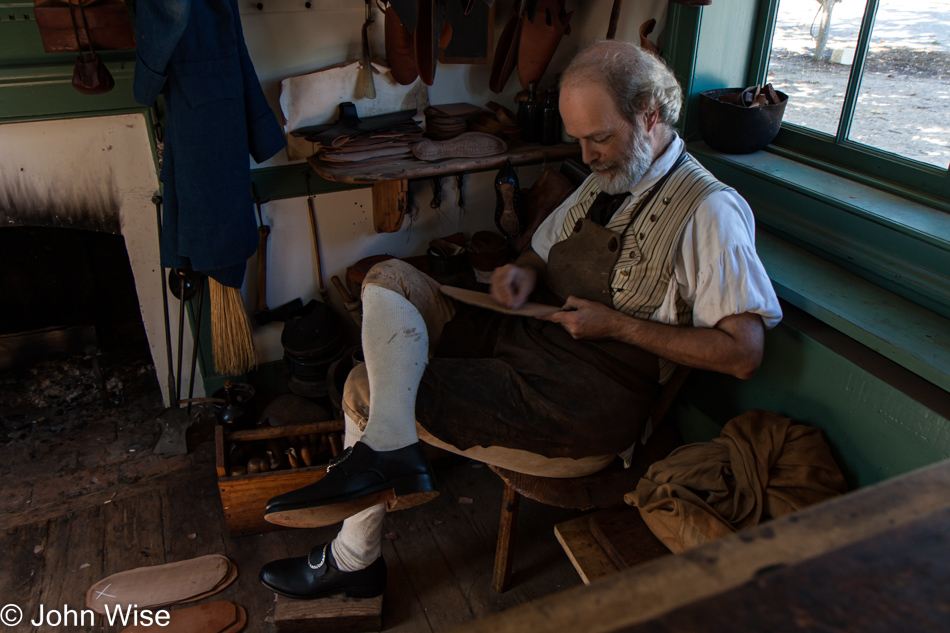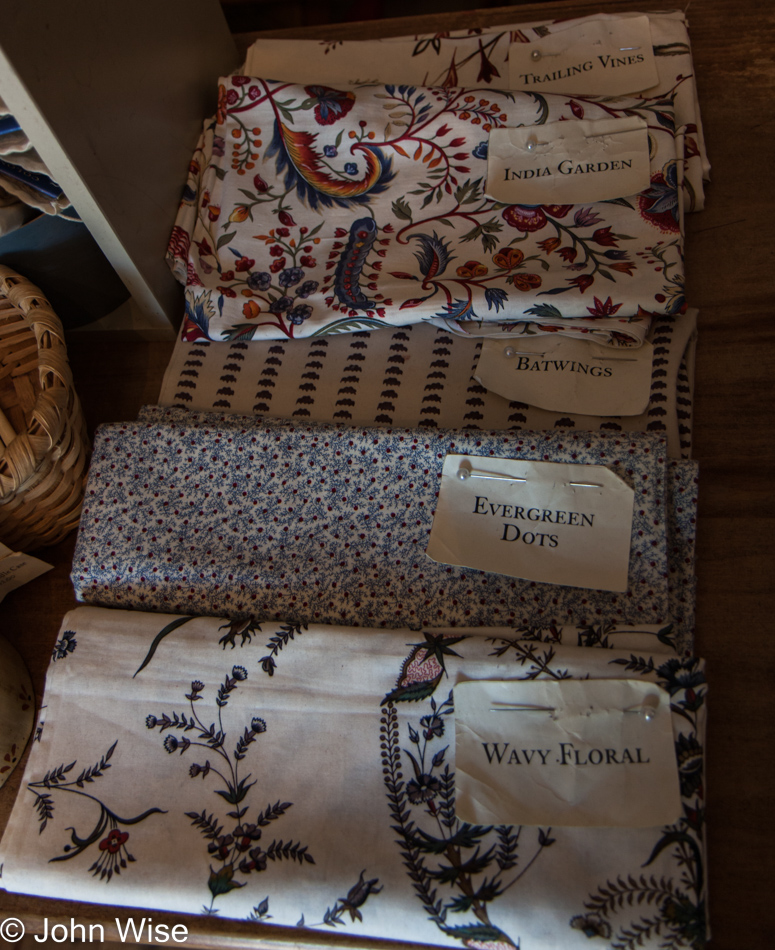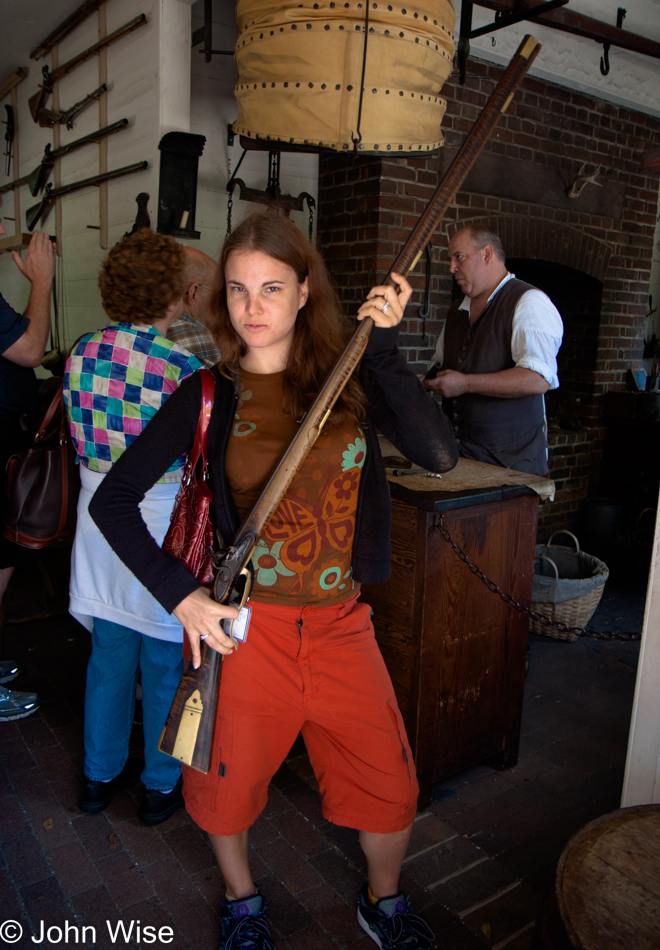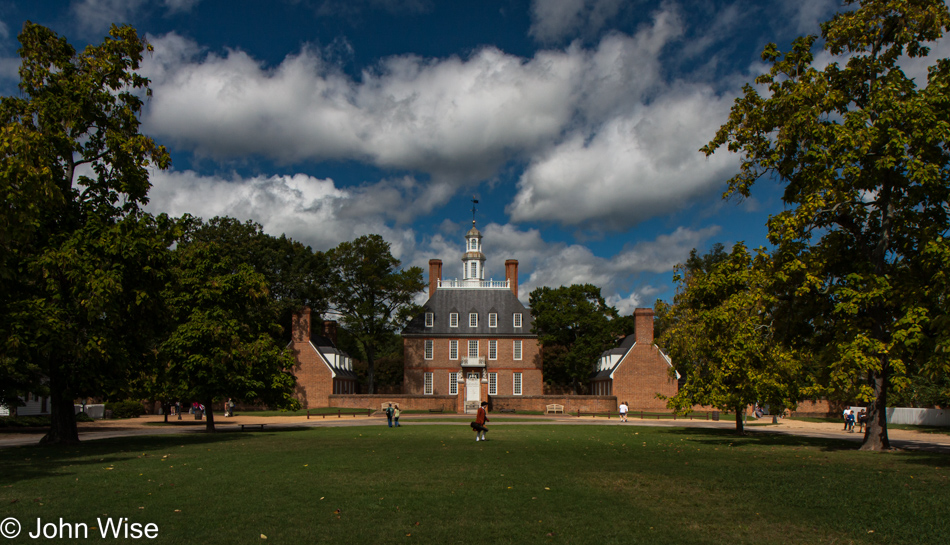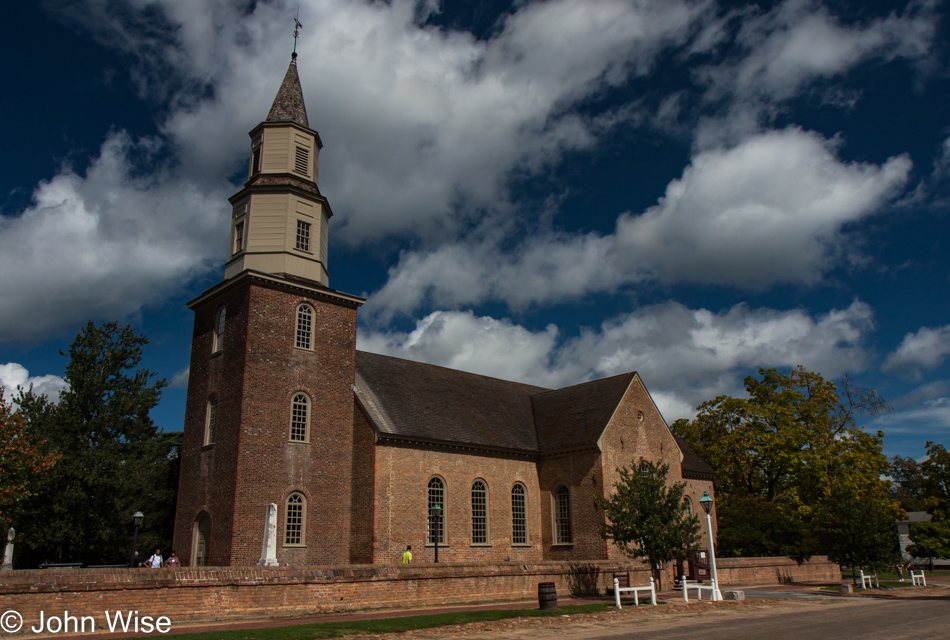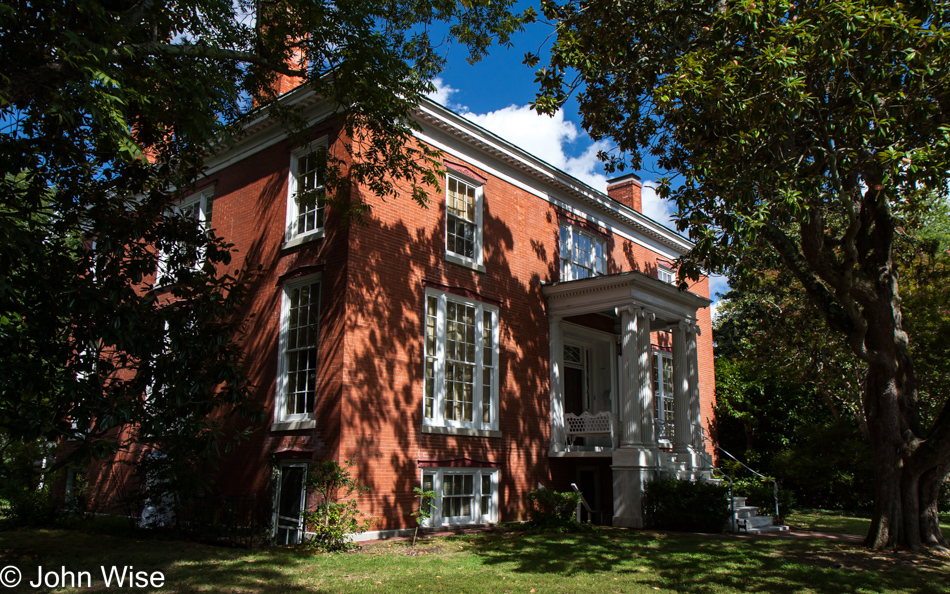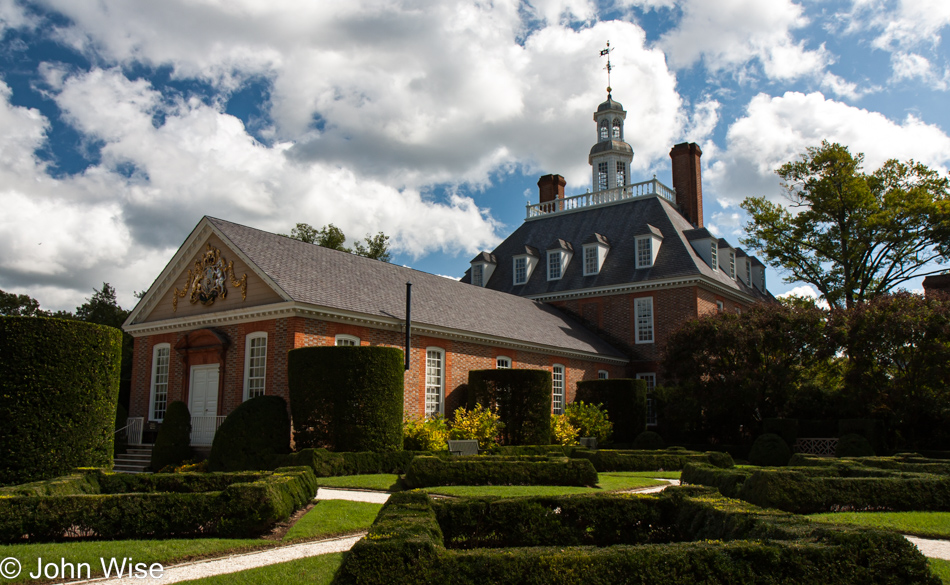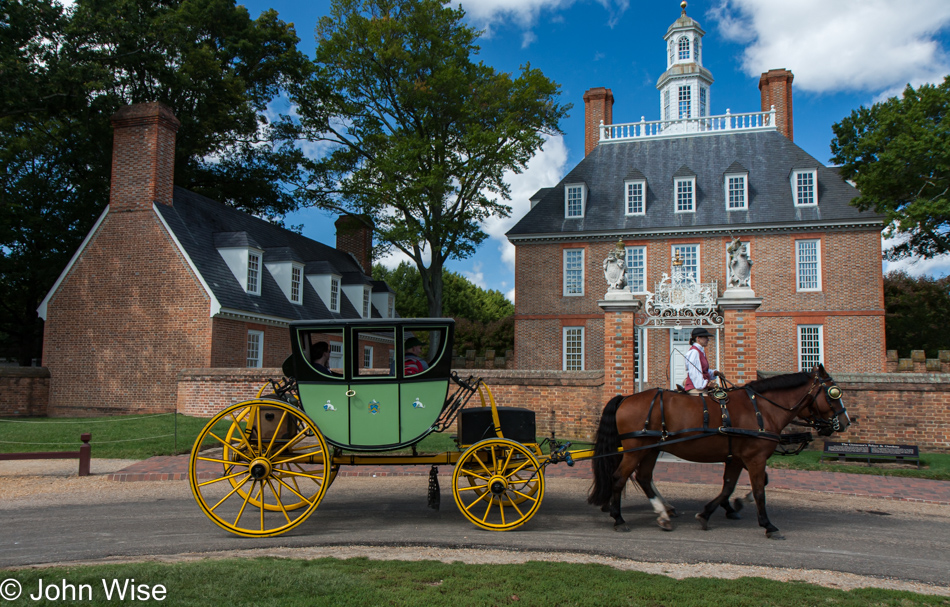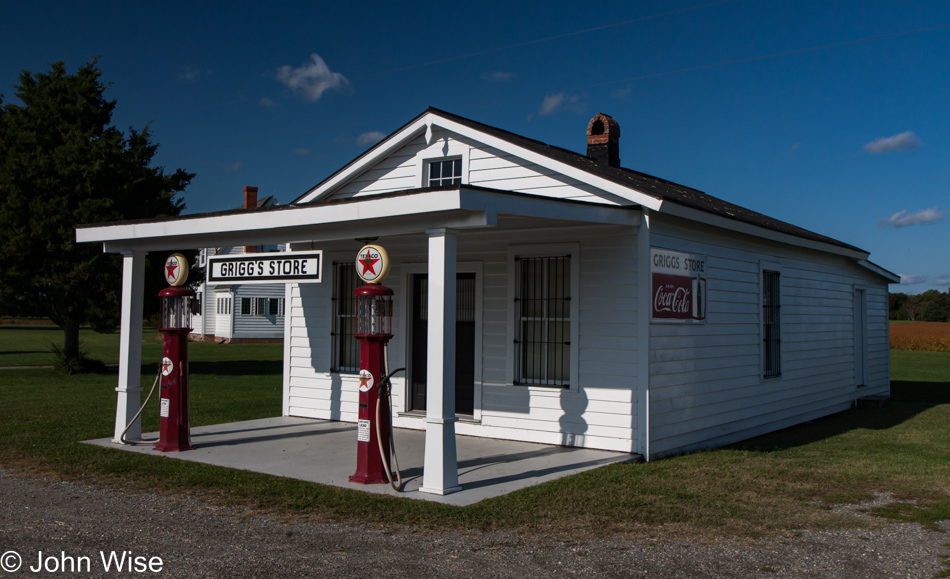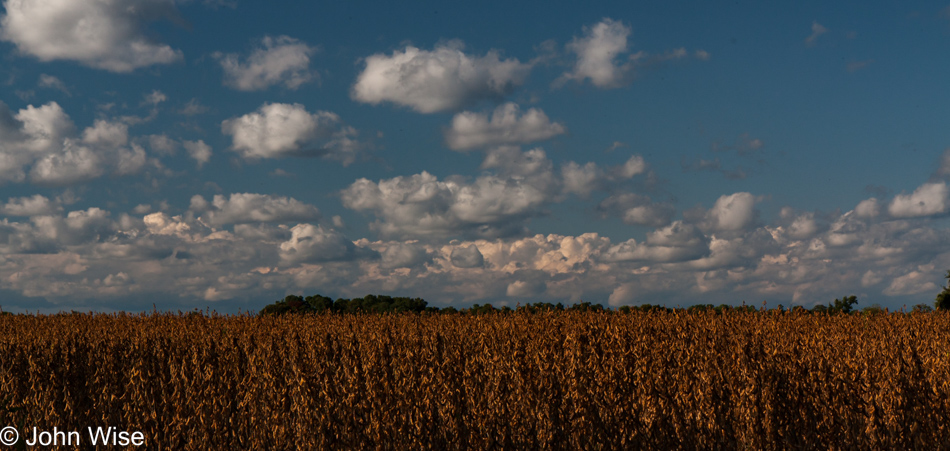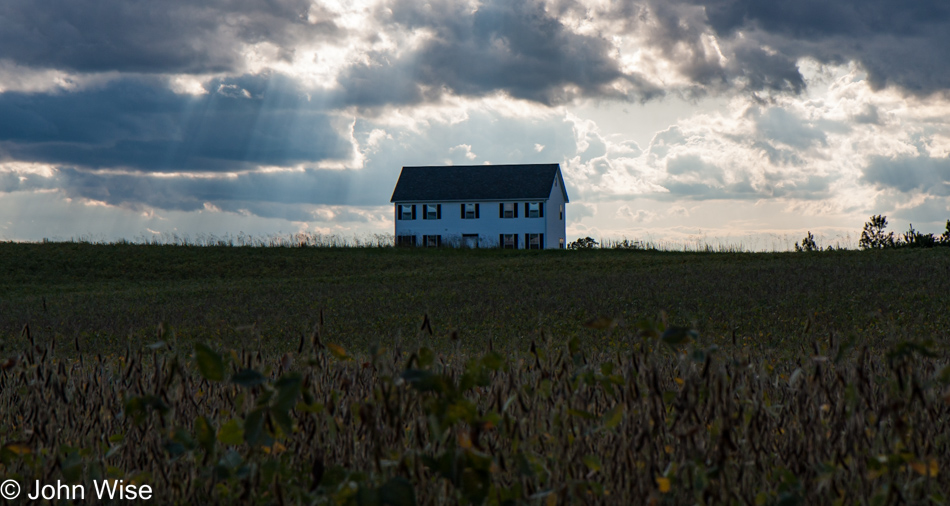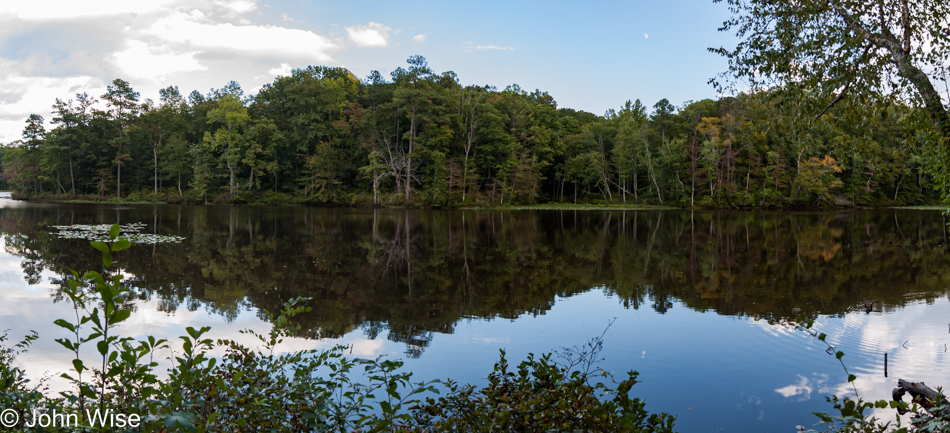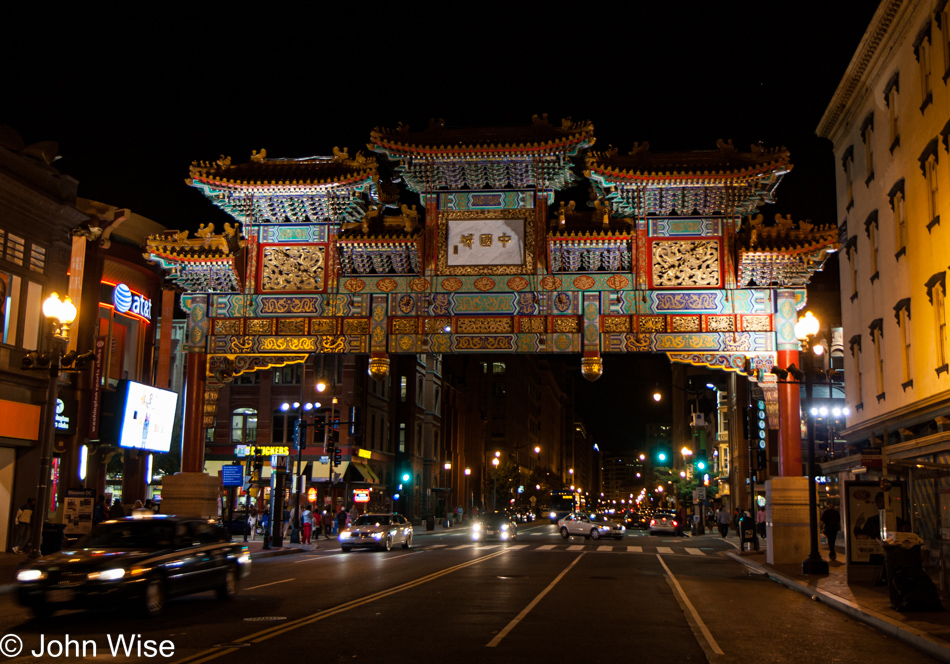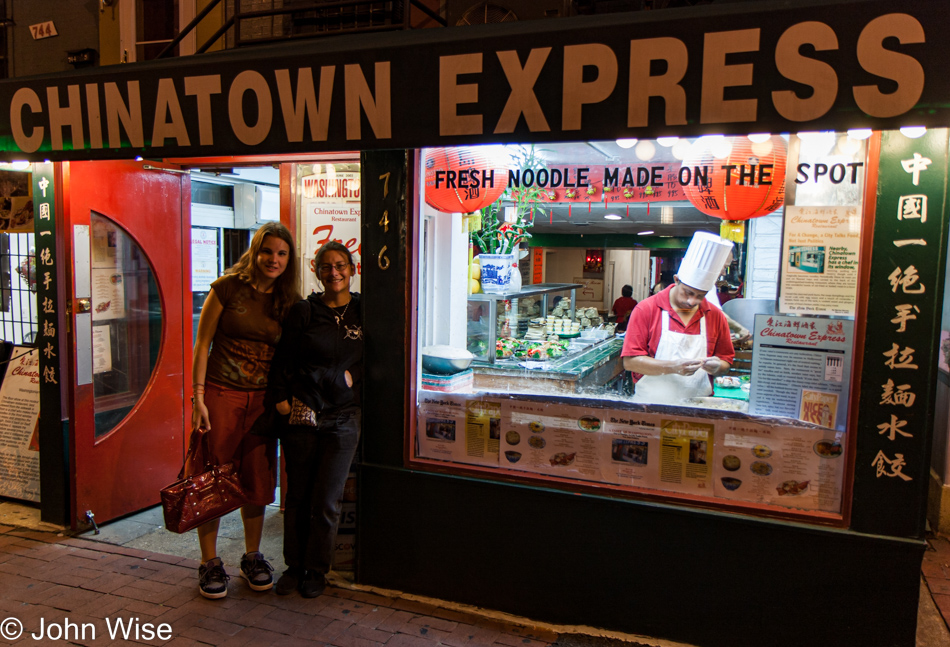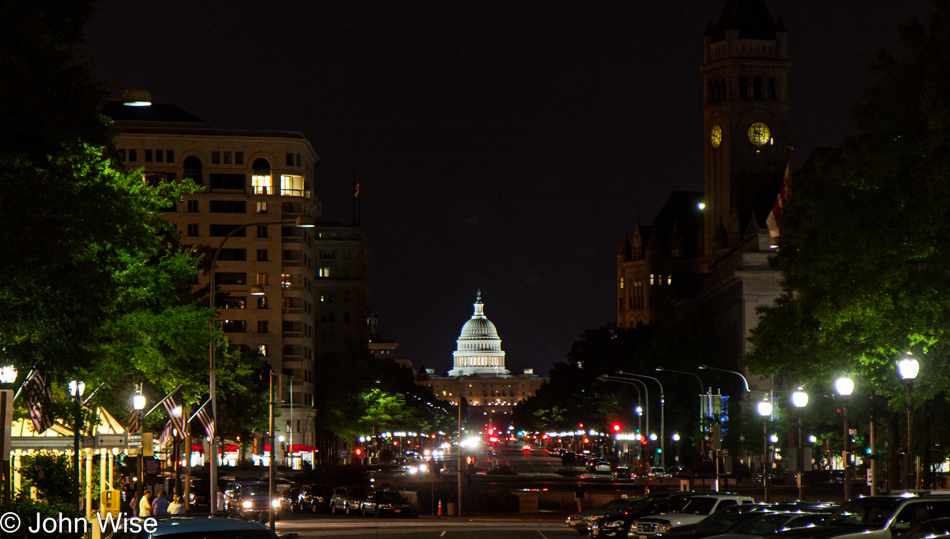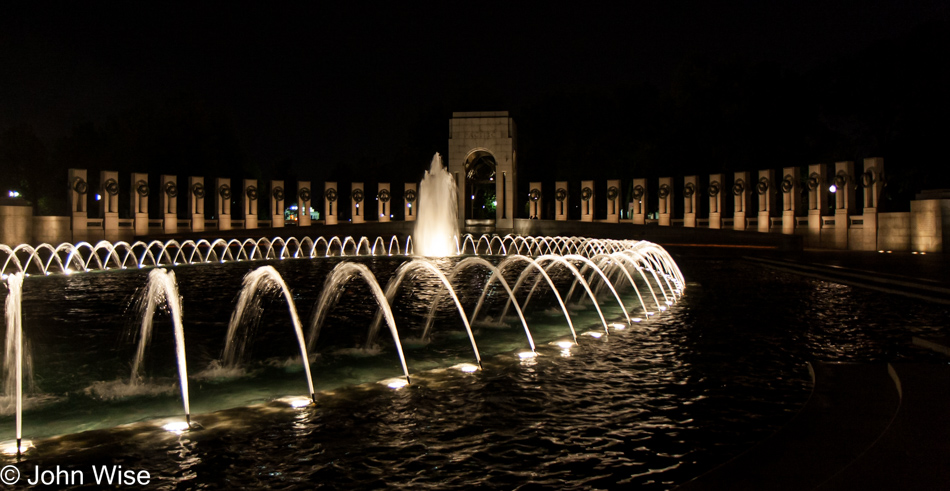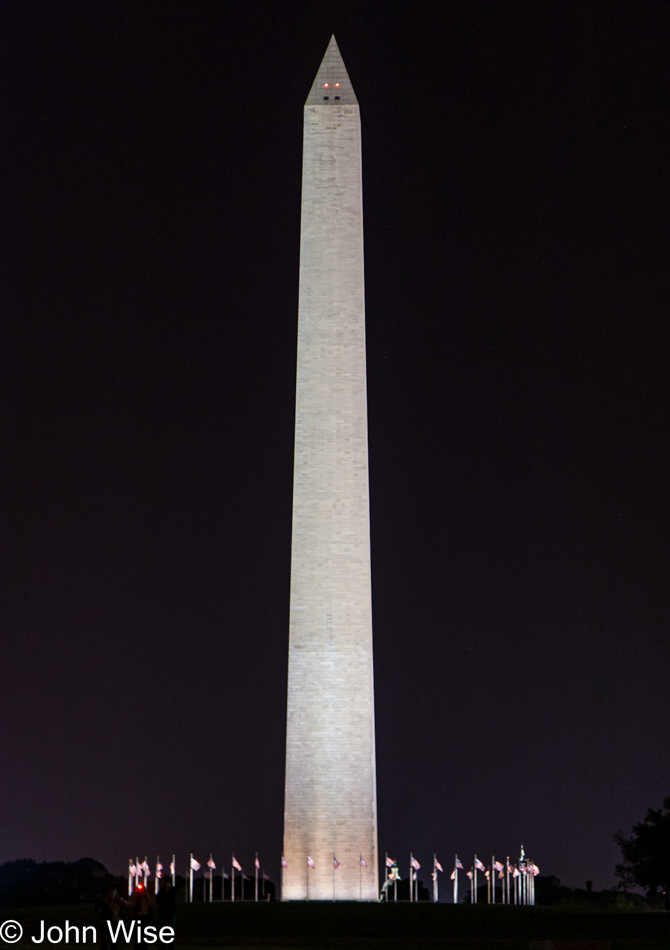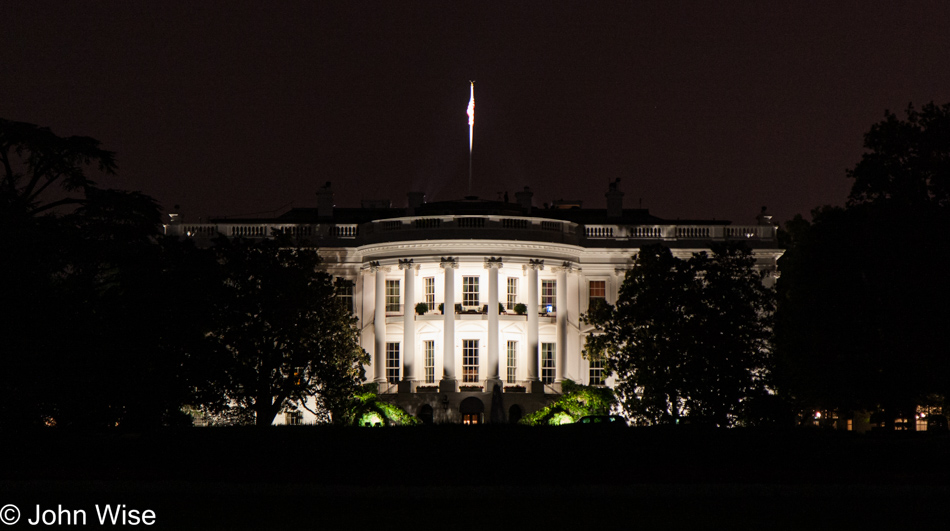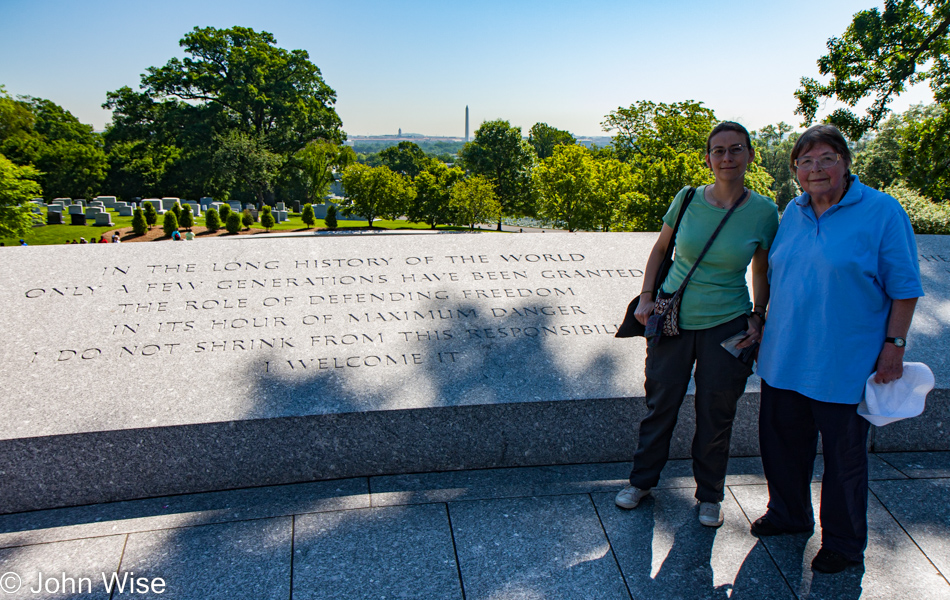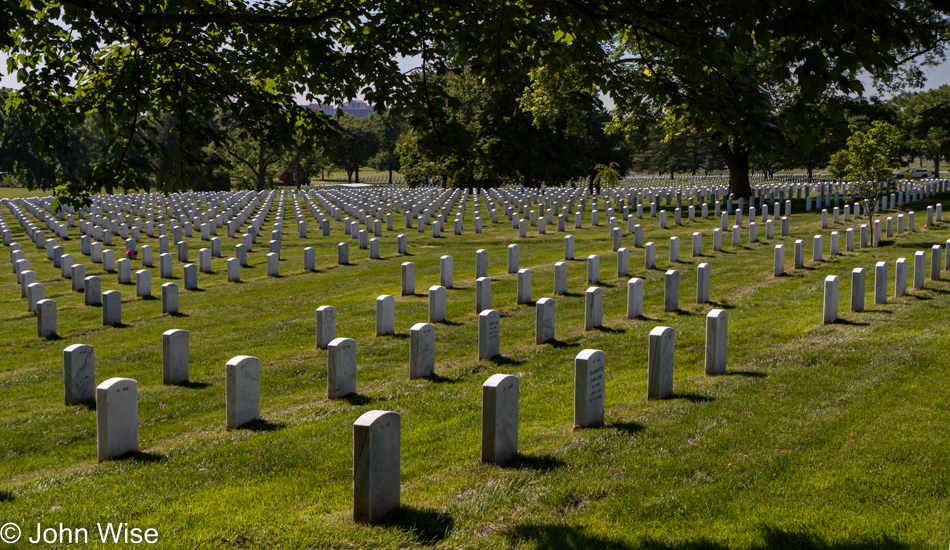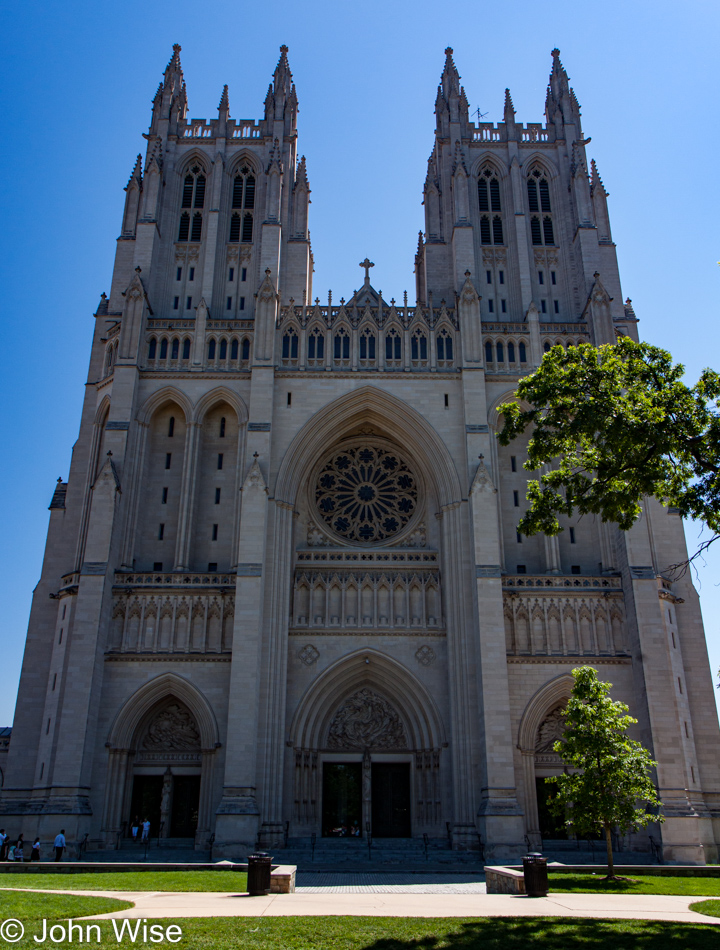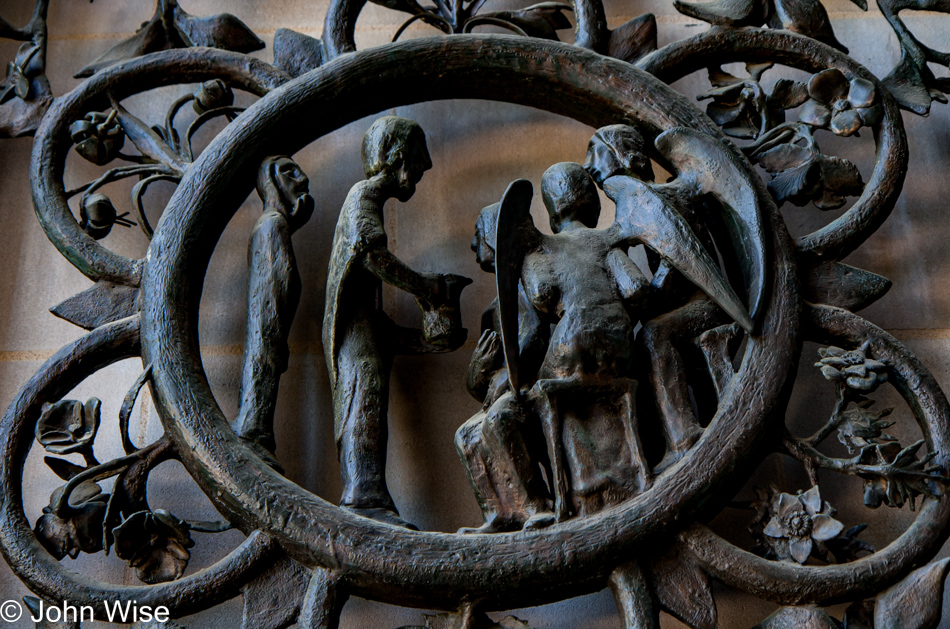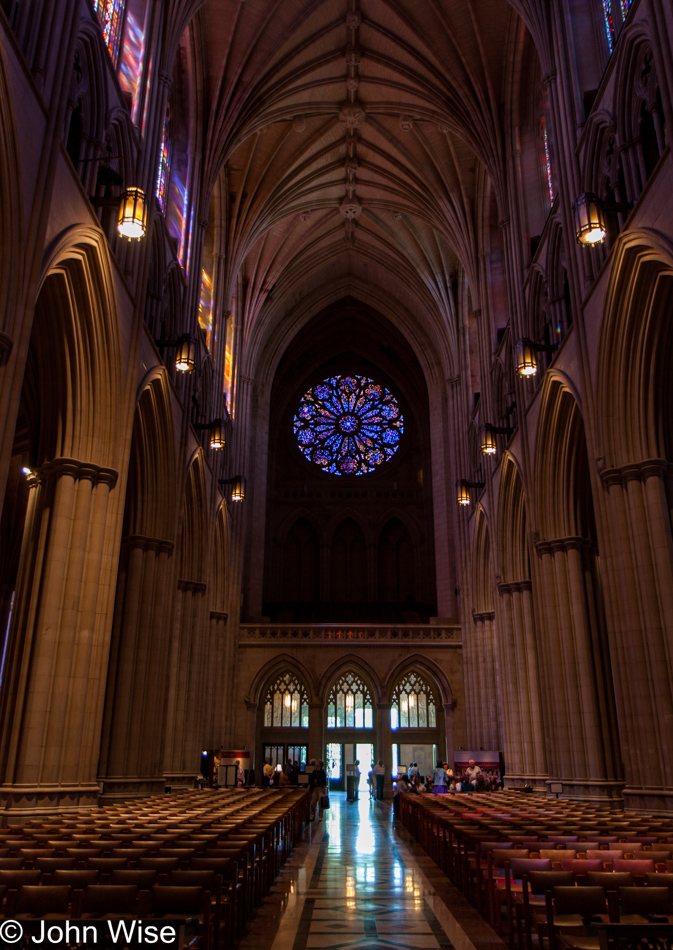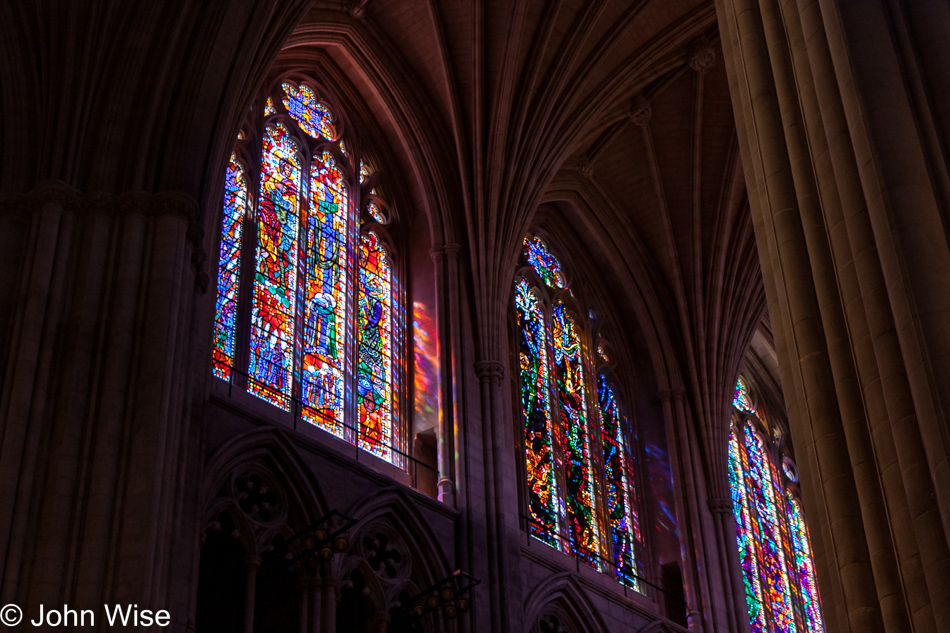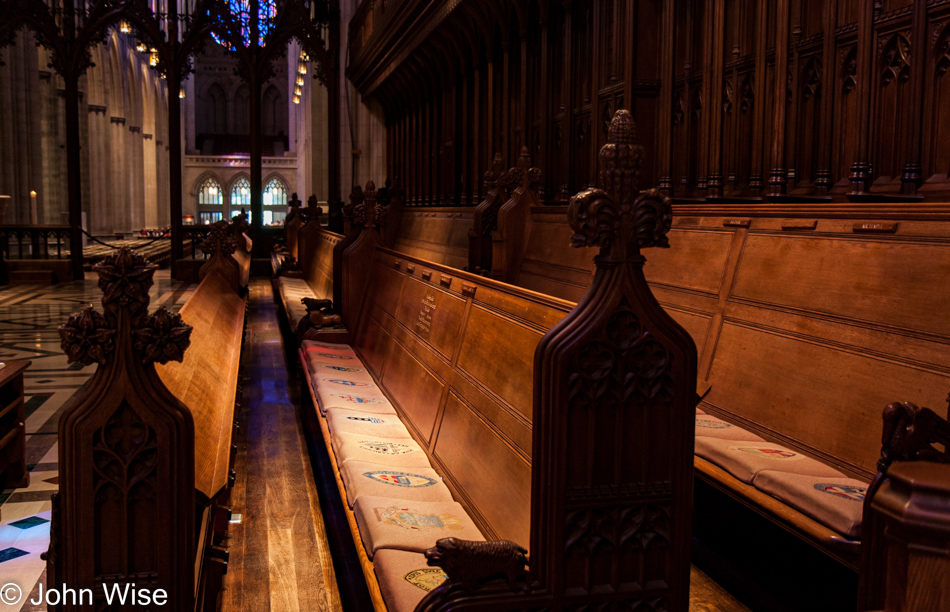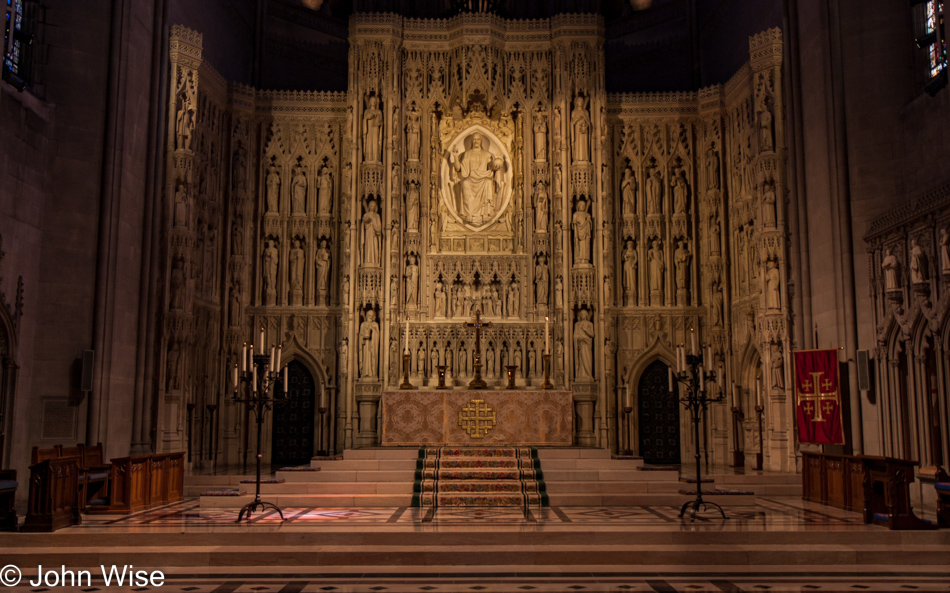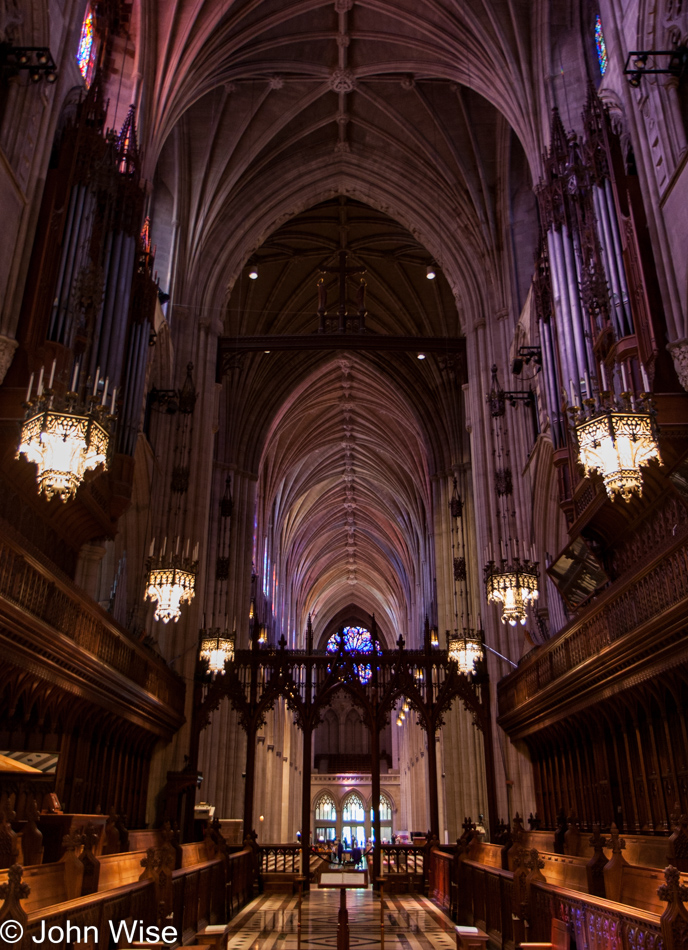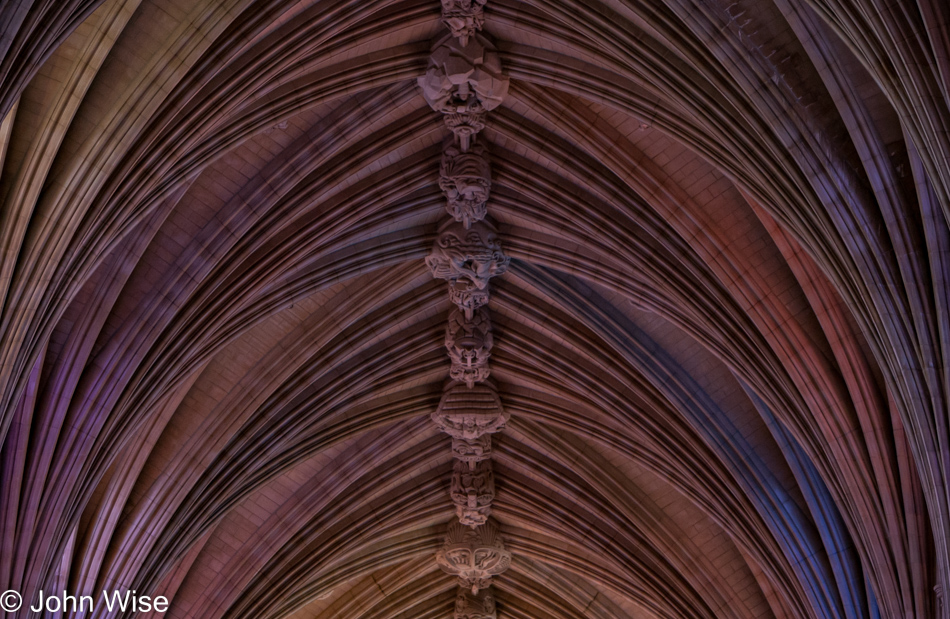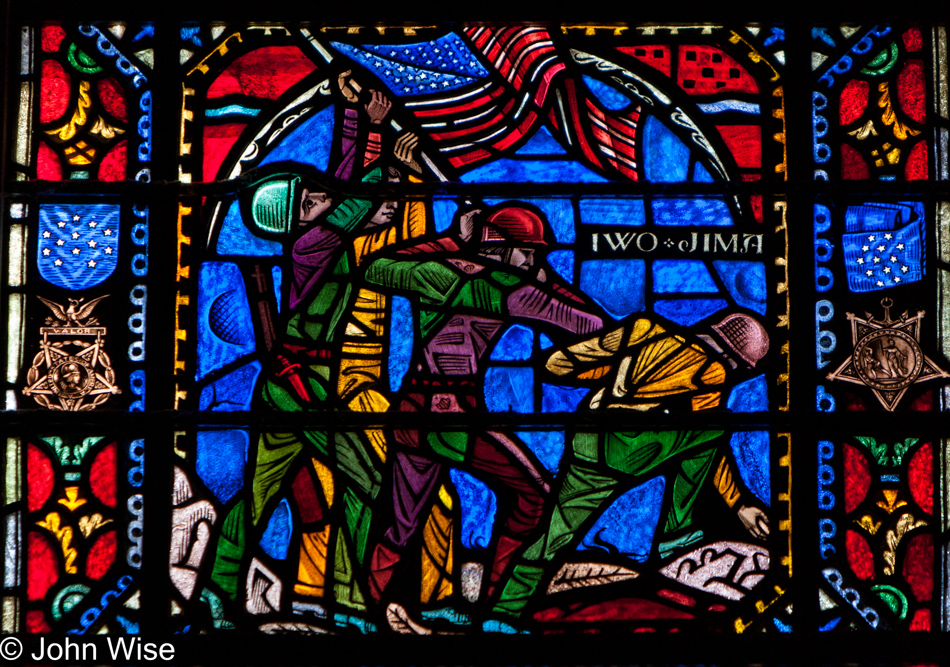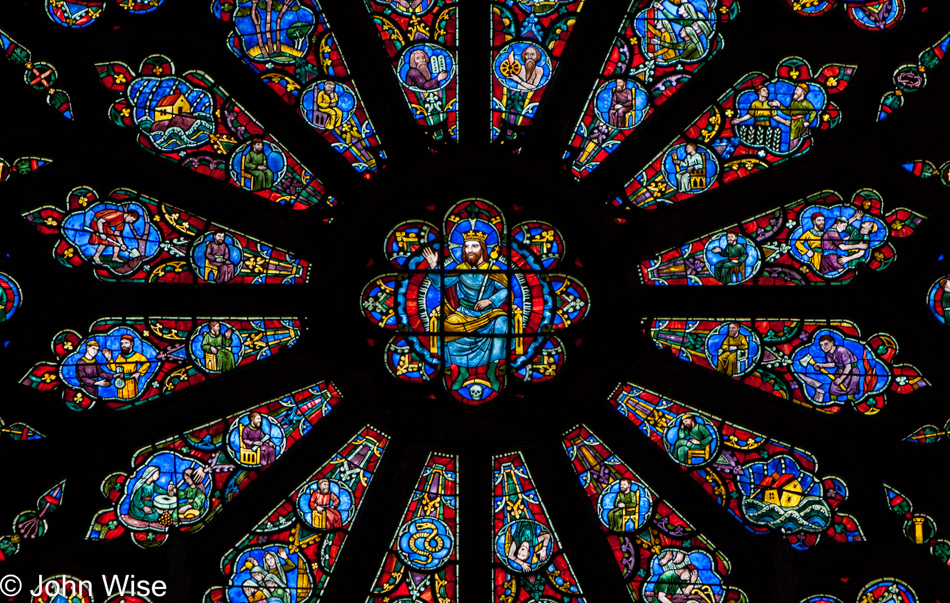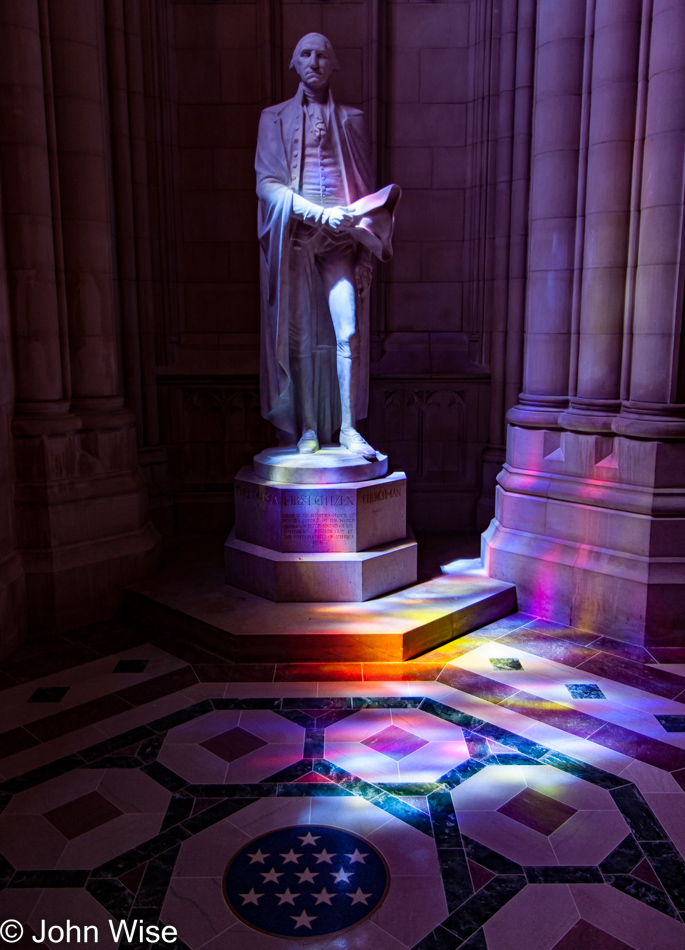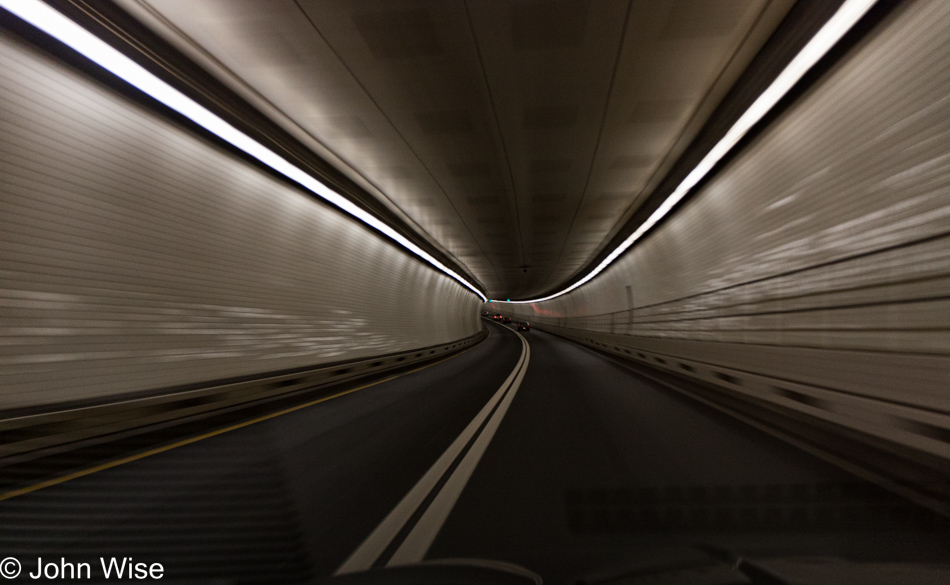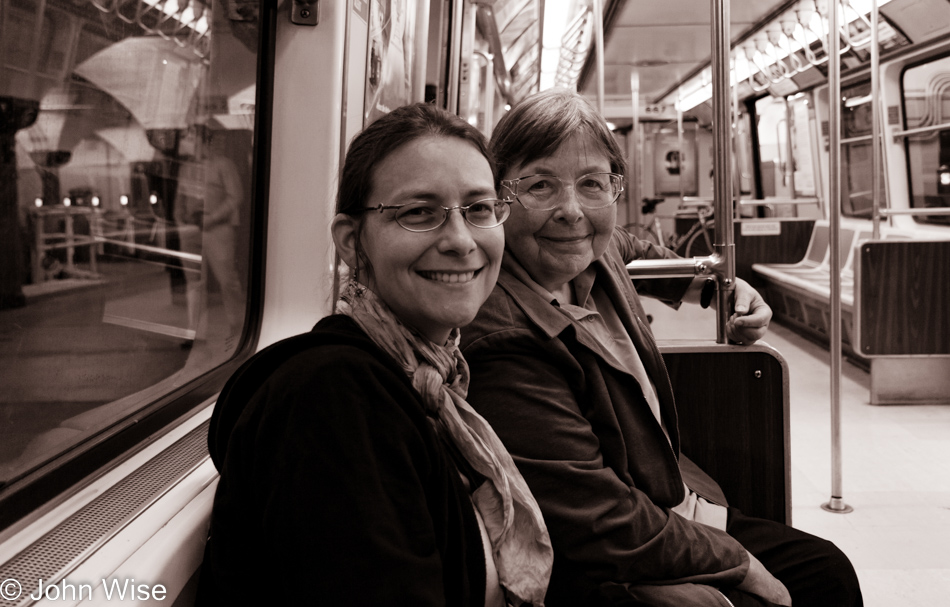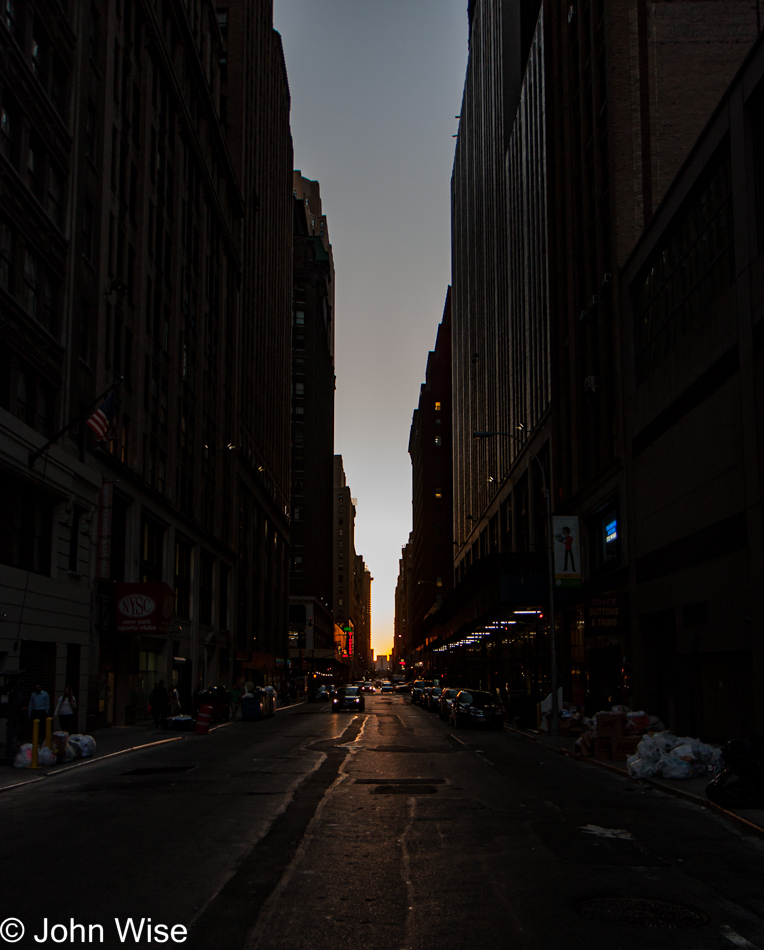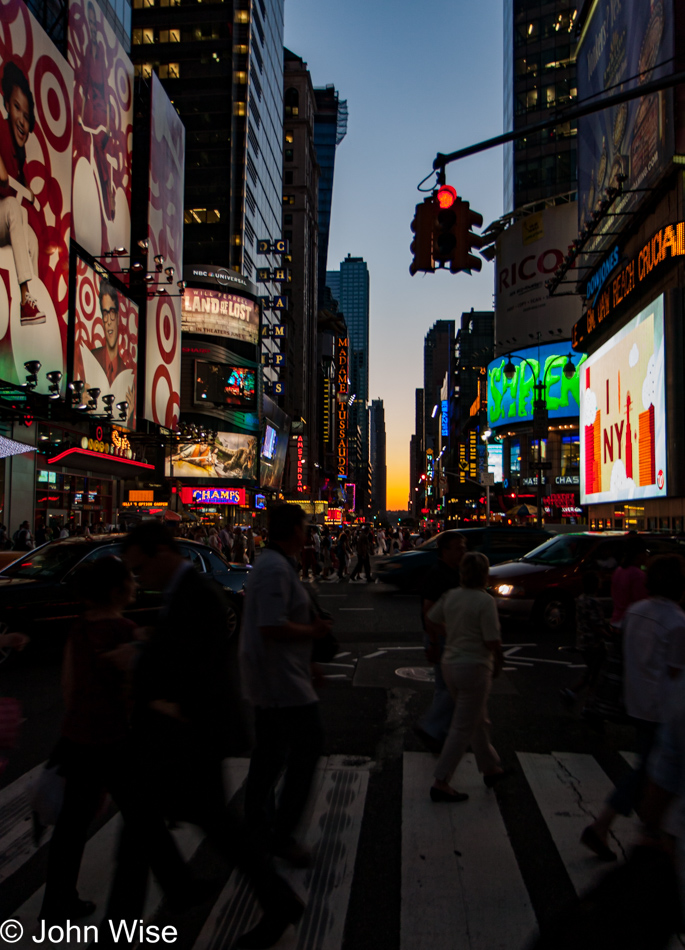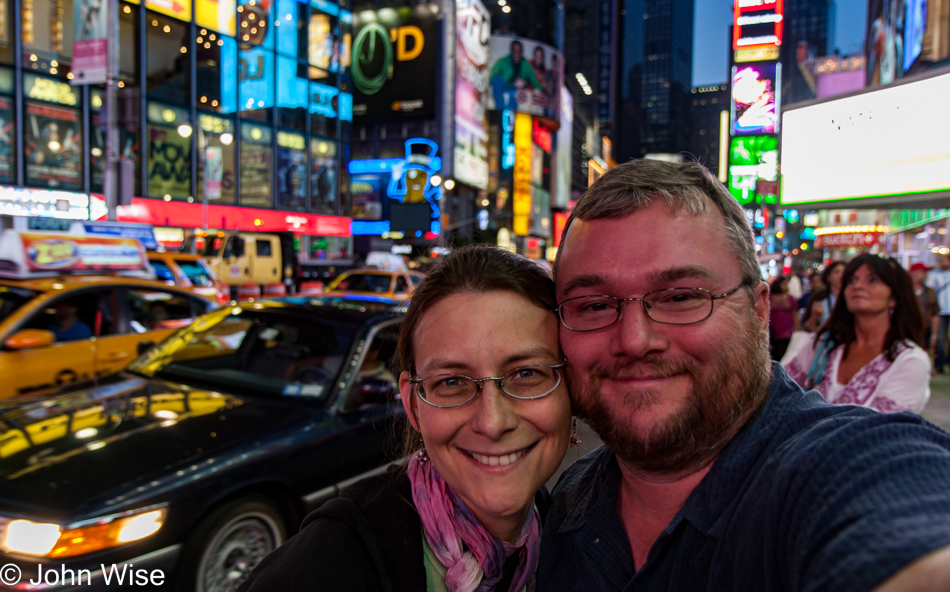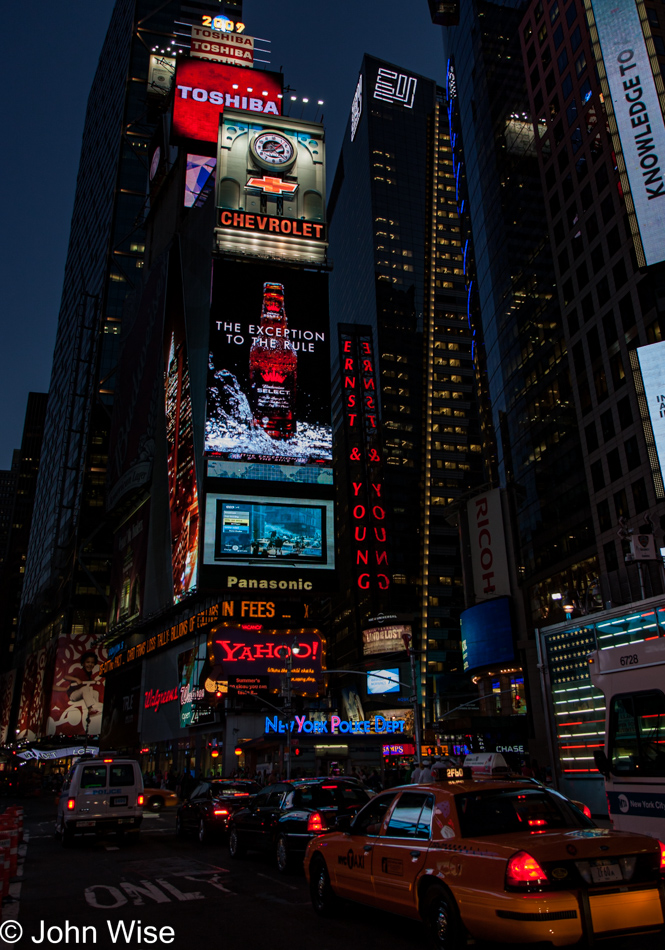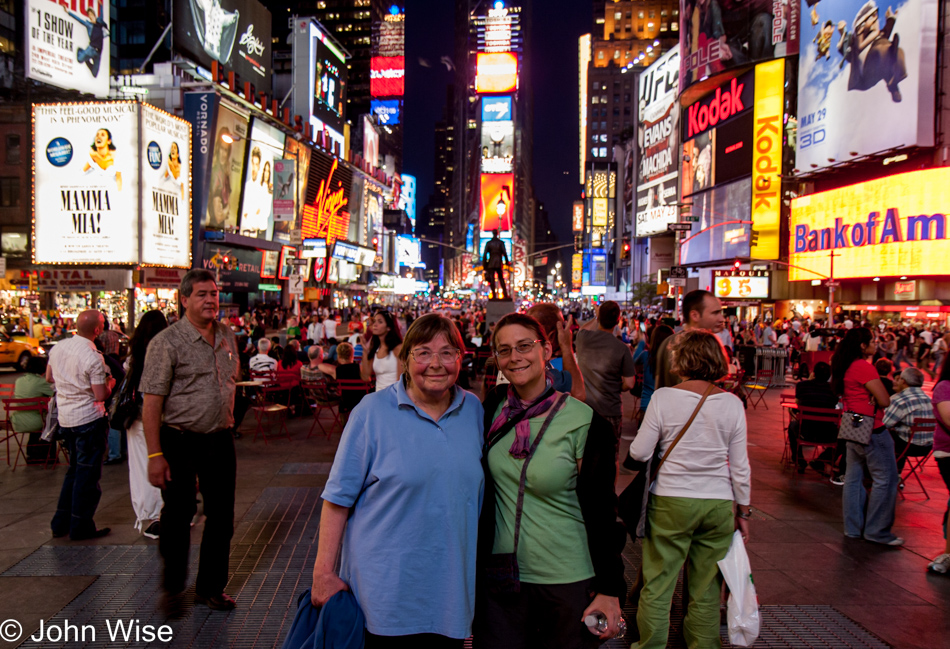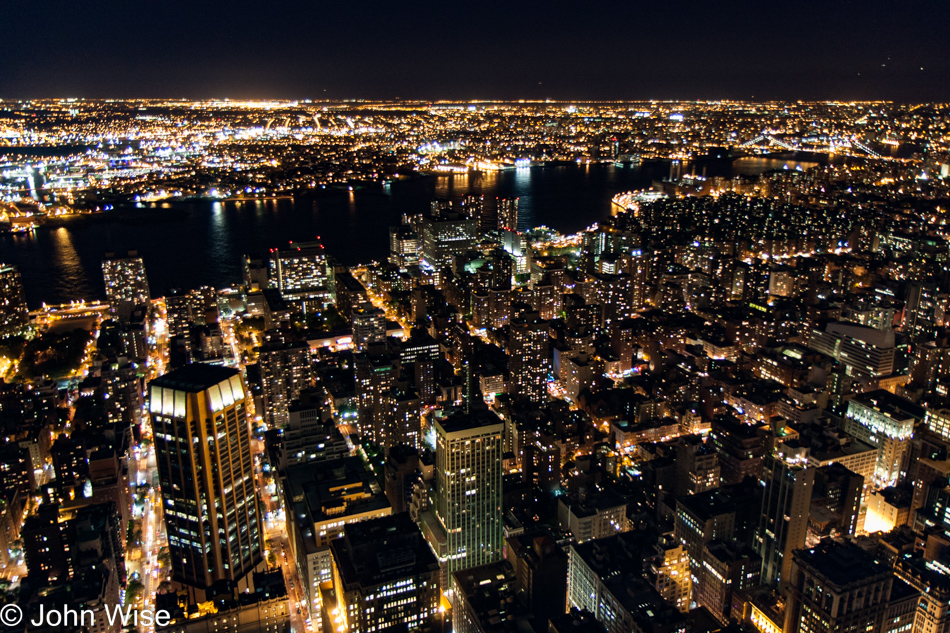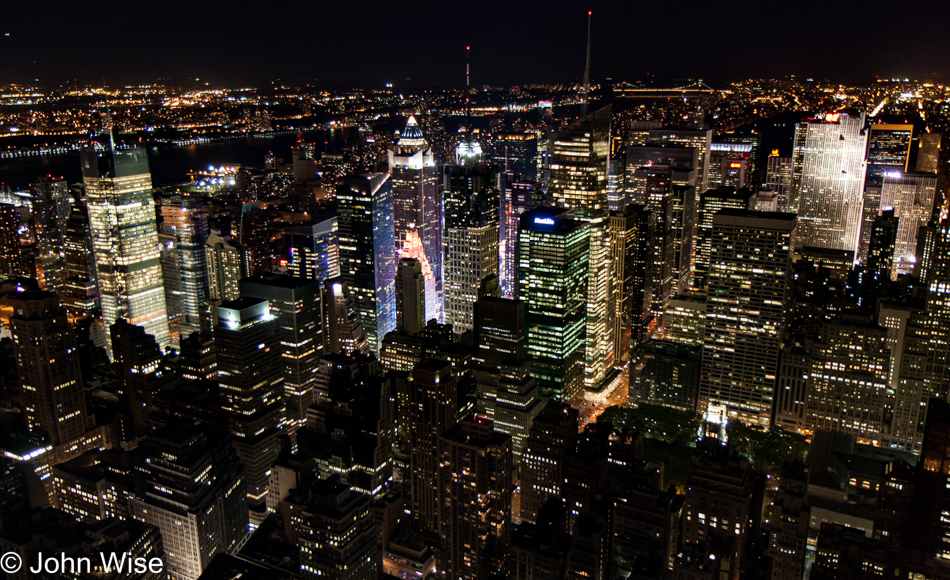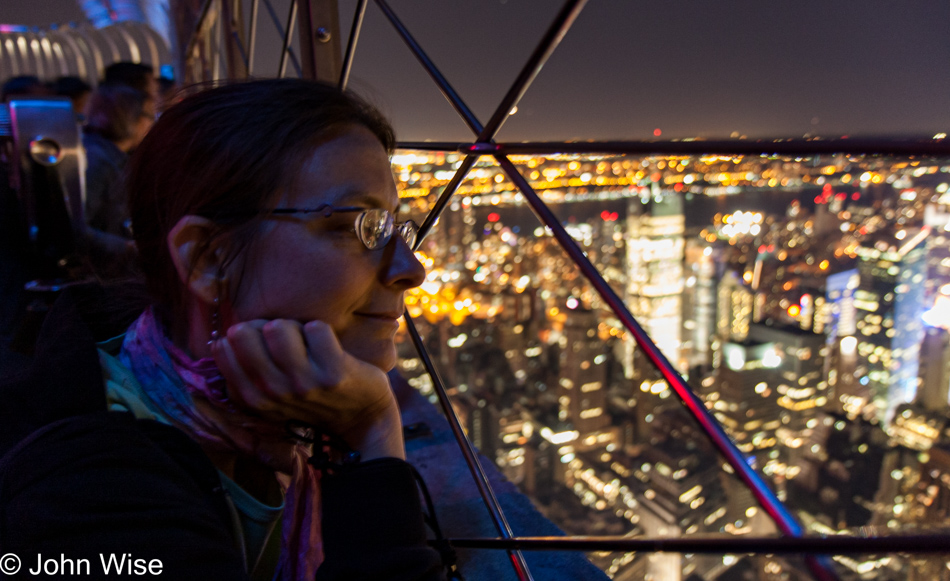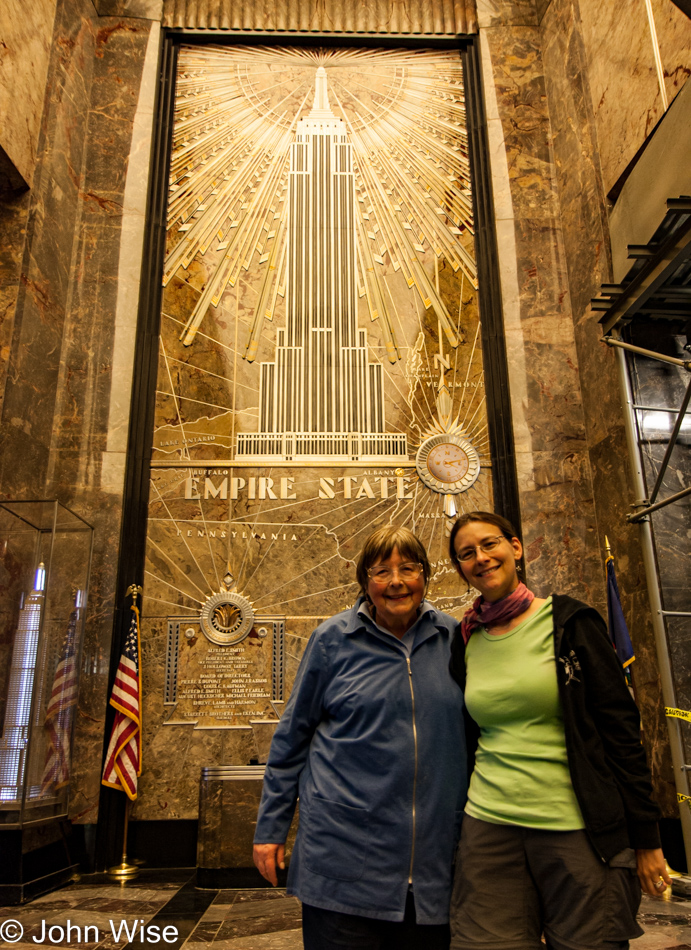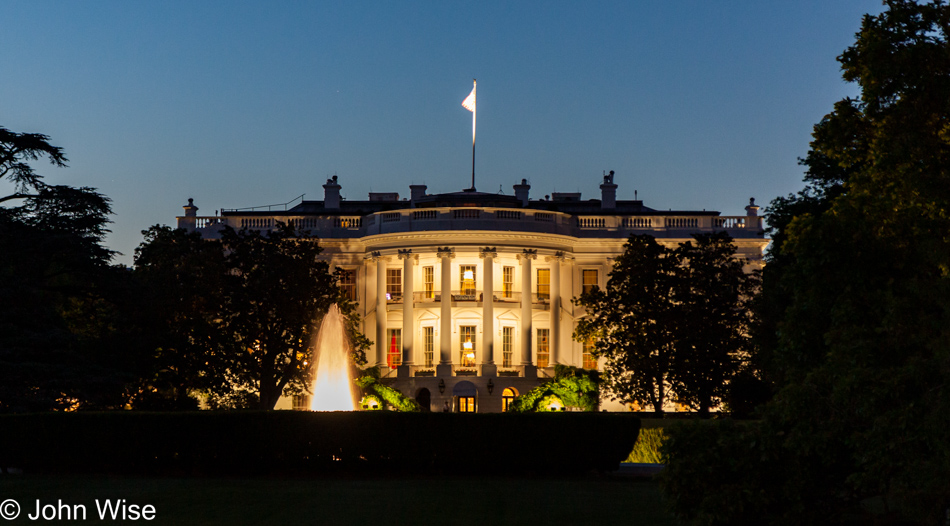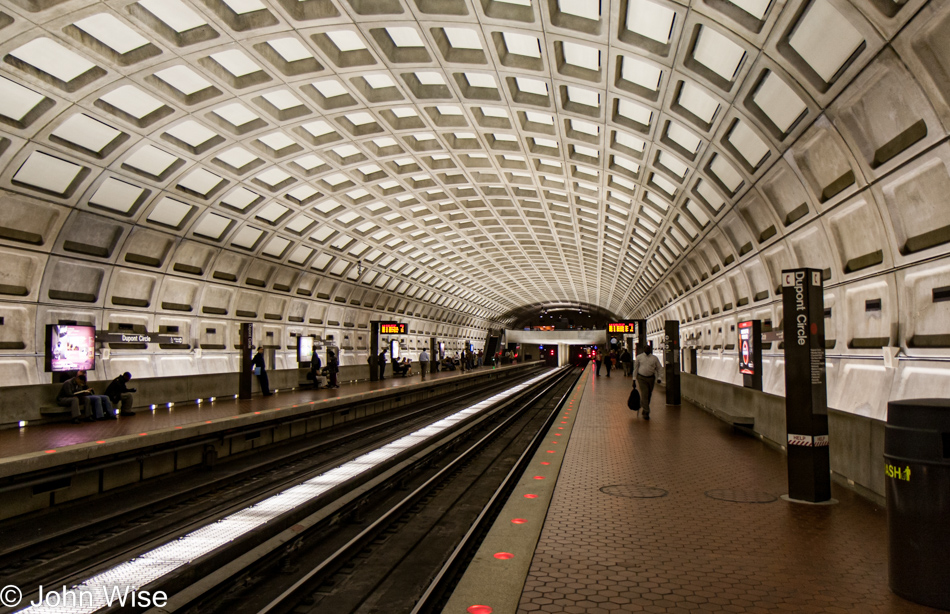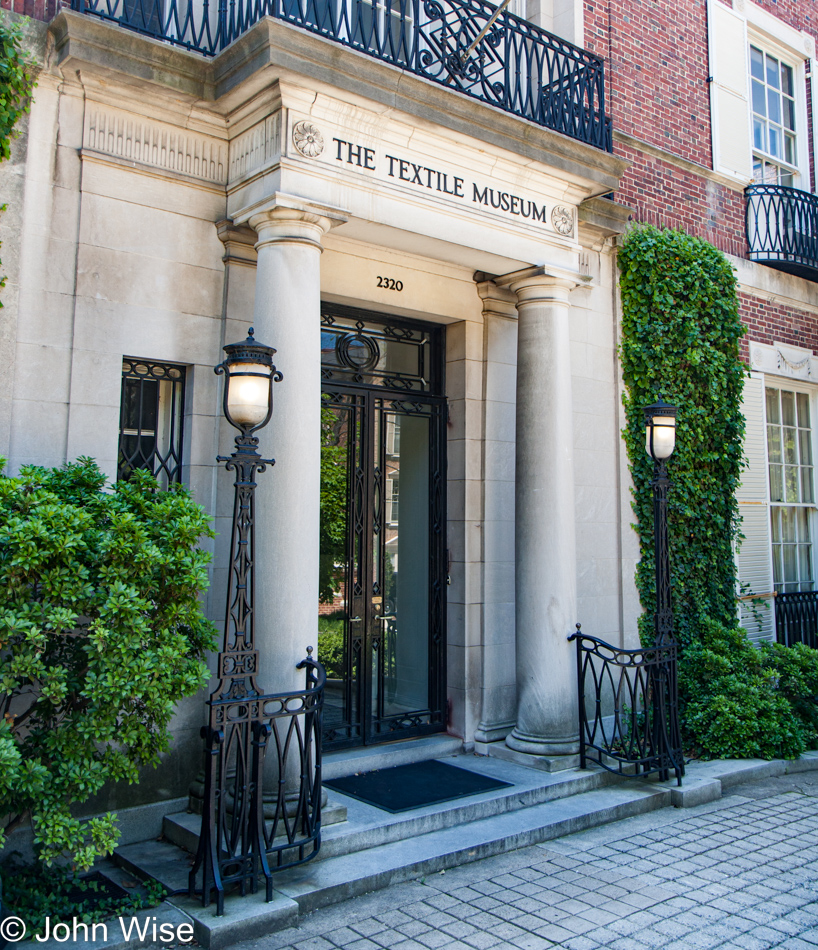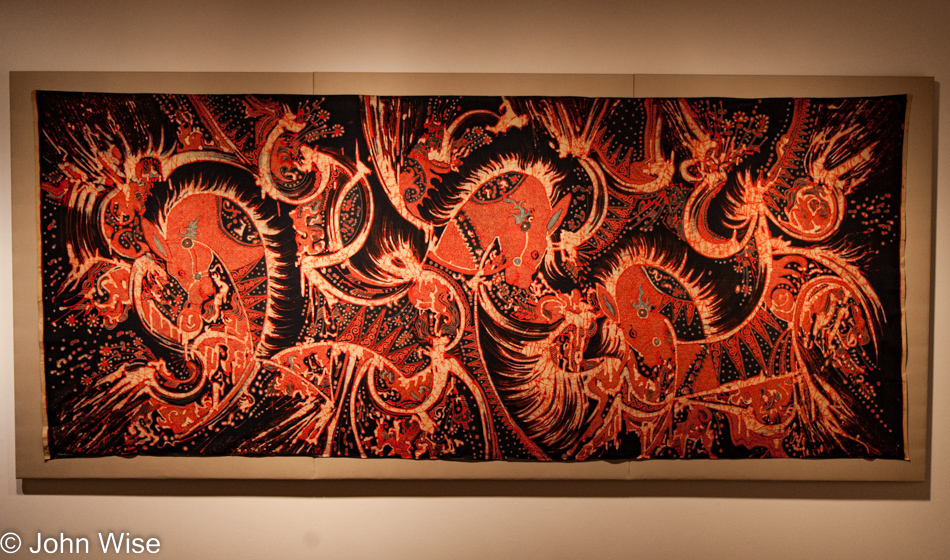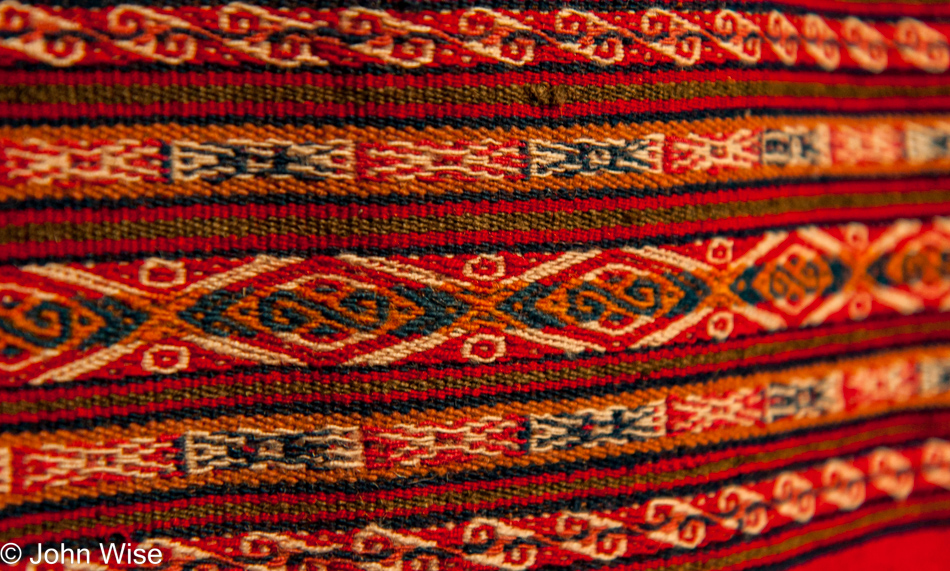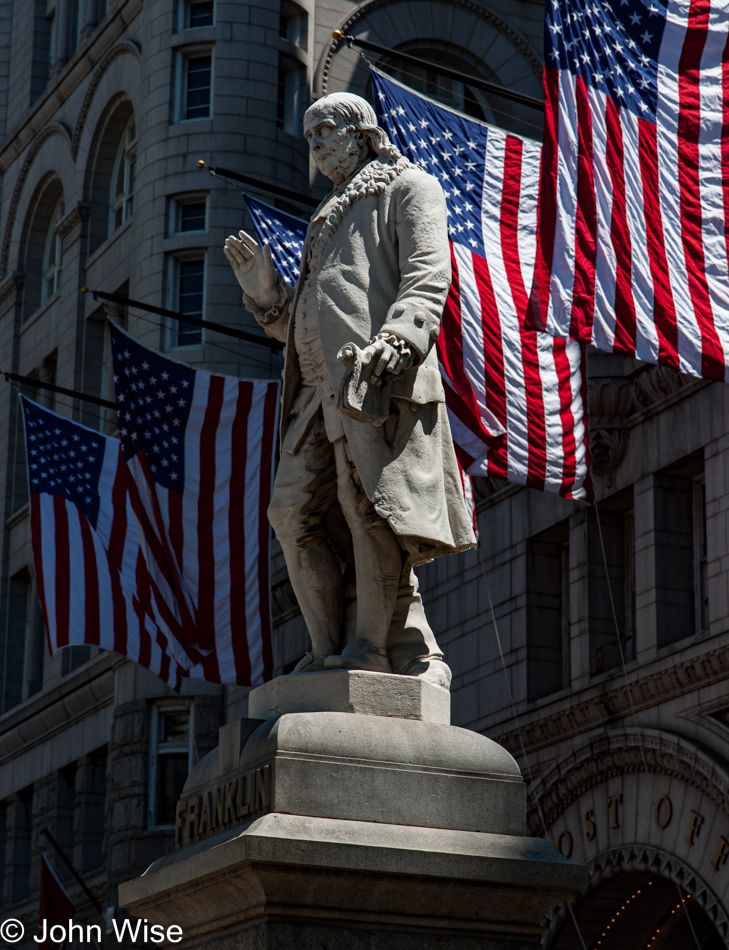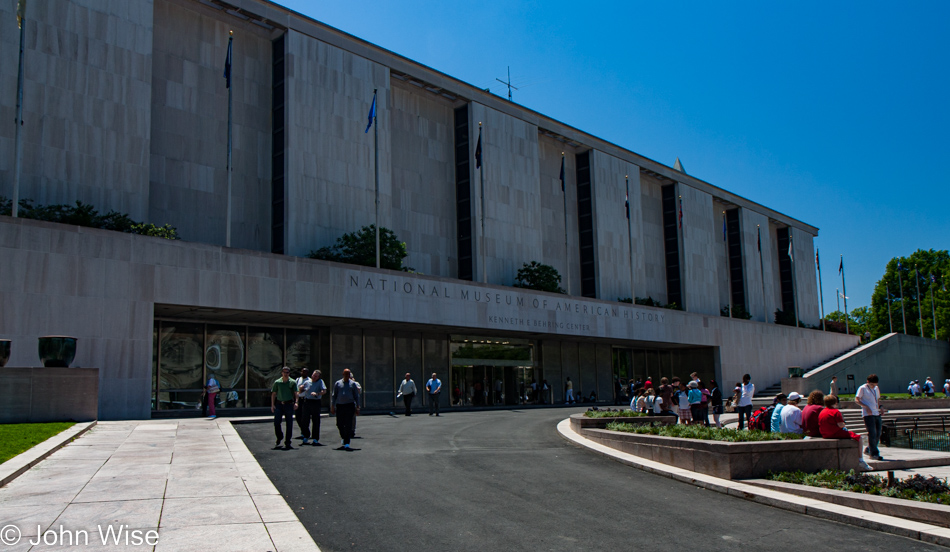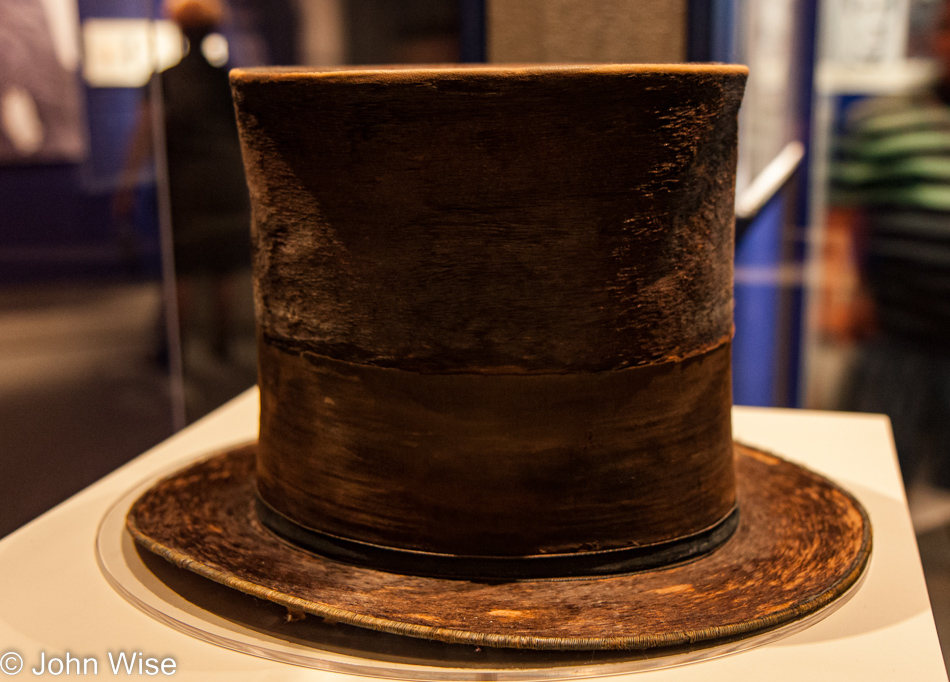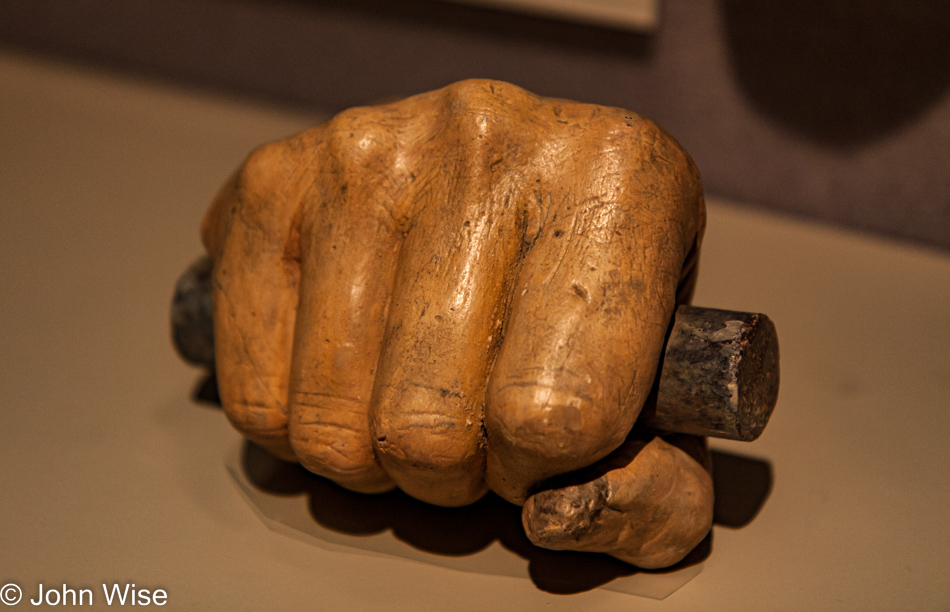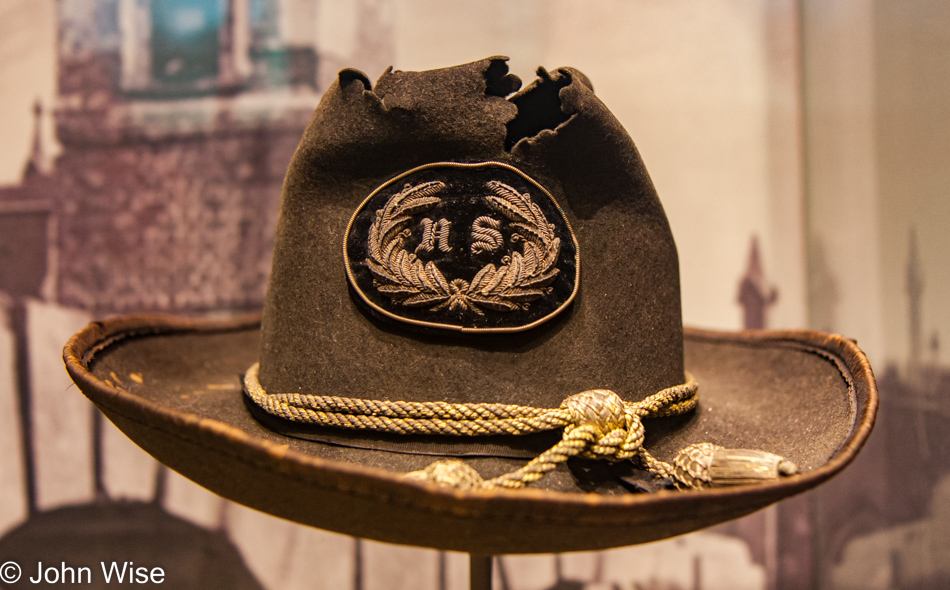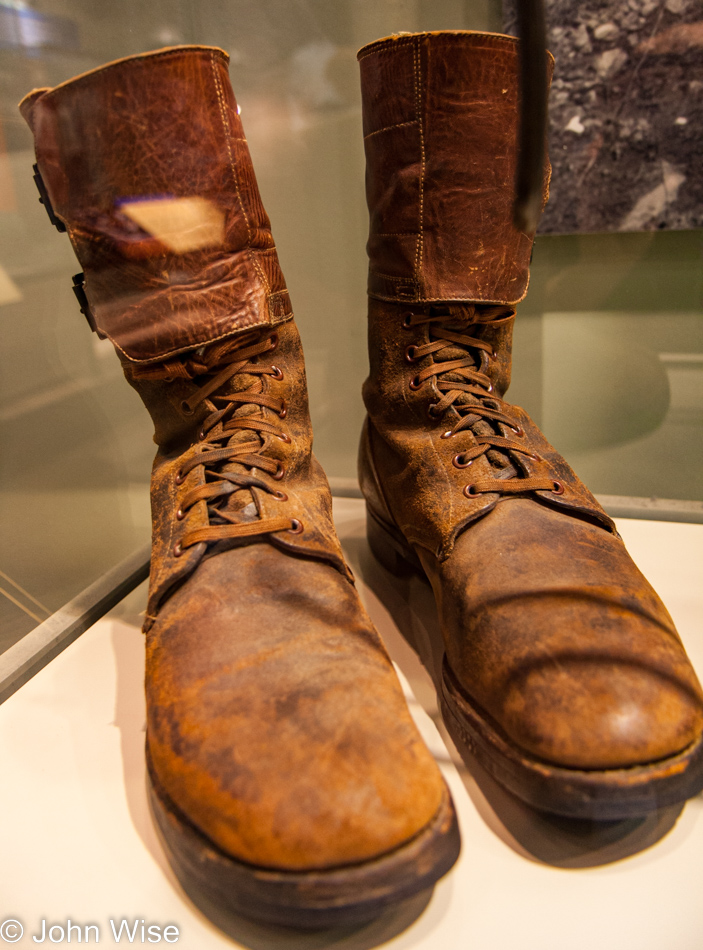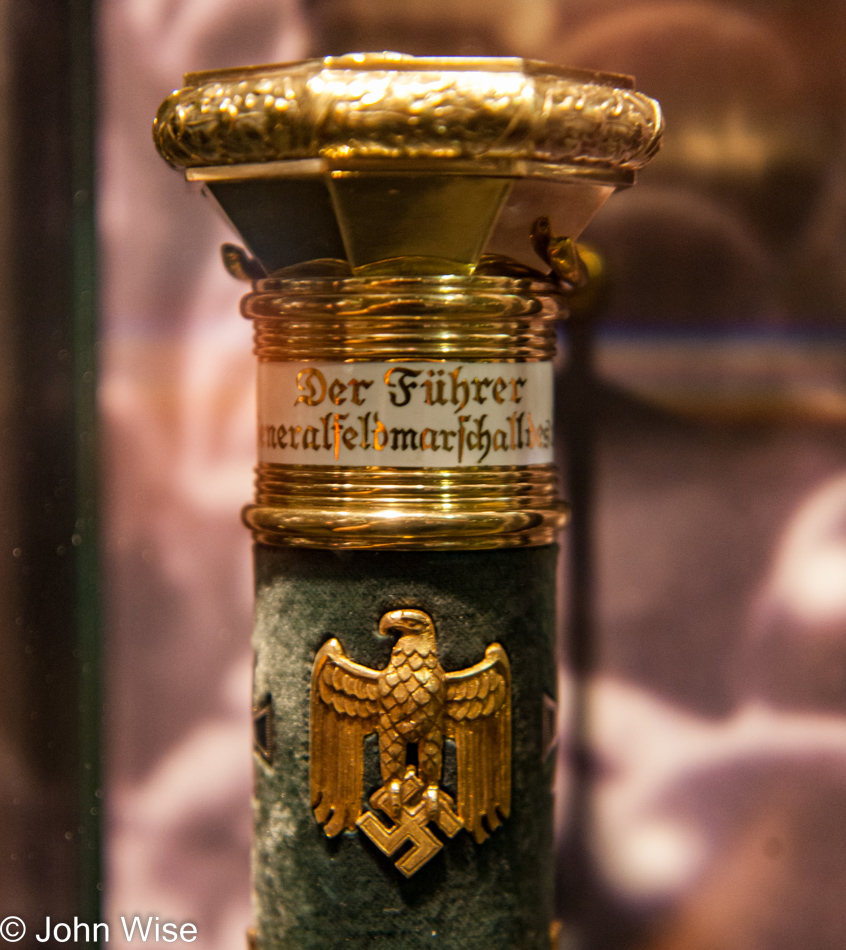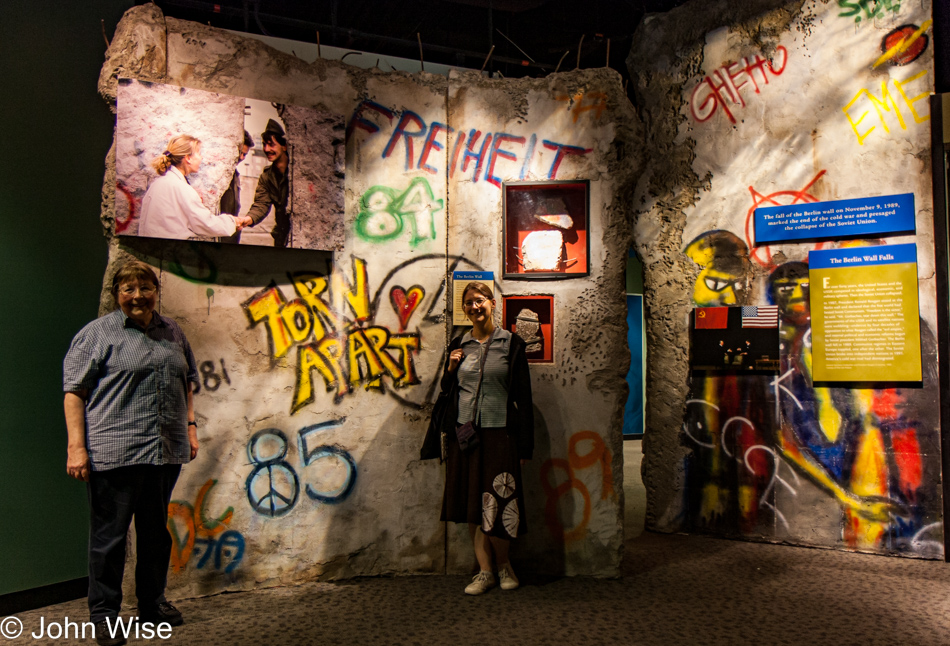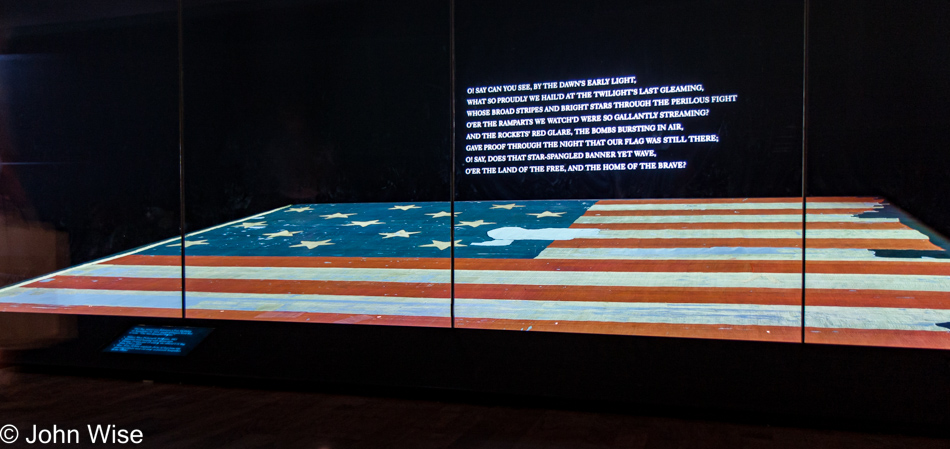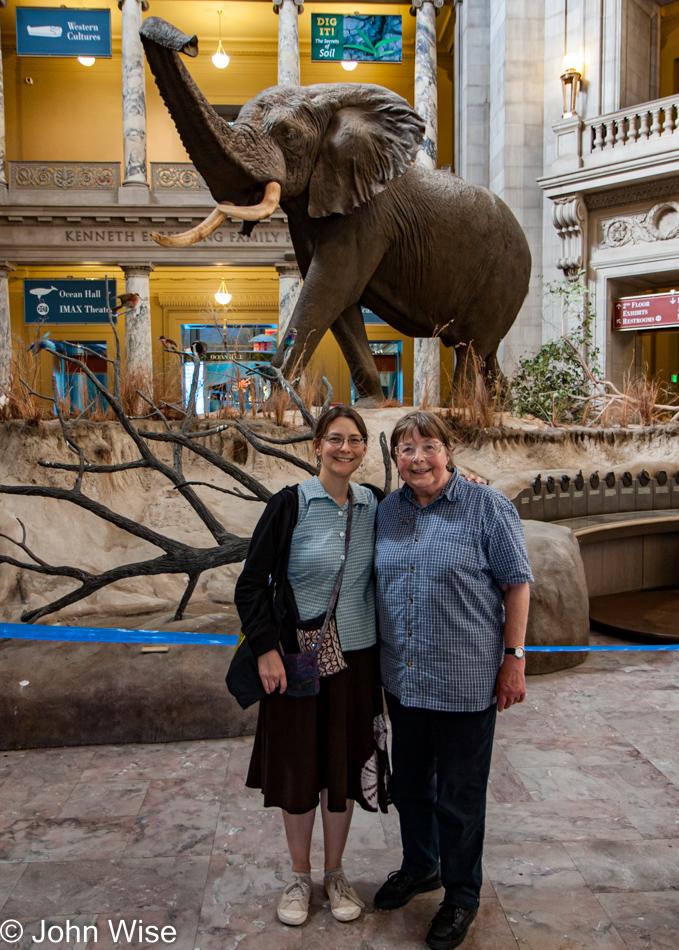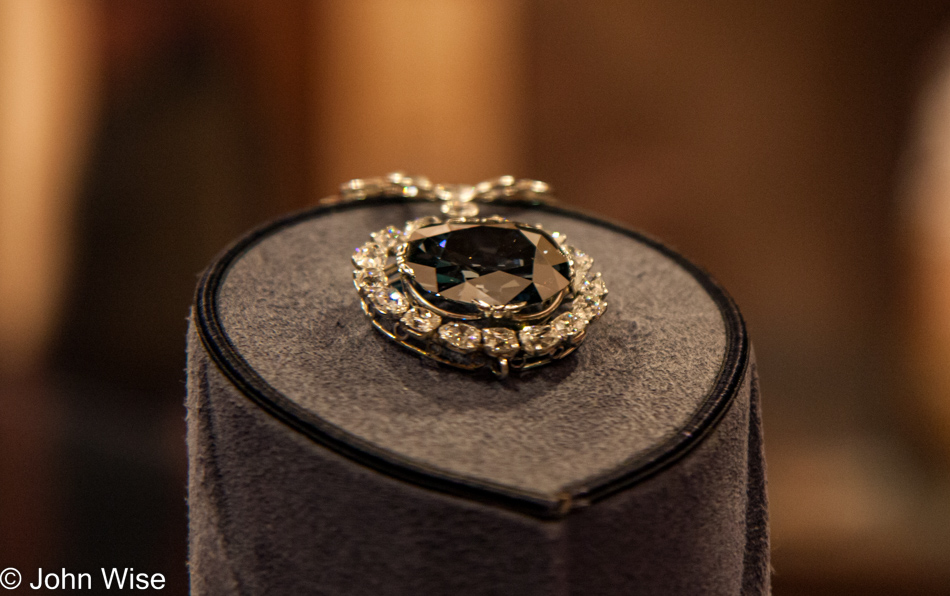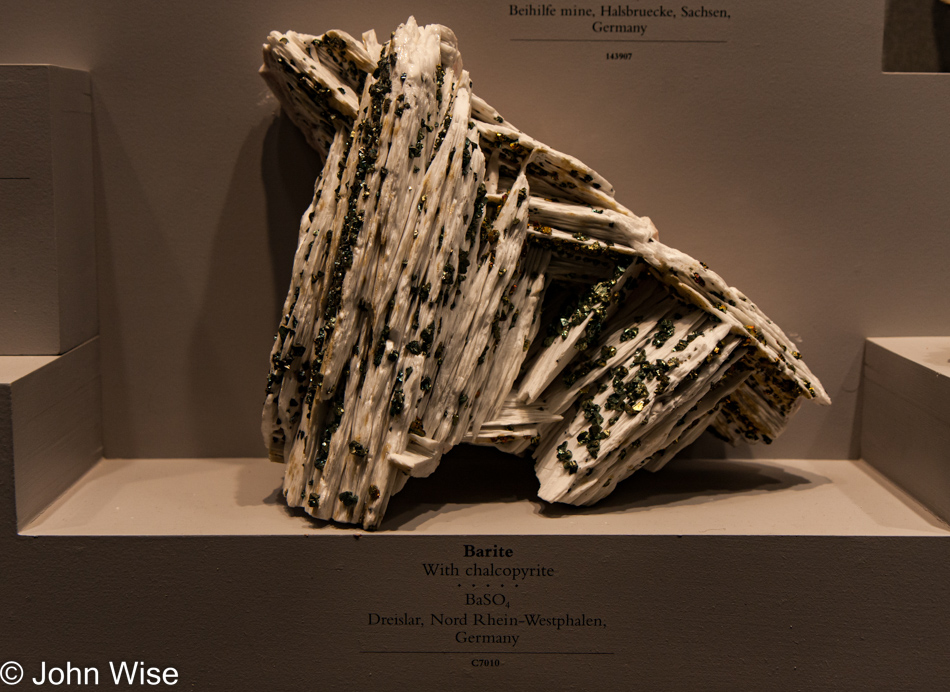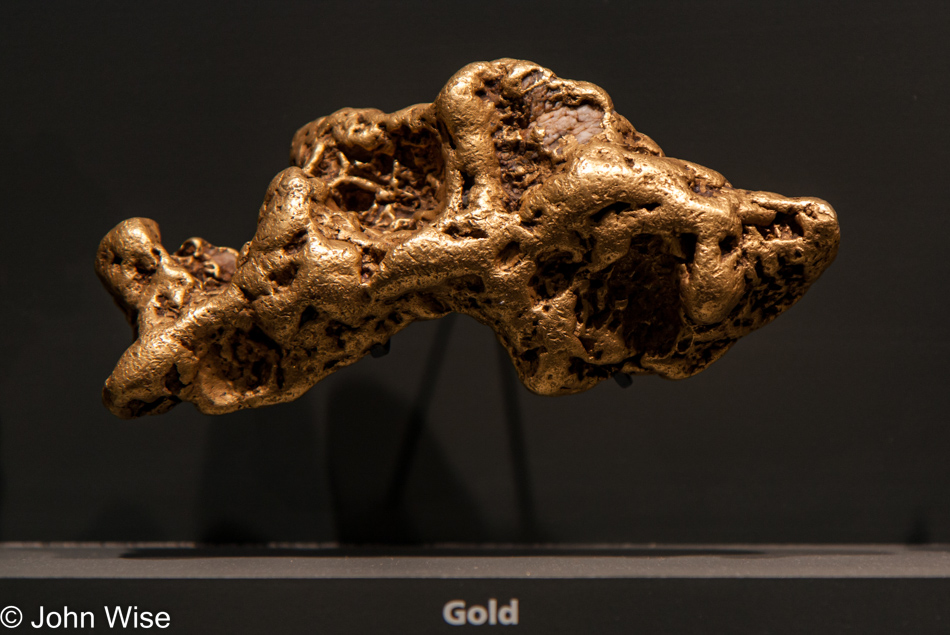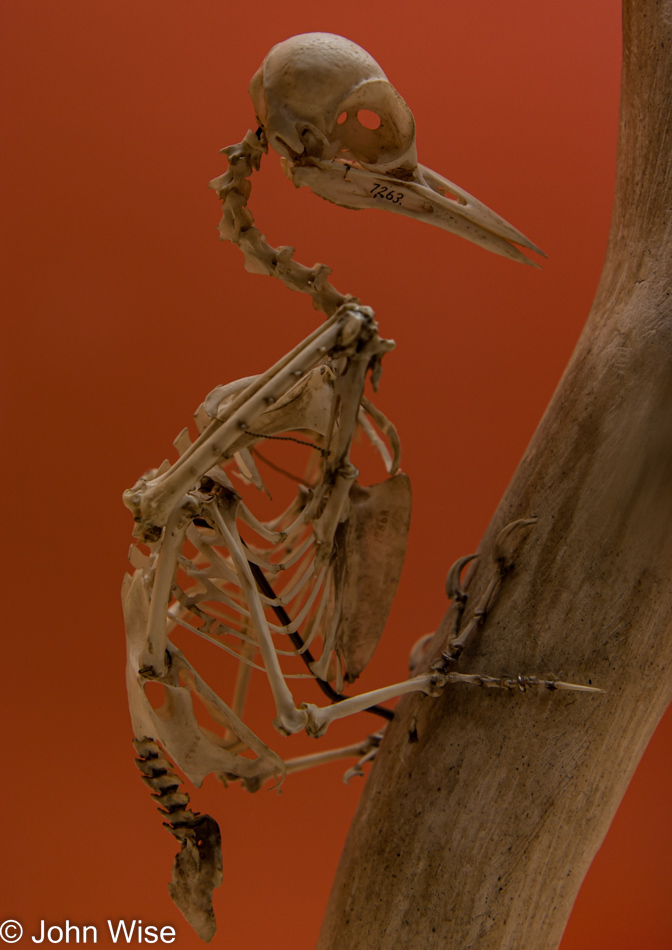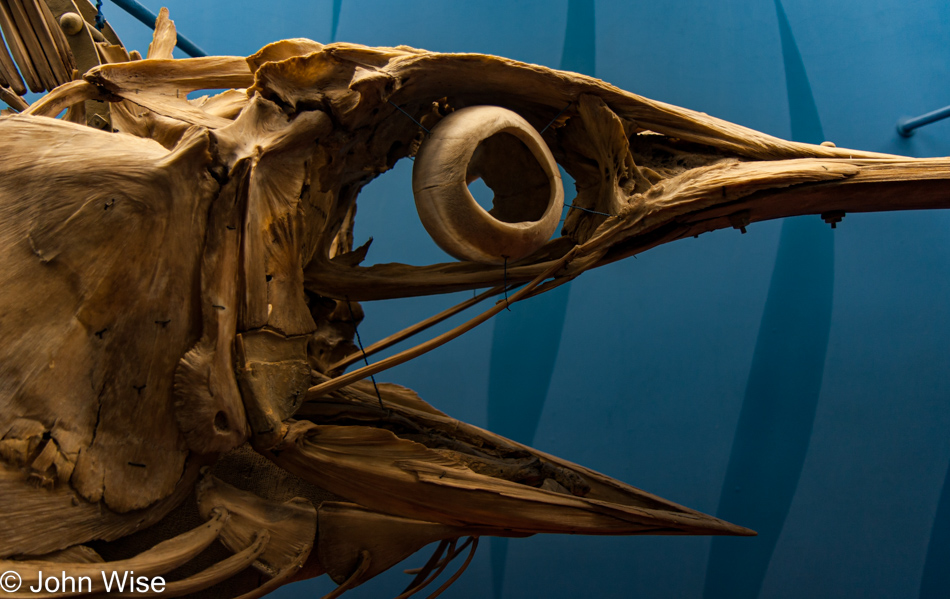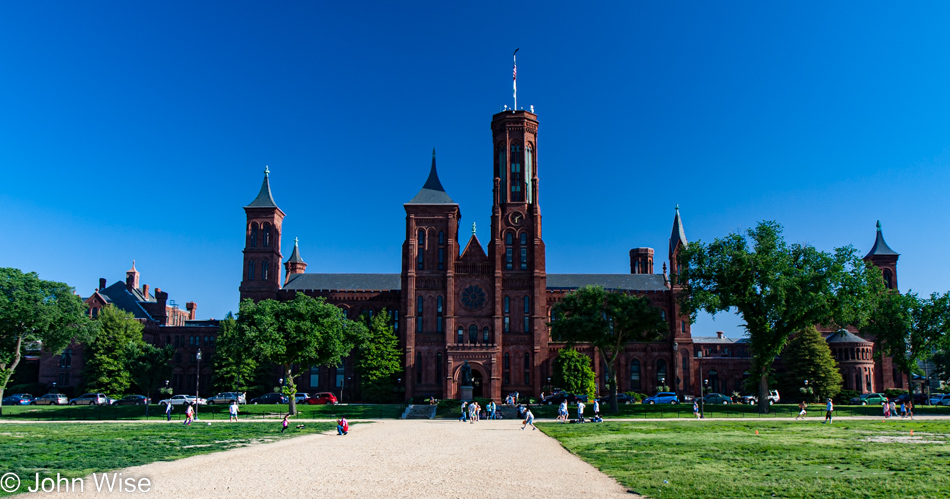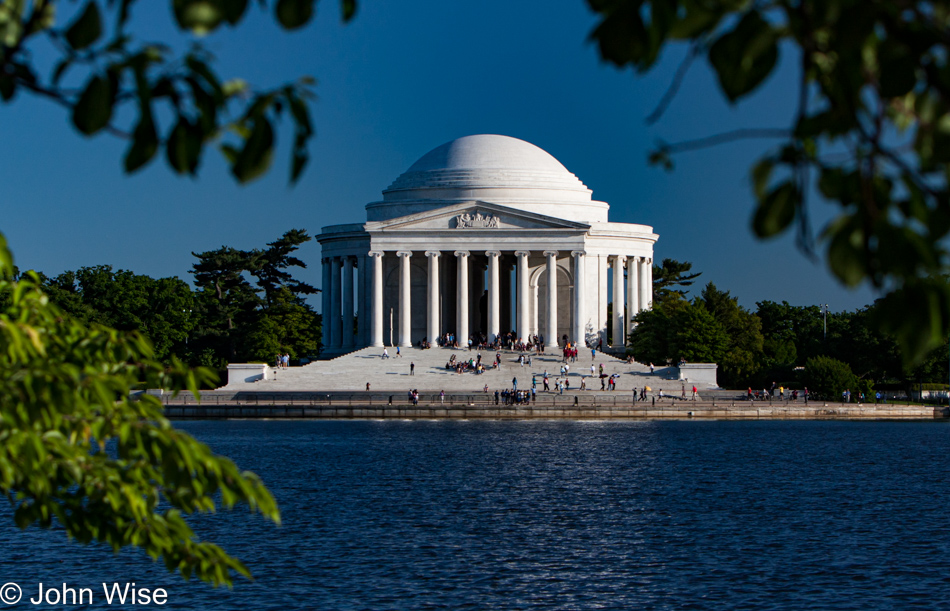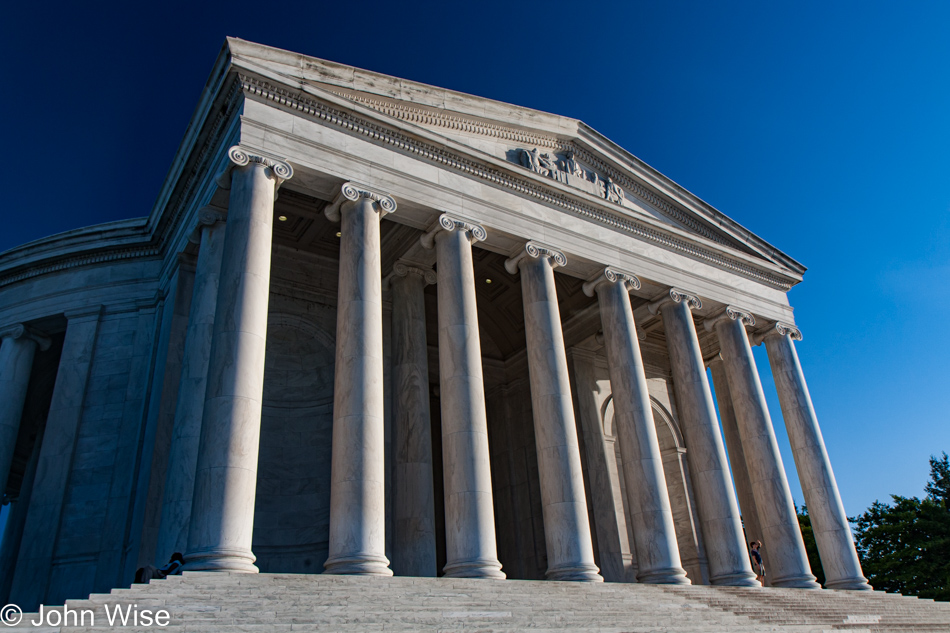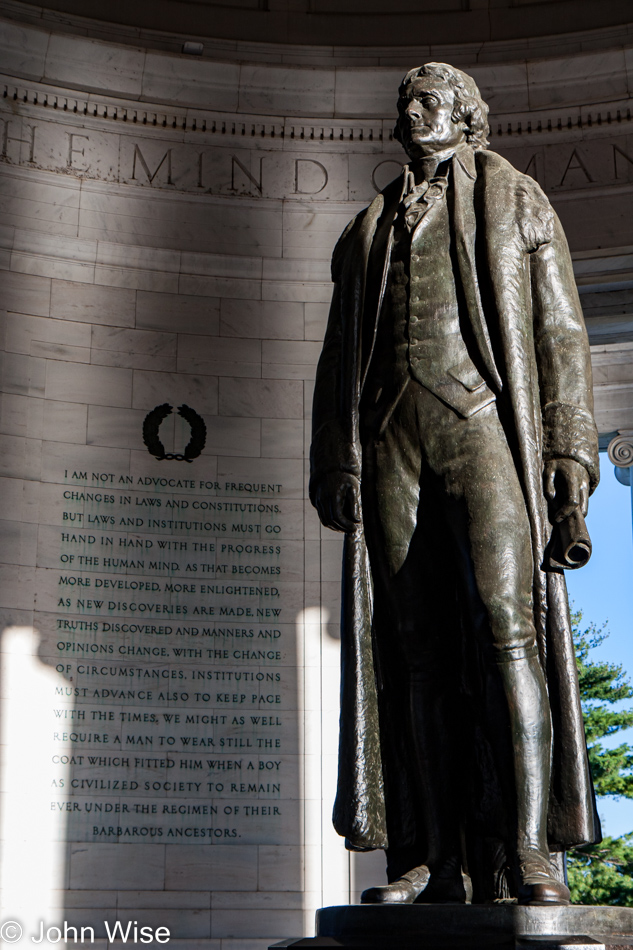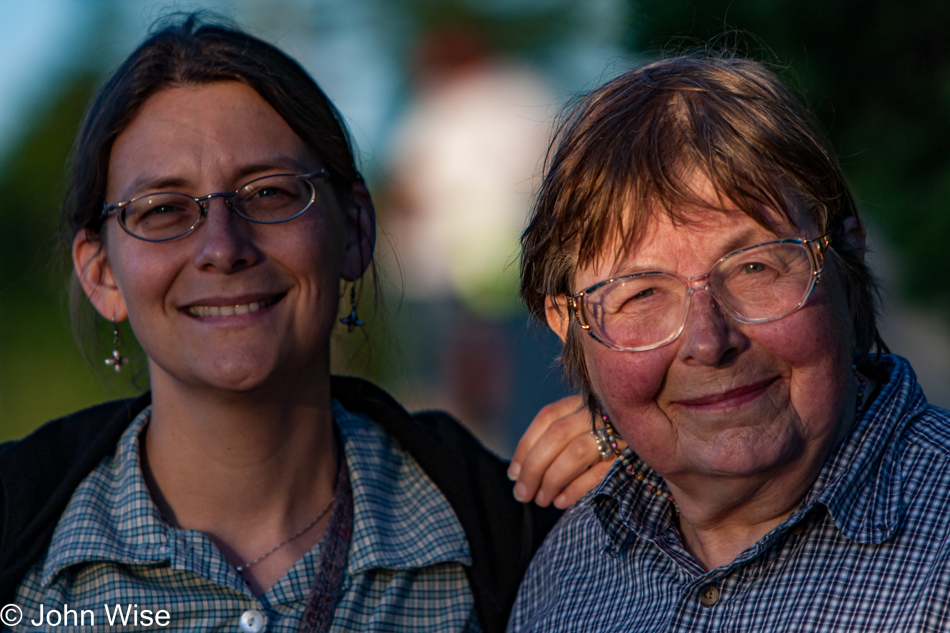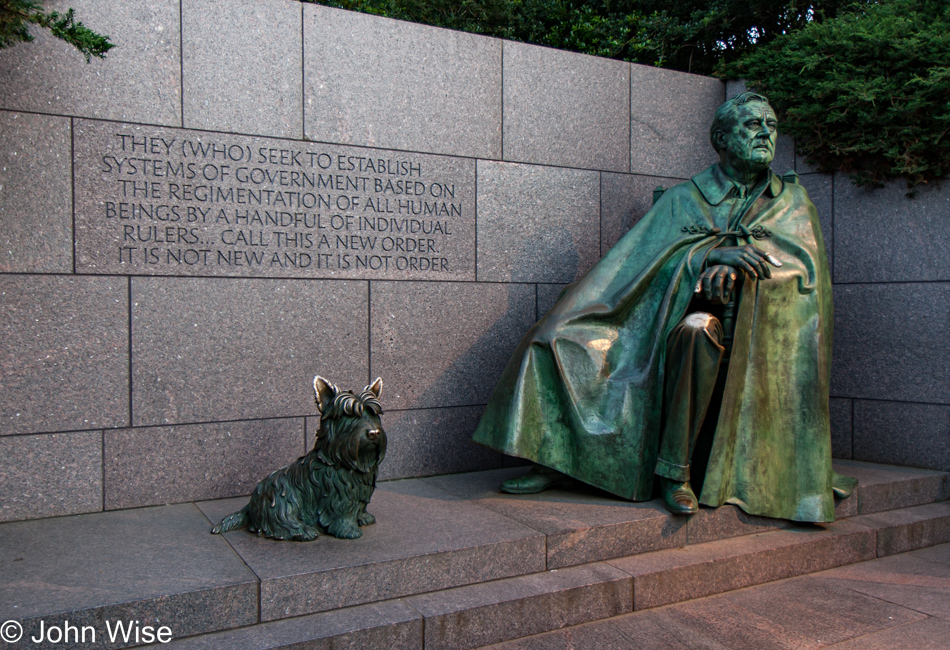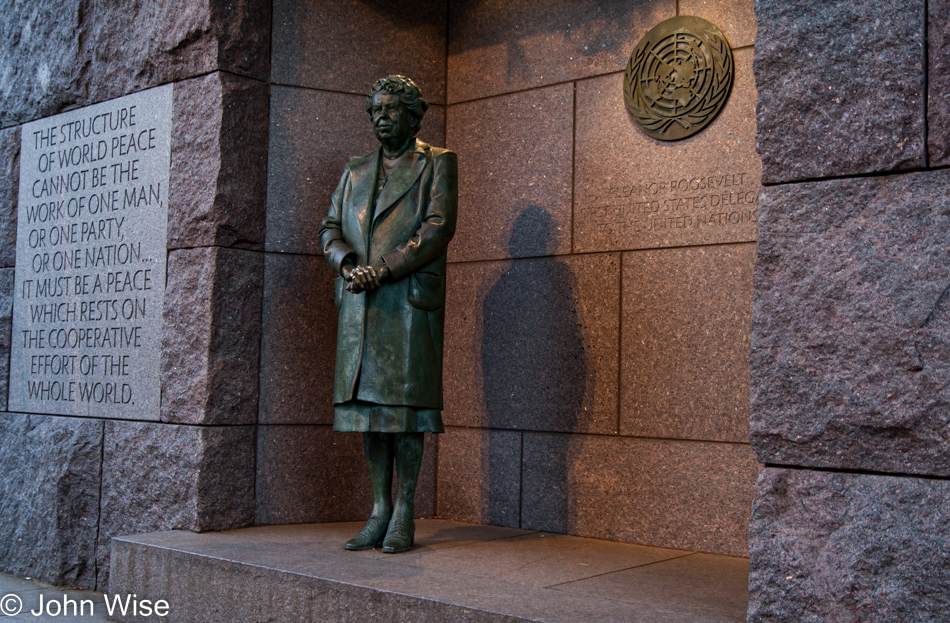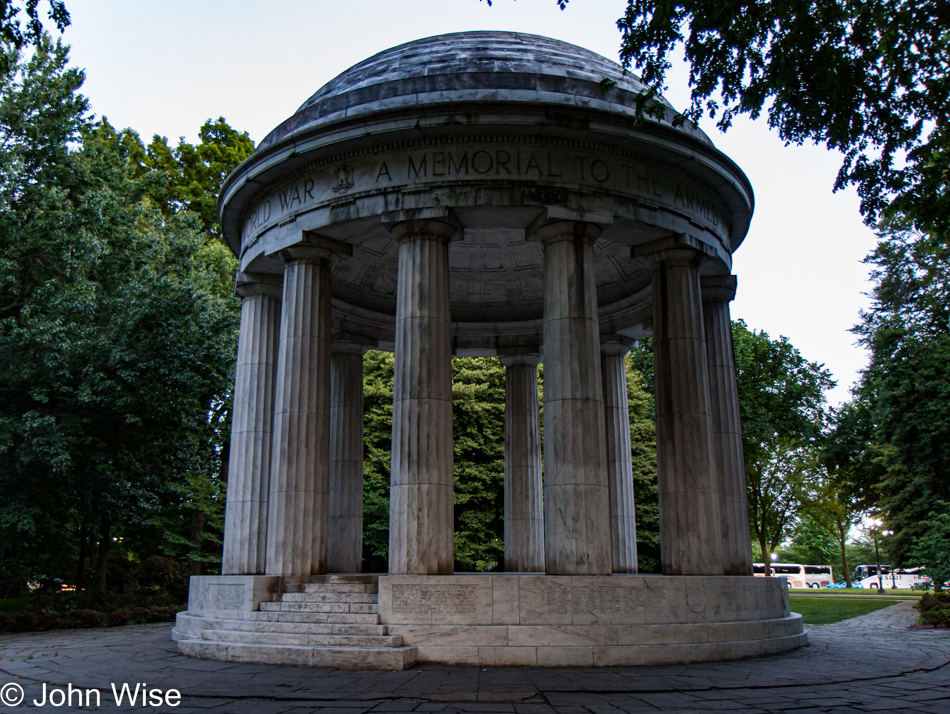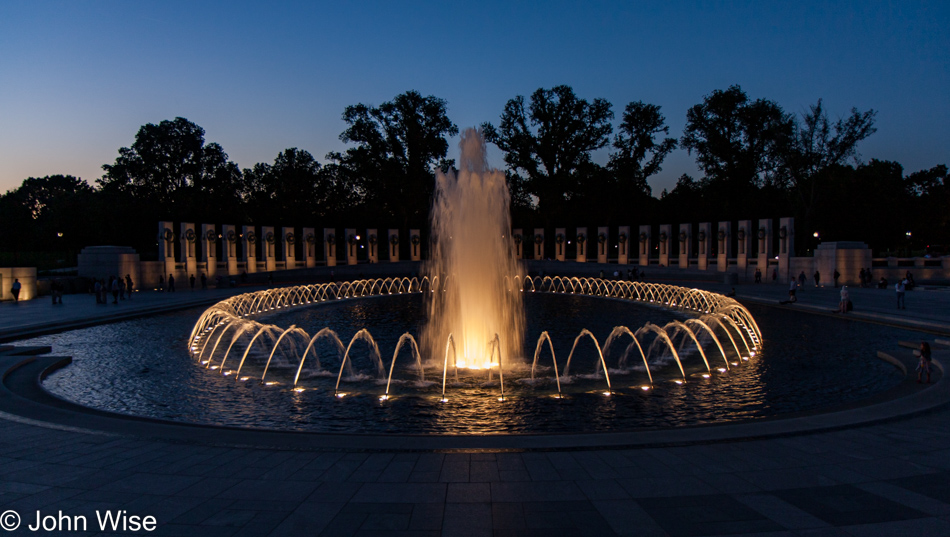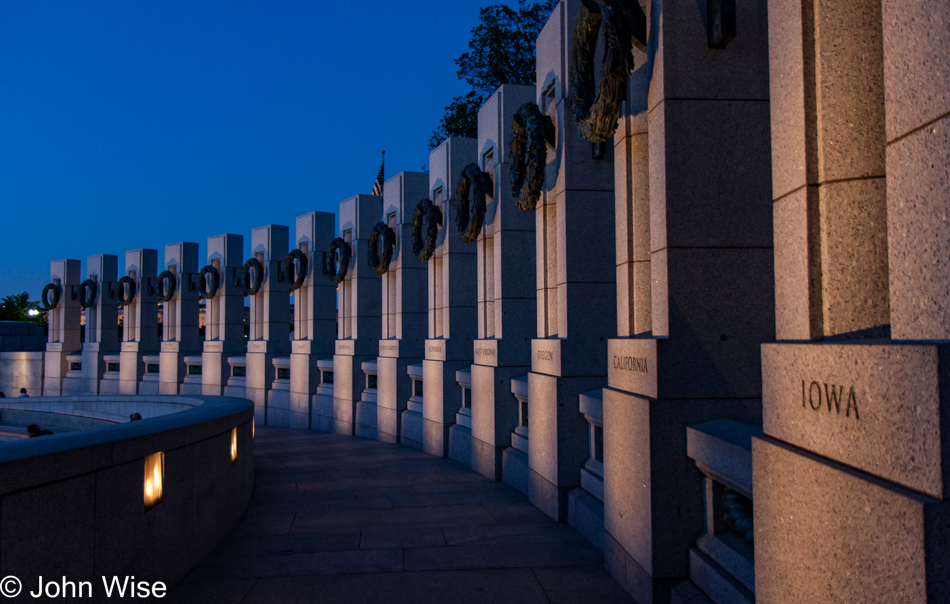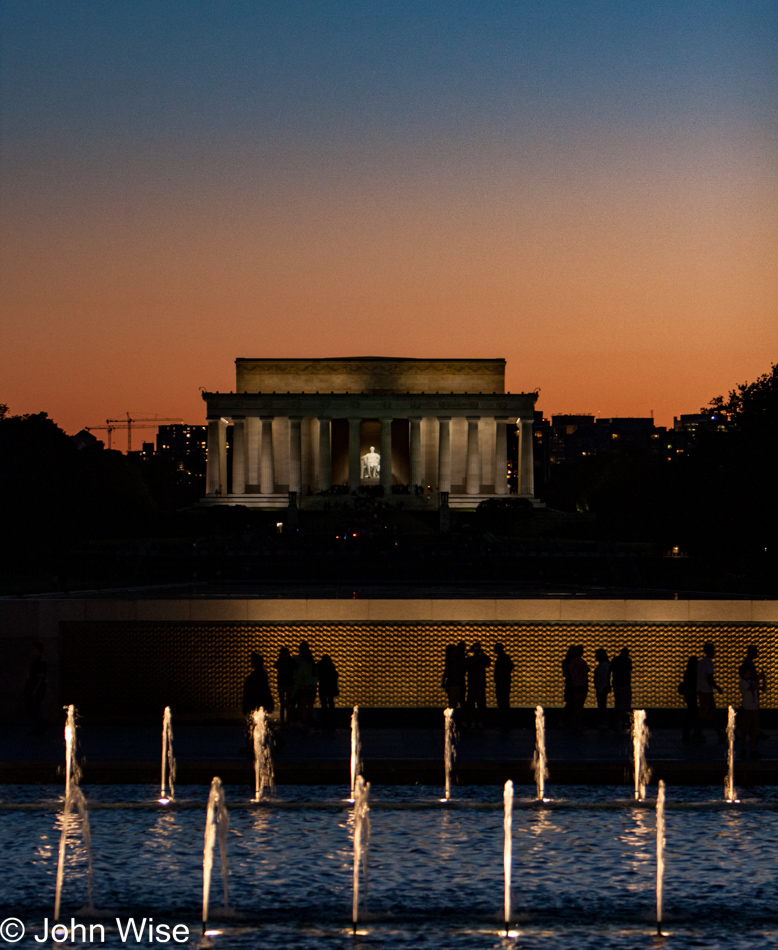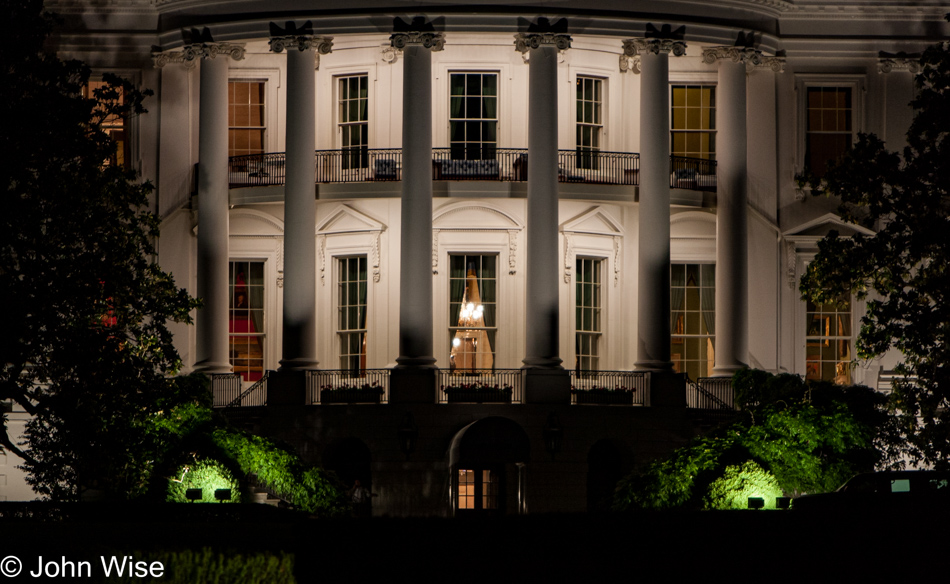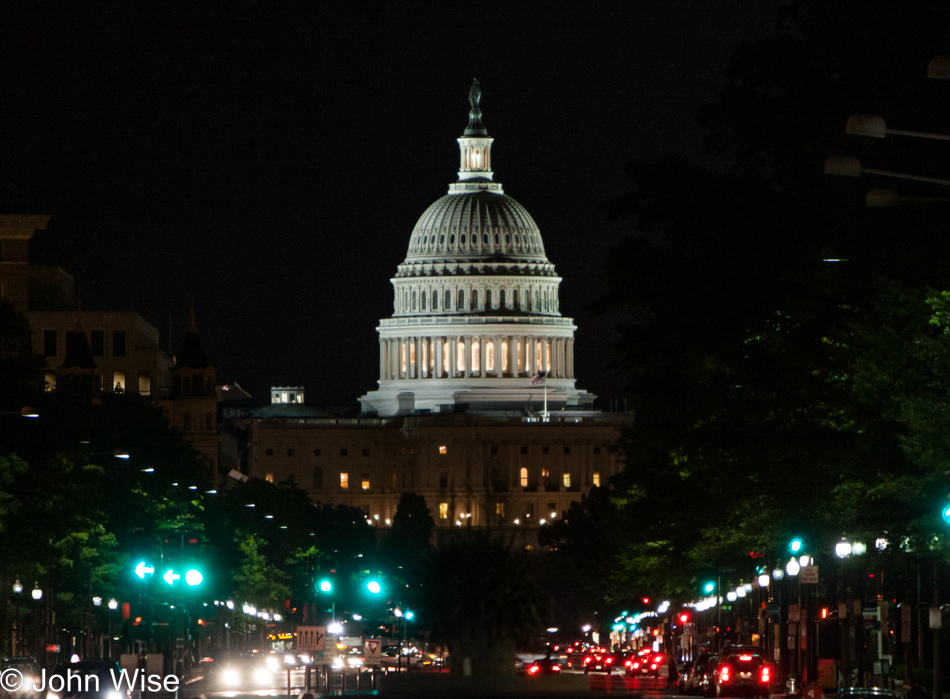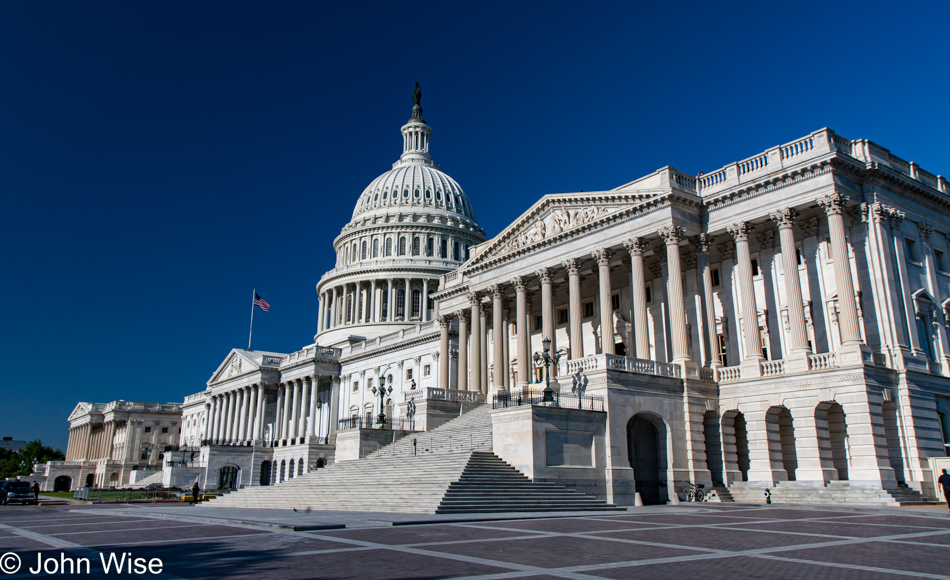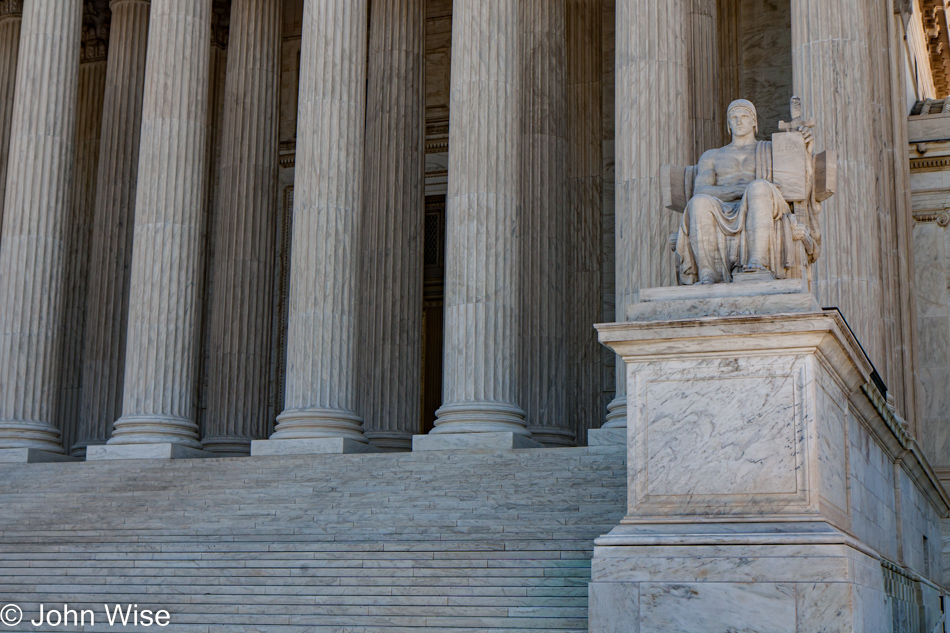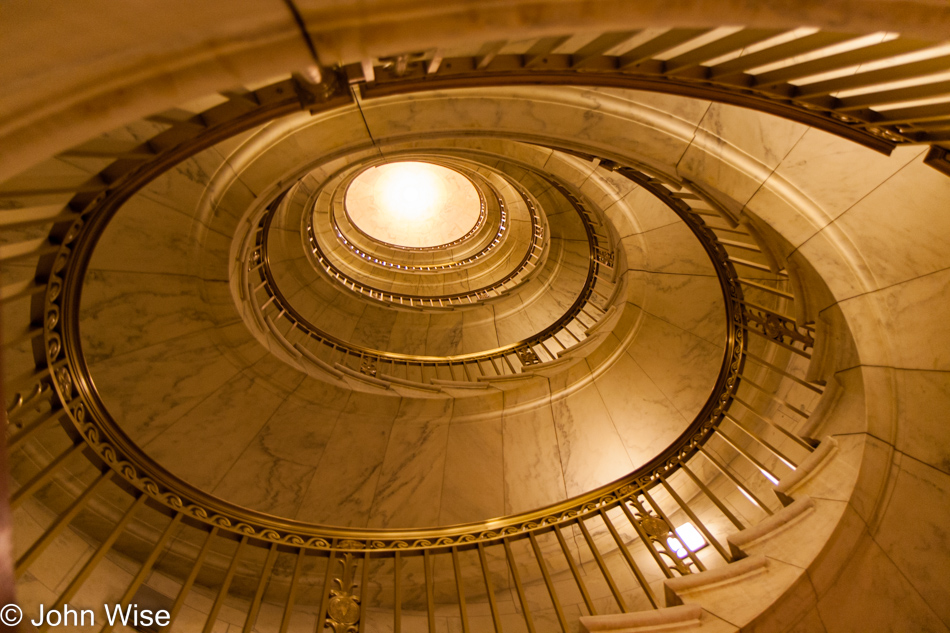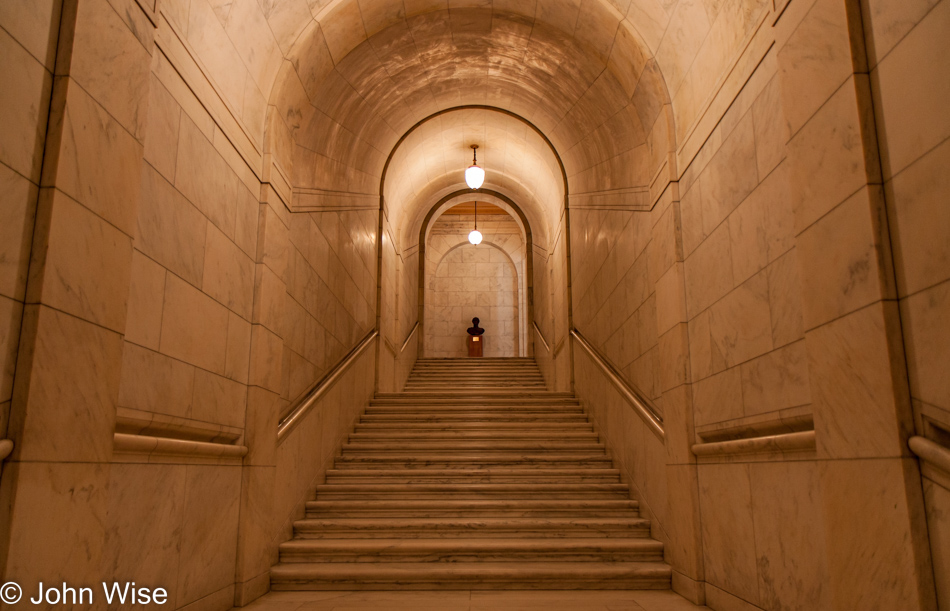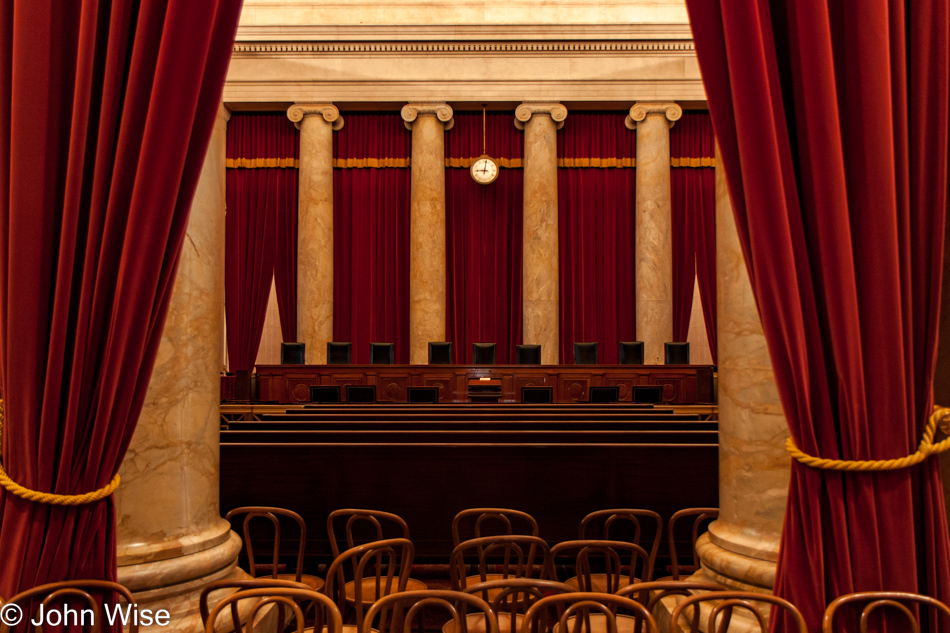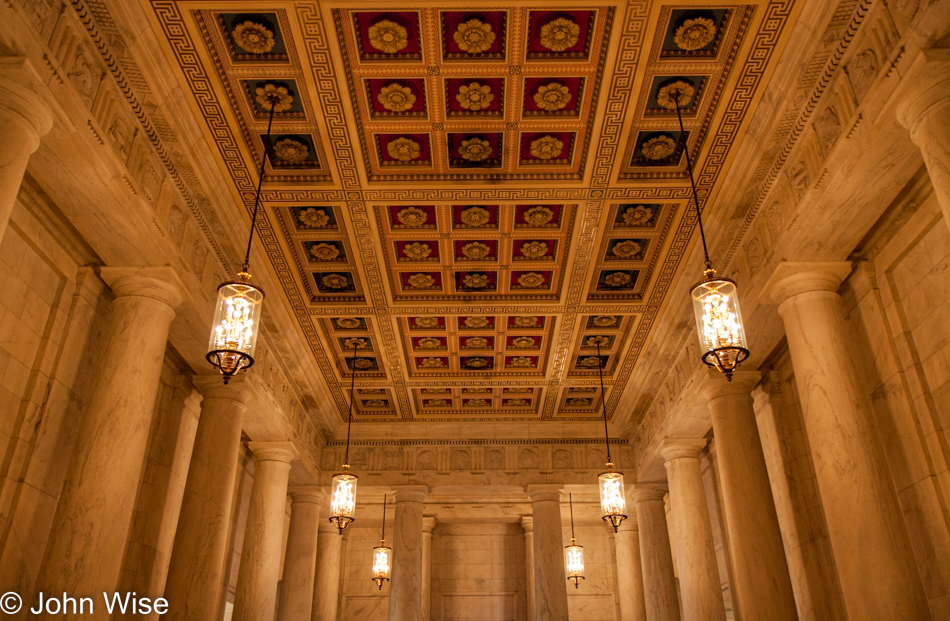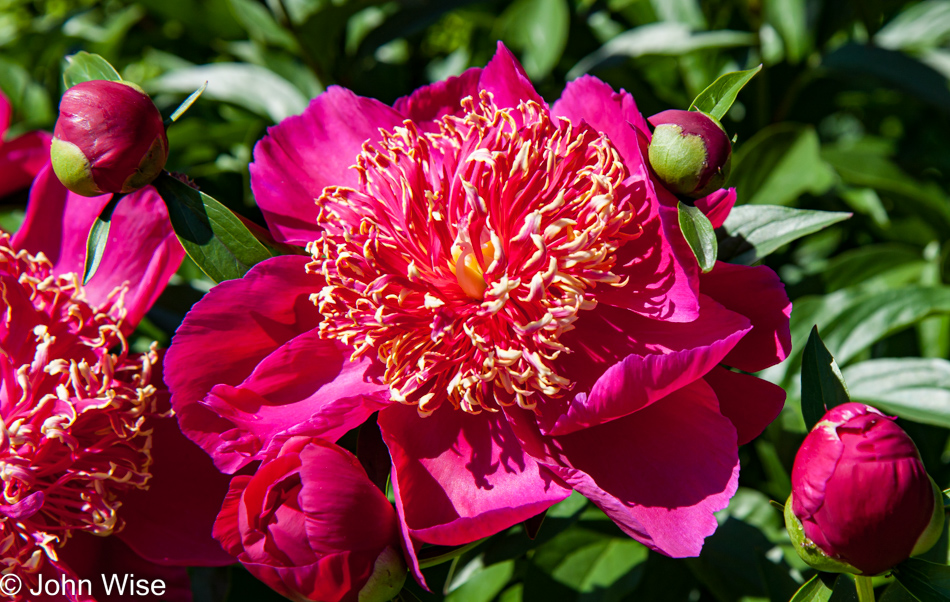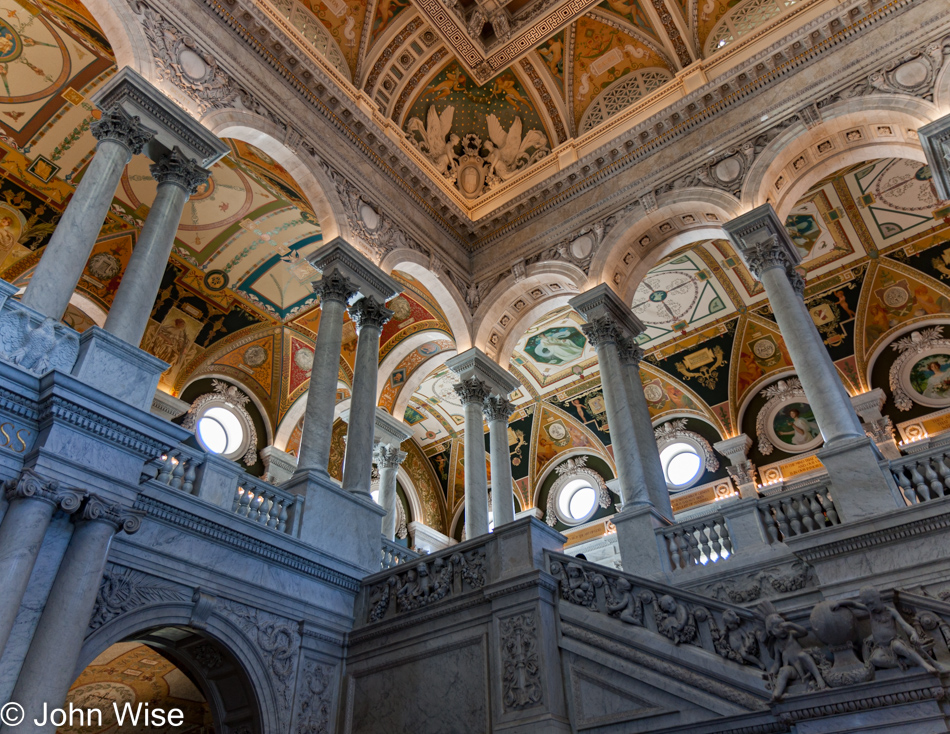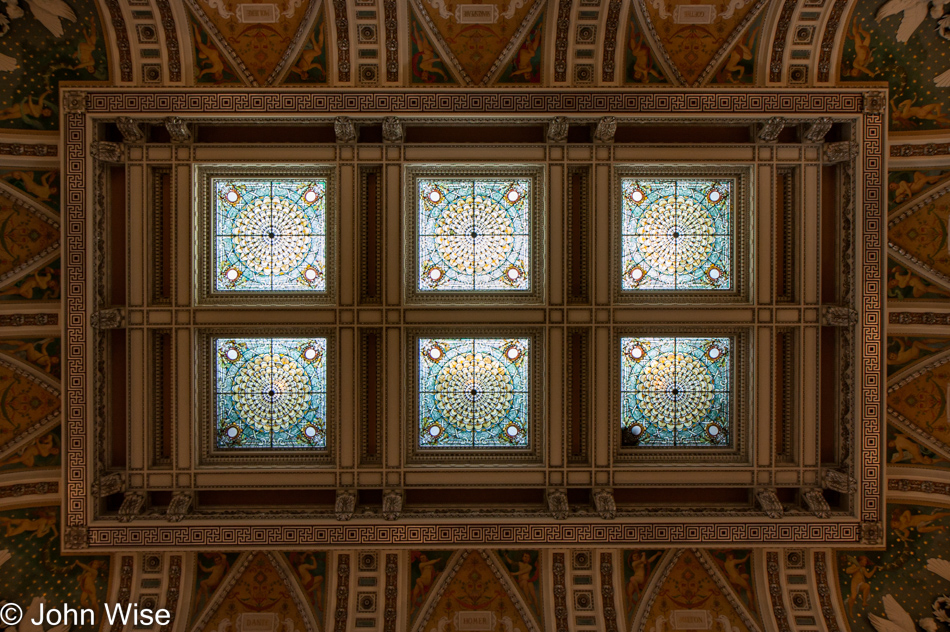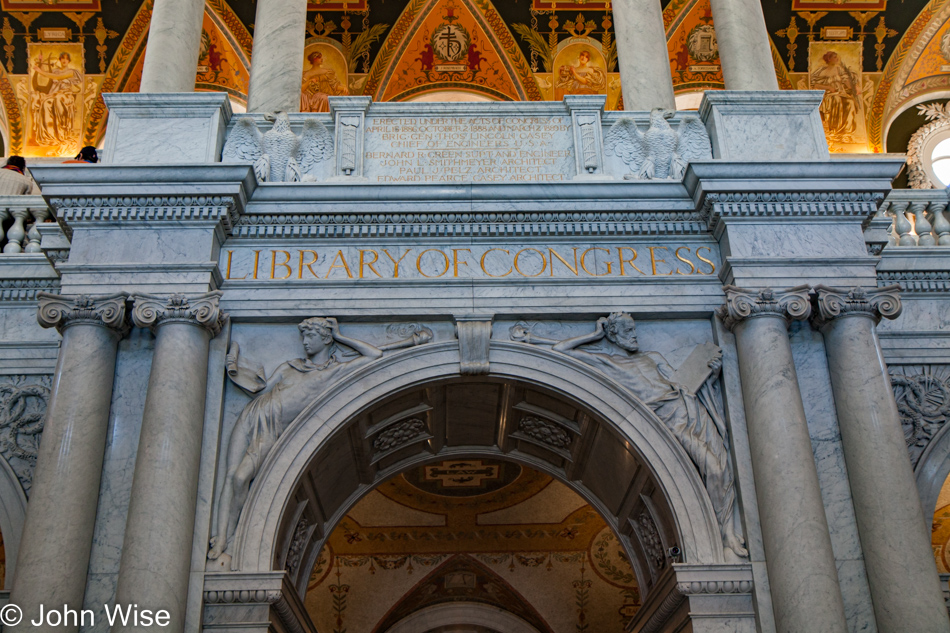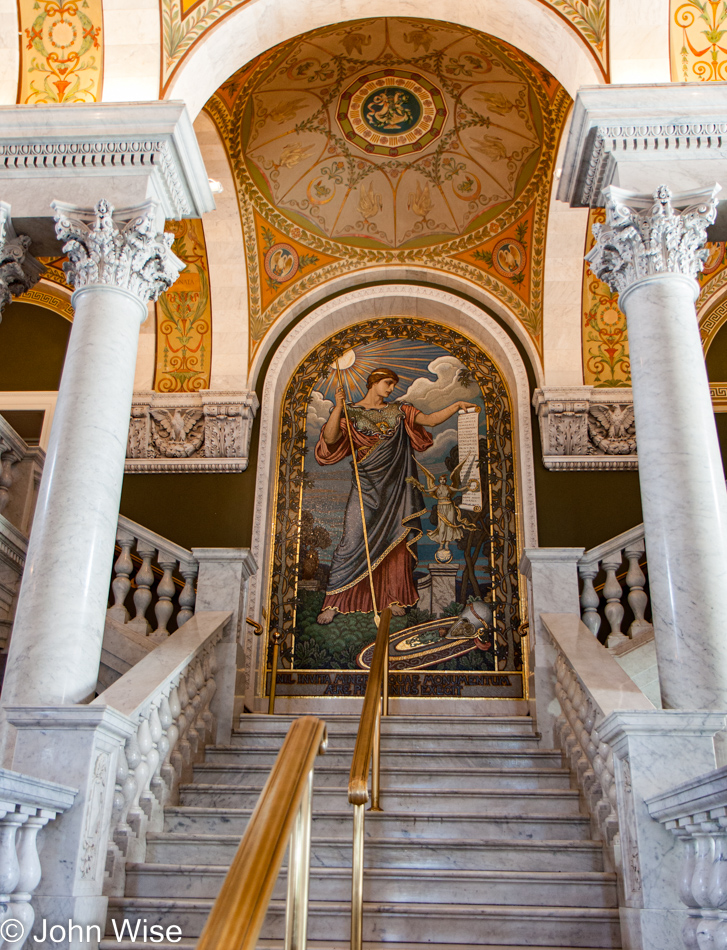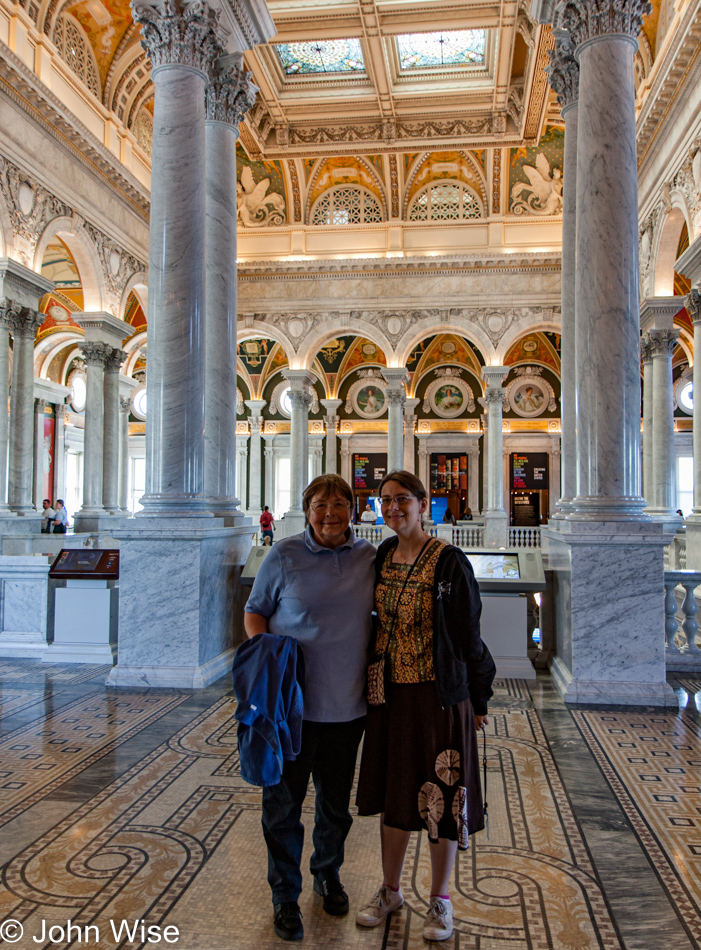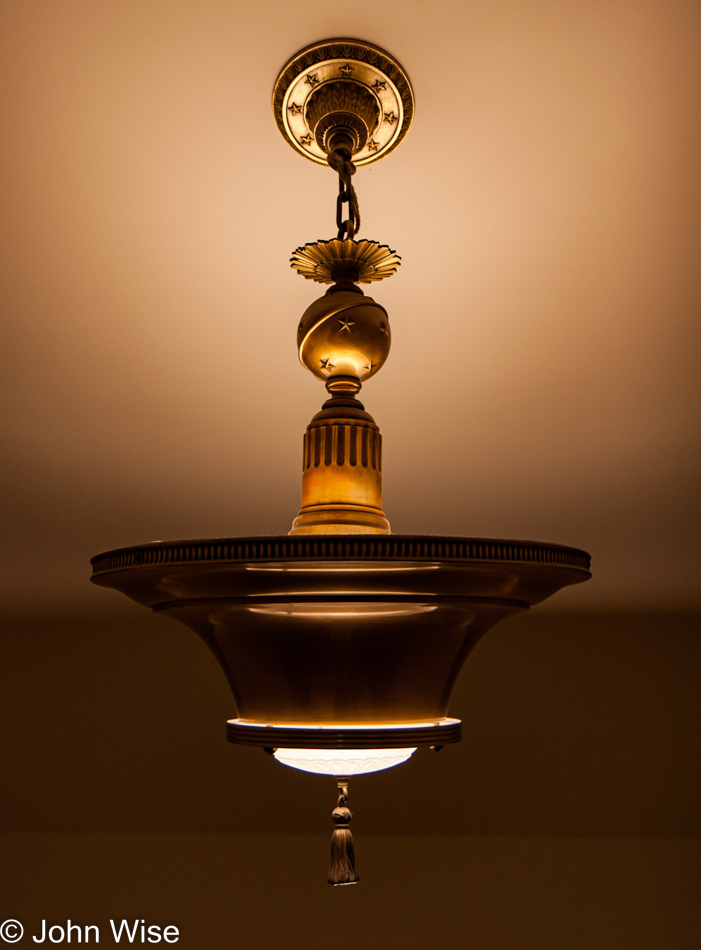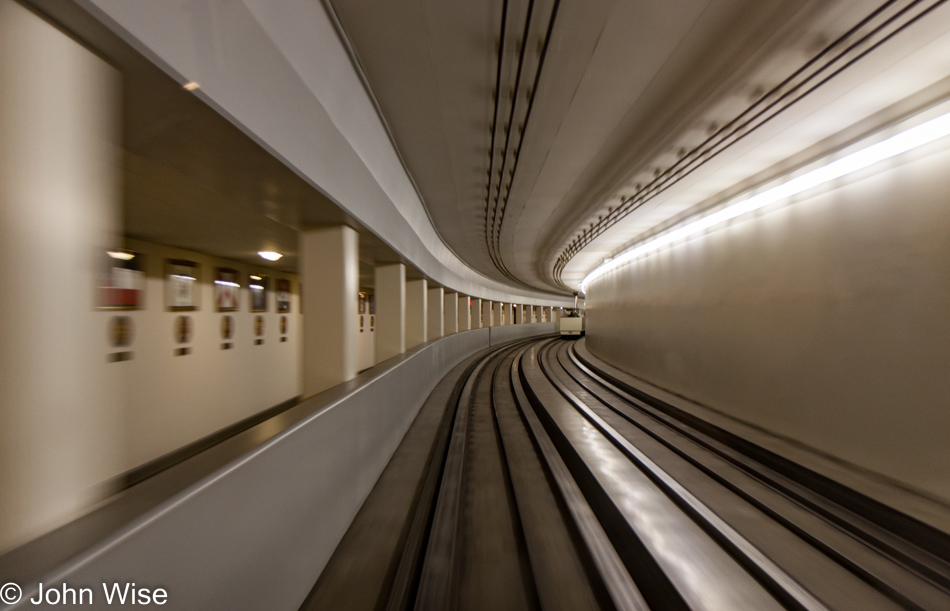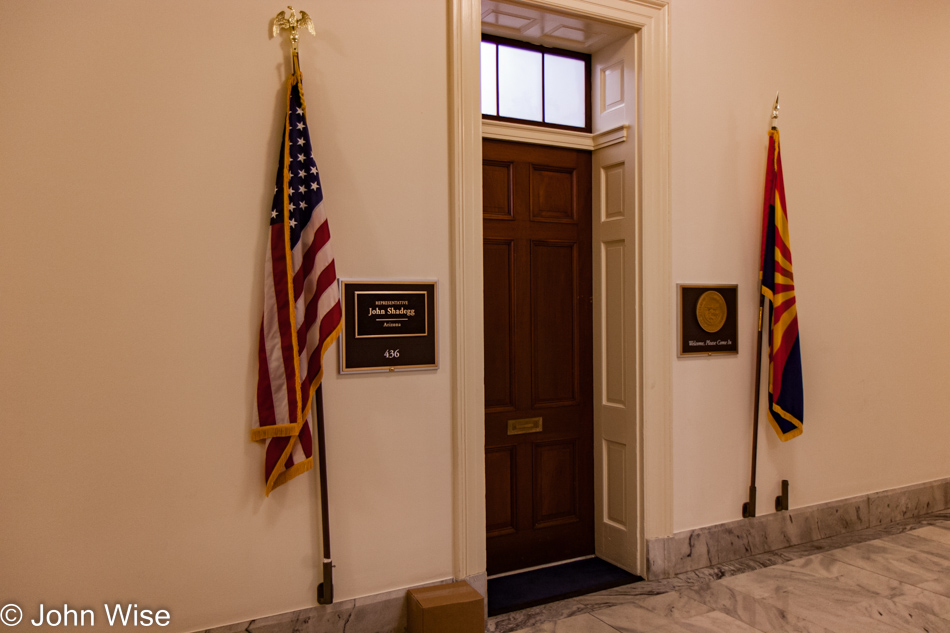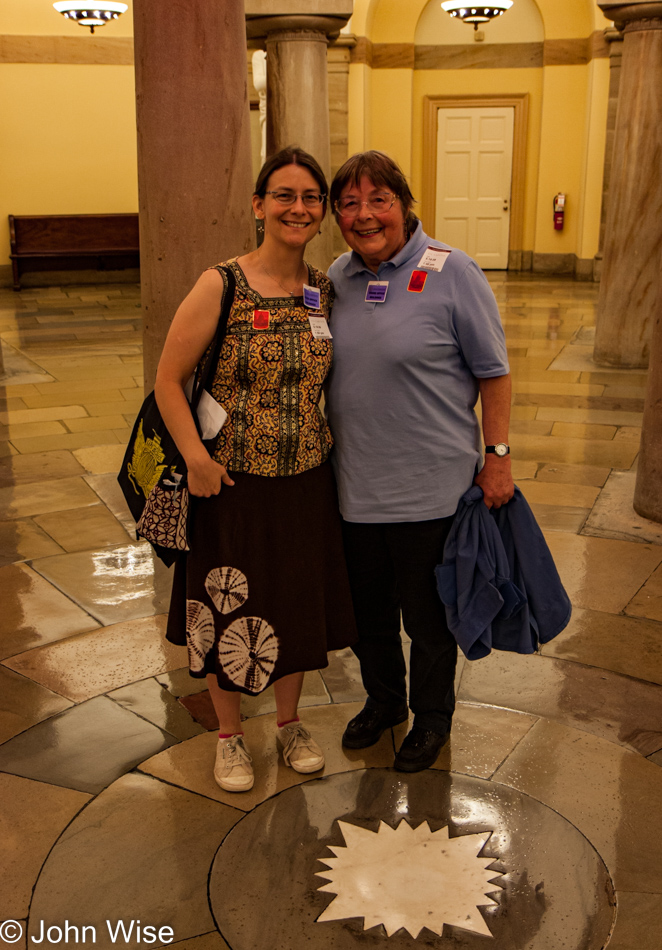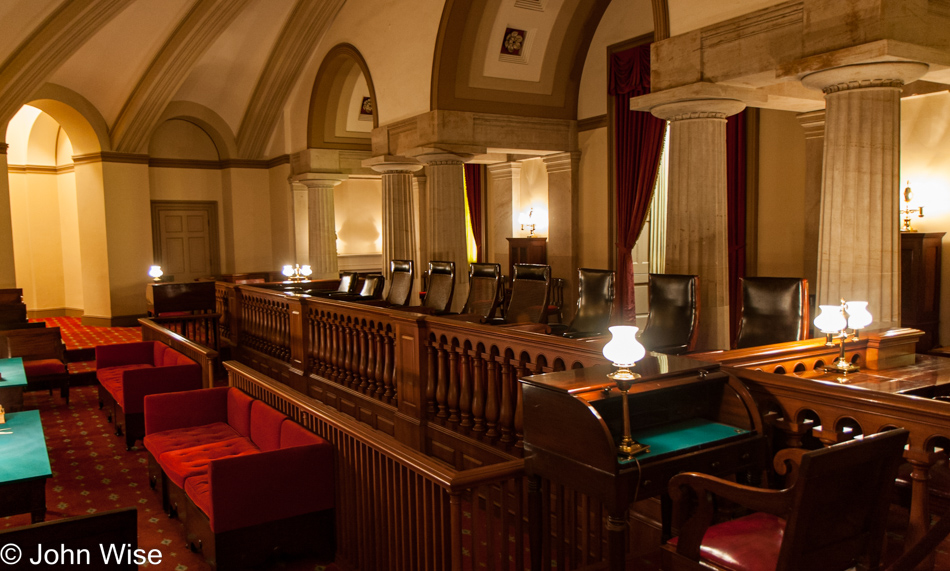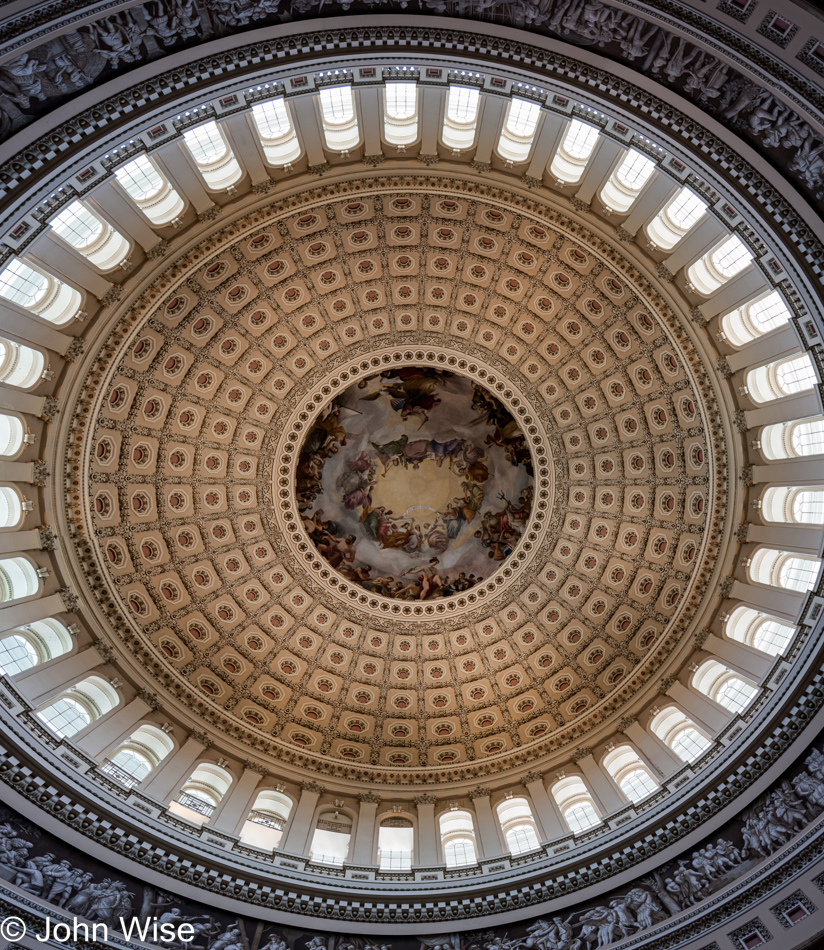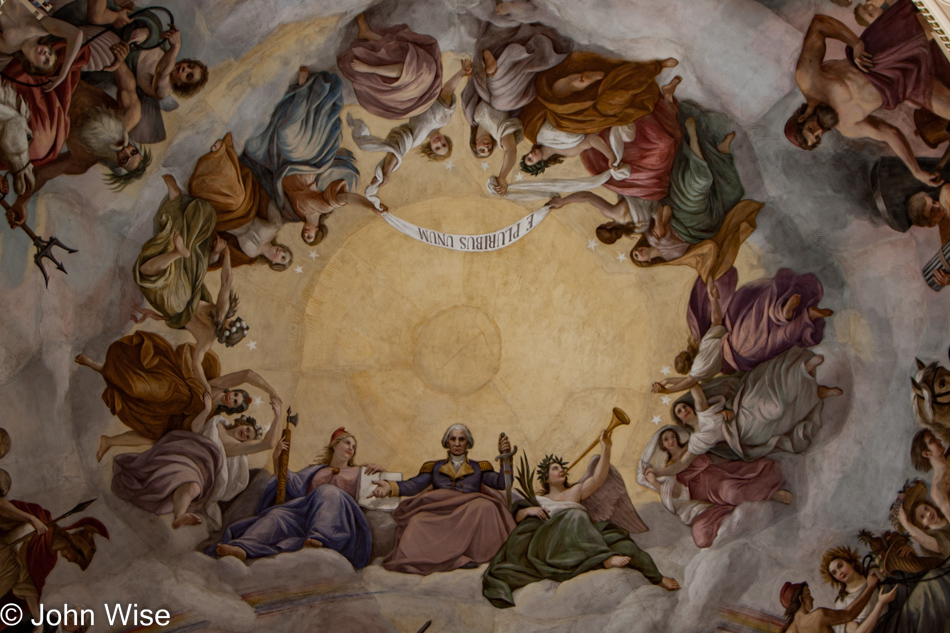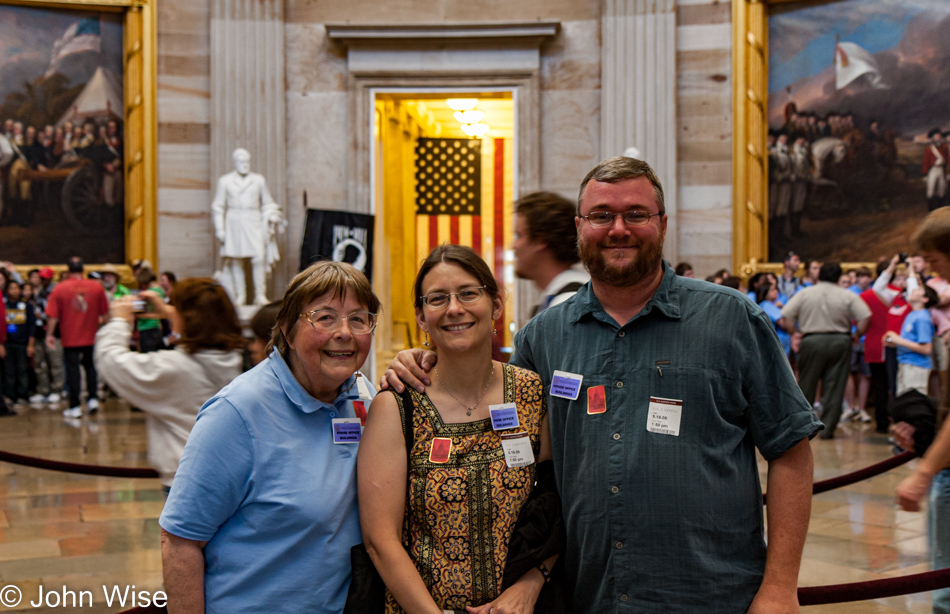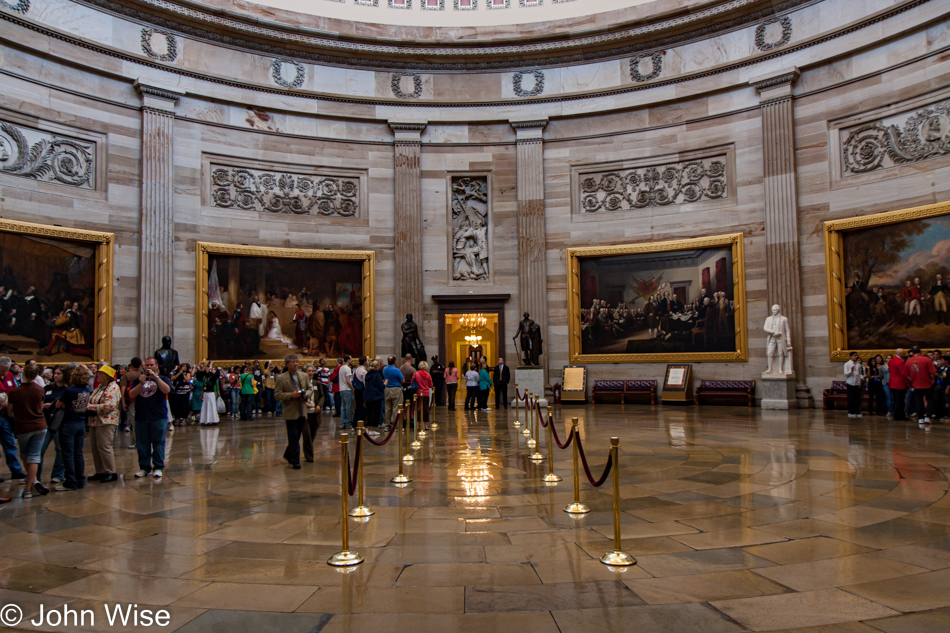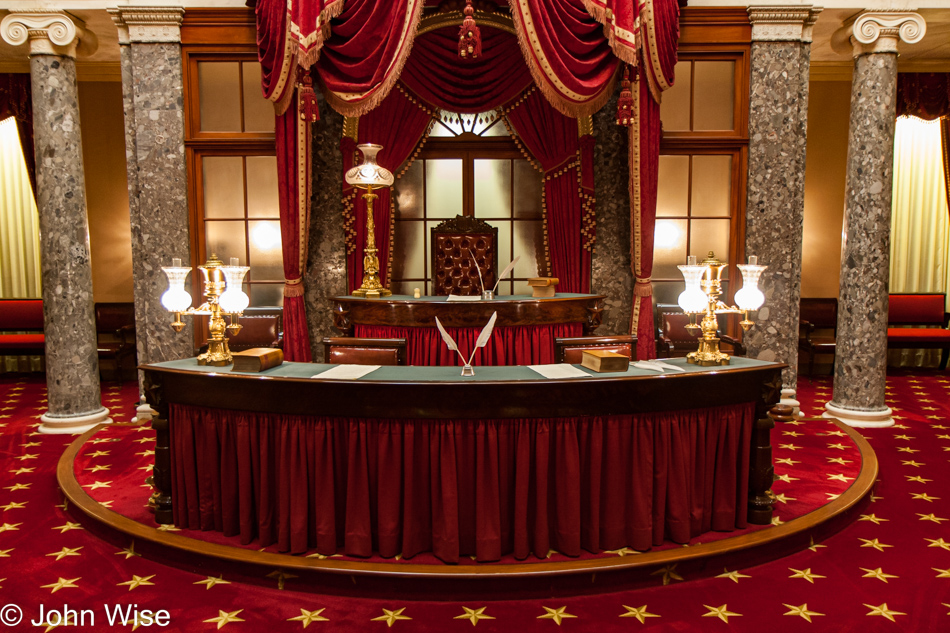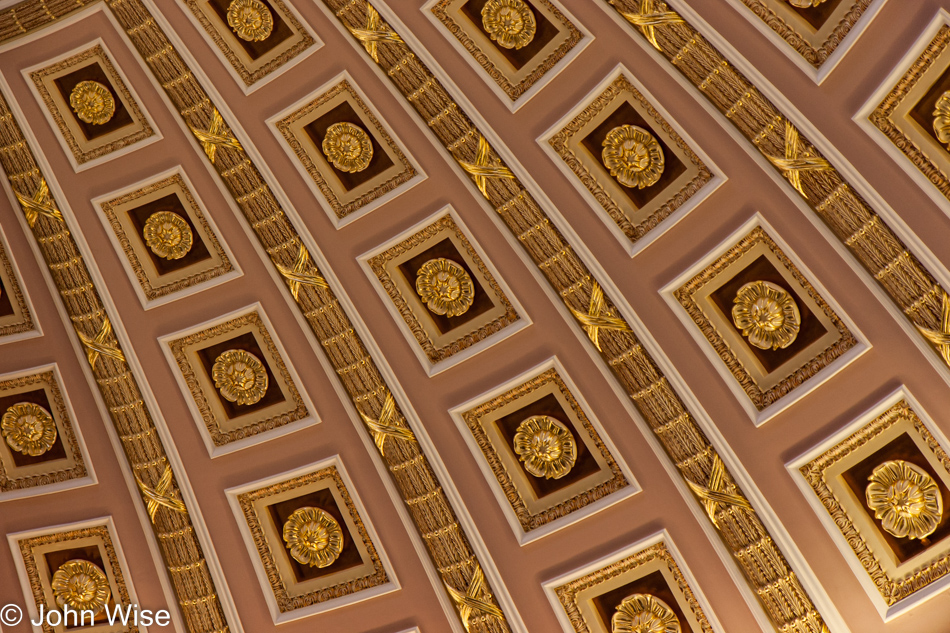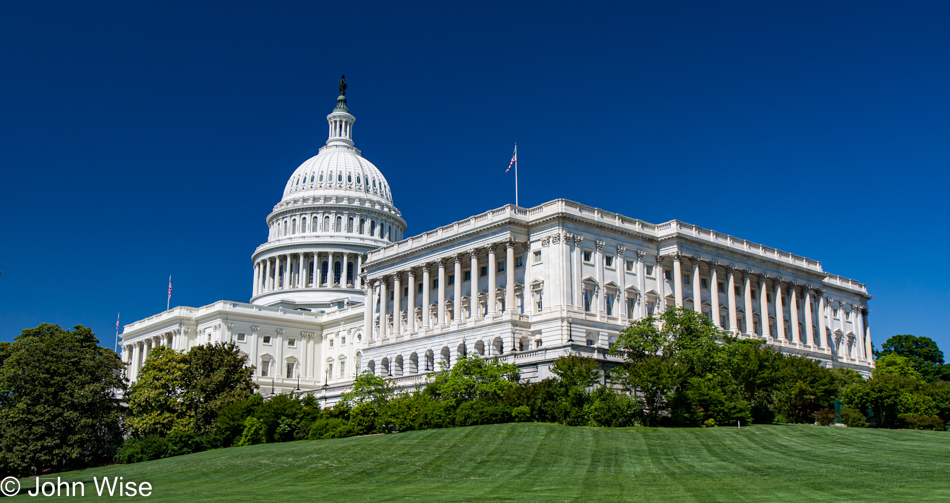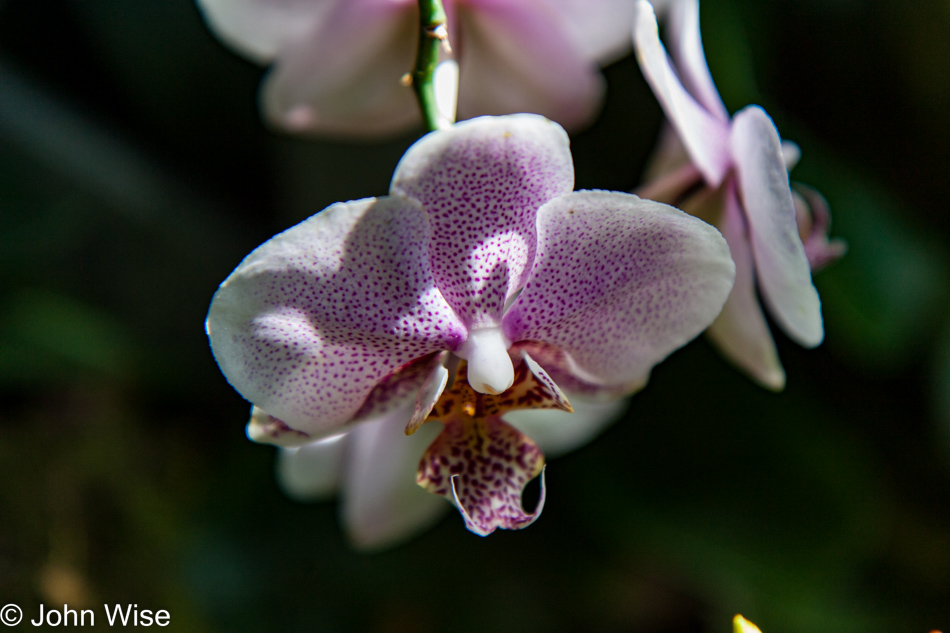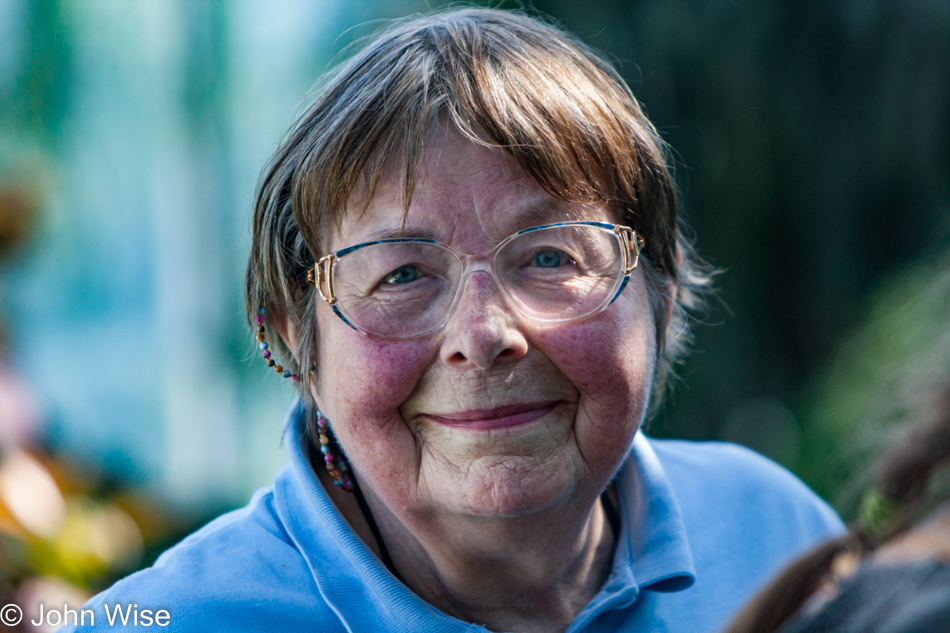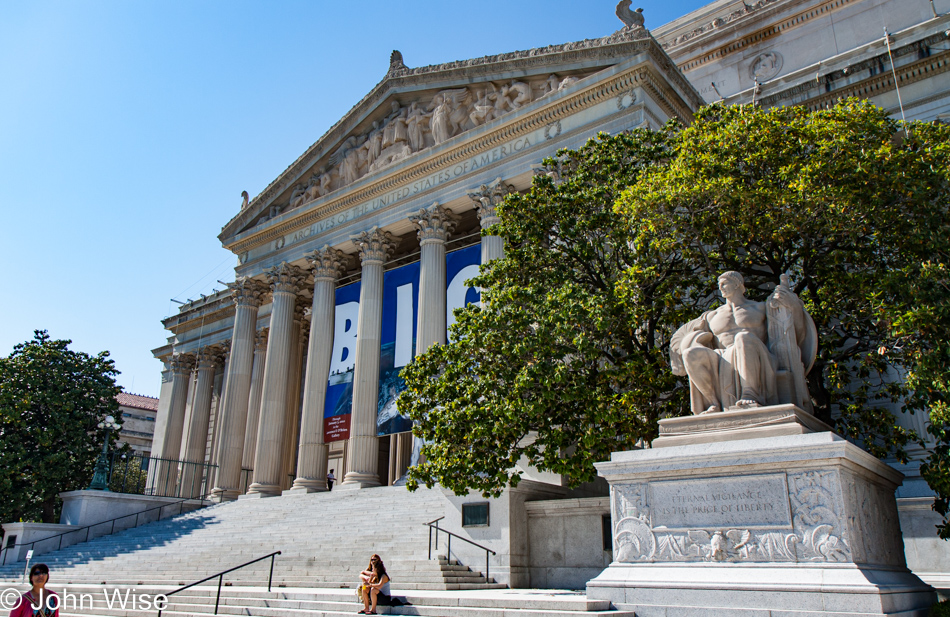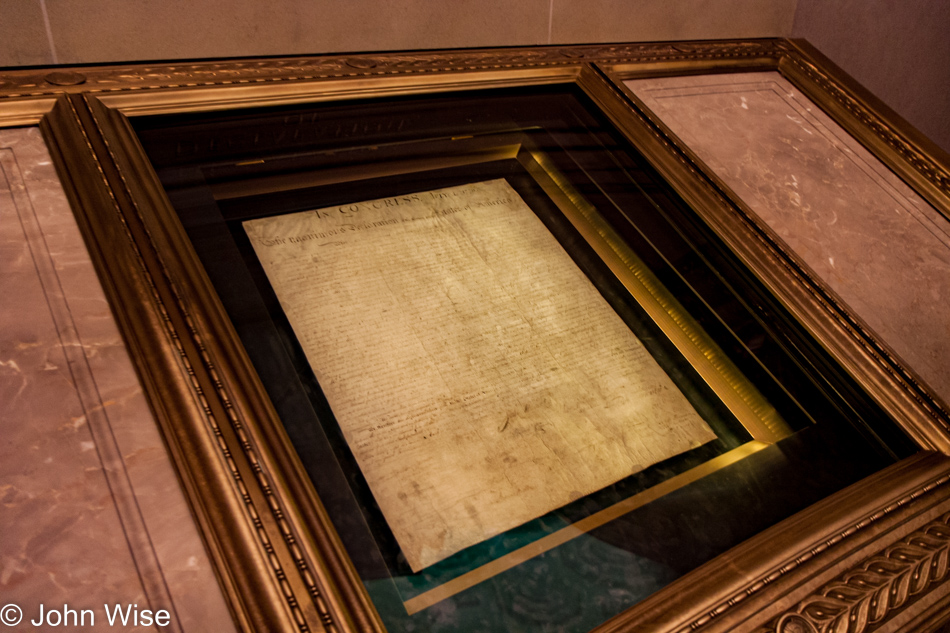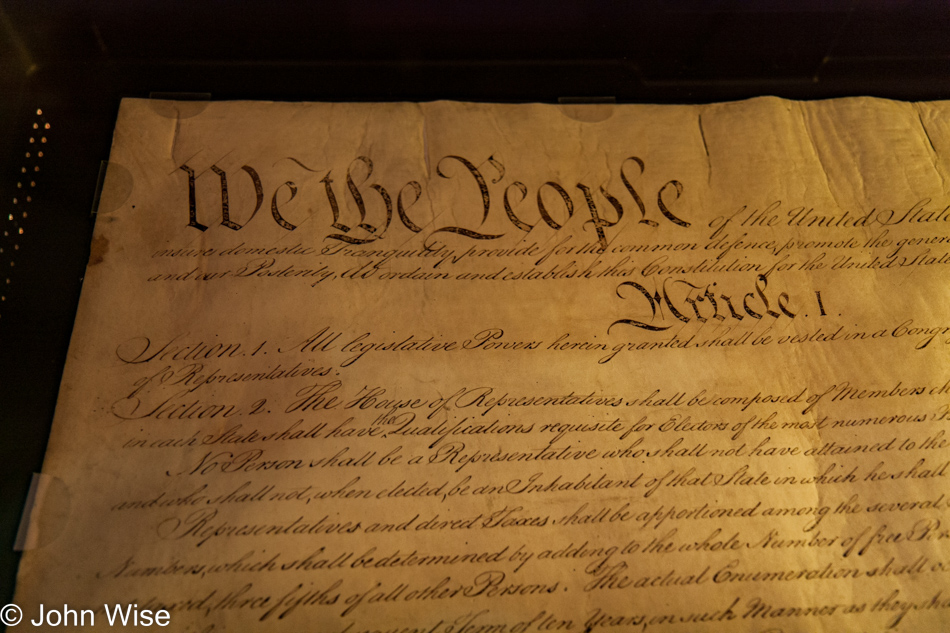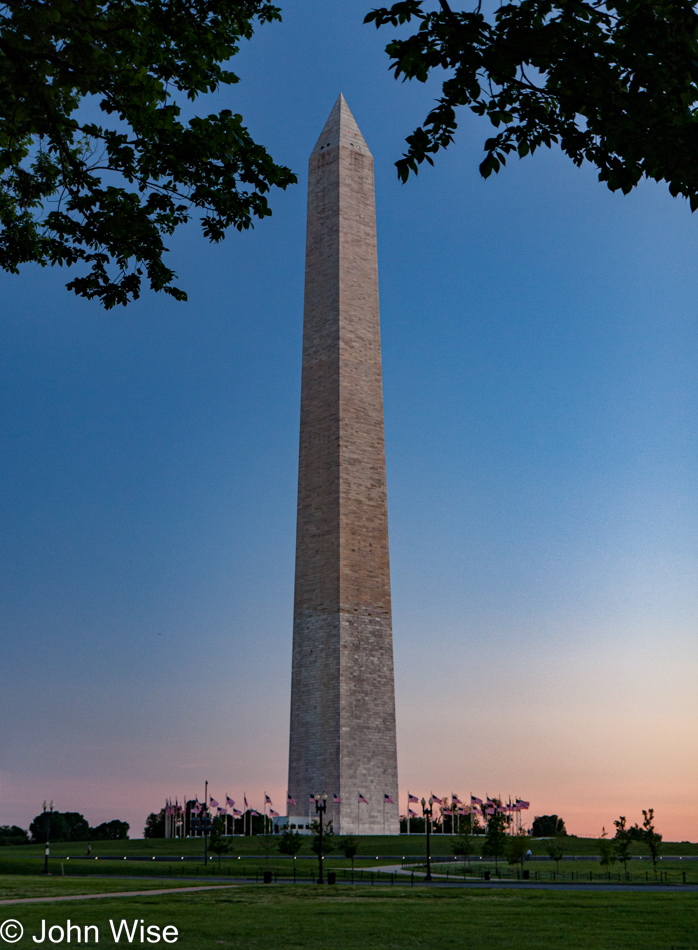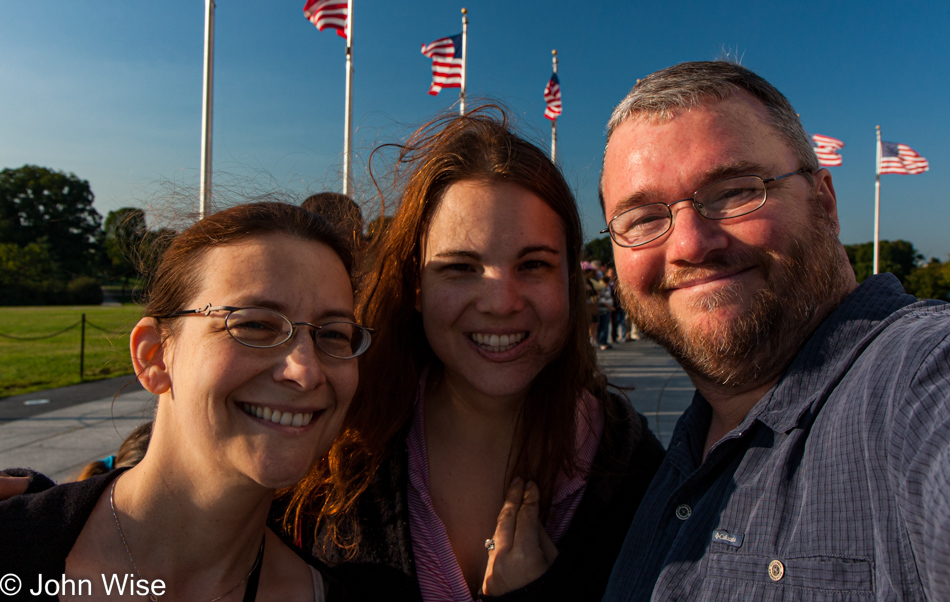
What promises to be a long day began with Caroline, Jessica, and I walking south on 11th Street to Pennsylvania Avenue, around the Old Post Office, continuing south on 12th Street between the Department of Commerce and the Internal Revenue Service. Right on Constitution Avenue and over to the Washington Monument. On our previous visits to the nation’s capital, tickets for going to the top of the monument had been sold out; this time, I planned well in advance.
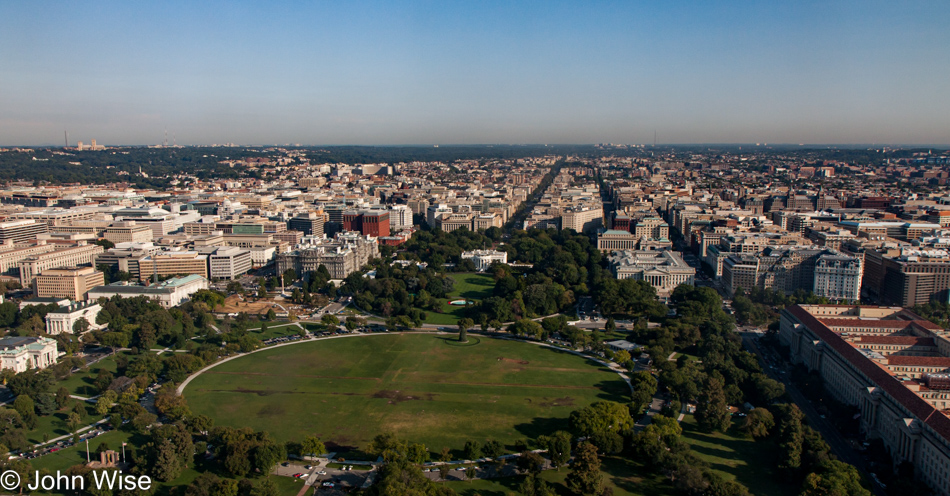
We were first in line, and first through security, then we waited with everyone else to ride the elevator to the top. The Washington Monument was constructed between 1848 and 1884. Lack of funds and the Civil War were some of the reasons this 555-foot obelisk took so long to build. Today we are riding to the top of what at one time was the tallest building on earth. Once inside, our first view is looking north to the White House on a beautiful blue sky day.
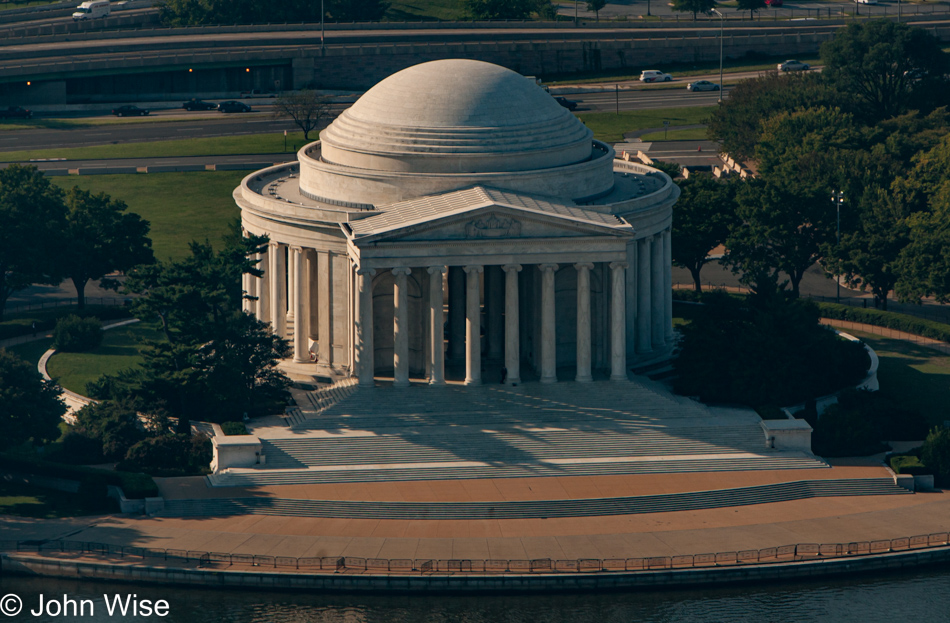
The small windows looking west are occupied by other tourists, but the south windows are free, offering us a great view of the Jefferson Memorial, the Tidal Basin, and the Potomac flowing to the south. What a thrill to be up here; we take our time to inspect the granite, how the pieces were fitted together, the holes cut through the granite above us, which house the red blinking lights that warn aircraft that the Washington Monument stands here.
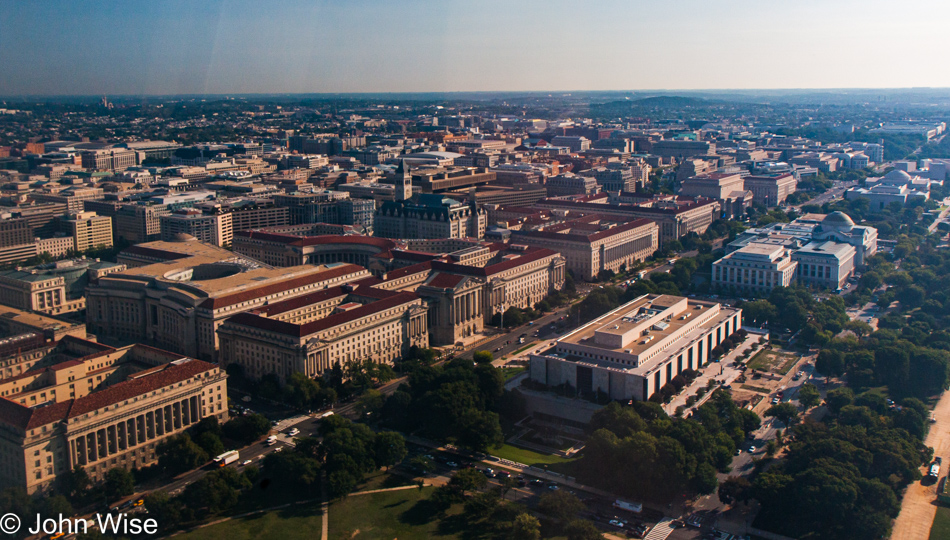
On the eastern side of the monument, the scenery is bathed in a blue haze; the sun over the Capitol is stopping me from getting a nice picture with all of the glare that’s over there. Next time in D.C., we’ll reserve a late afternoon tour just so we can see the U.S. Capitol from above, glowing in the golden light of sunset. Looking northeast, I was able to take the photo above with fairly good results. Remember, I am shooting through glass that doesn’t look as if it is cleaned every day. In the photo above, the first building on the left and the massive one with the interesting circle and half-circle next to it belong to the Department of Commerce – a huge agency indeed. If you are familiar with D.C., you’ll notice the Old Post Office with its tower; the building in front of it is the Internal Revenue Service. The two buildings on the right are the Smithsonian National Museum of American History and the National Museum of Natural History.
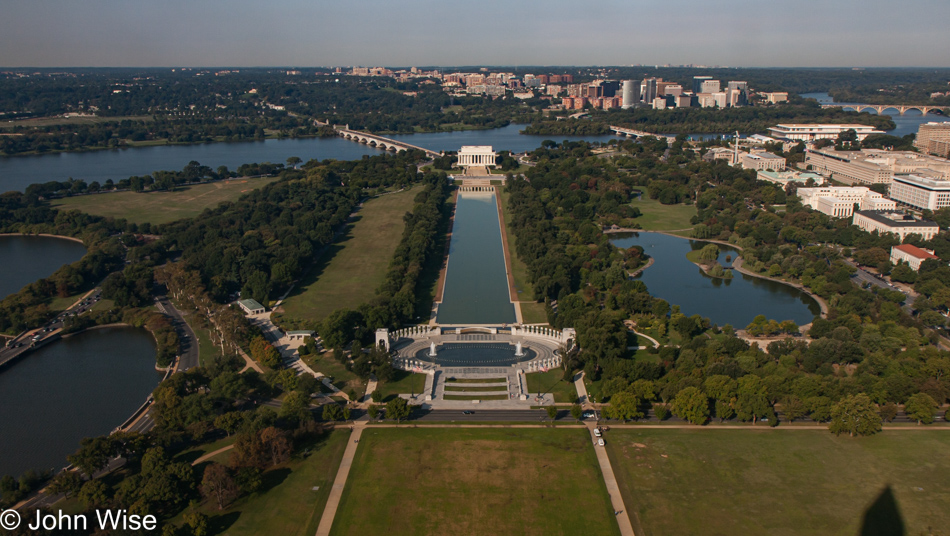
Now clear of other visitors, the western windows offer us a view of the Lincoln Memorial, the Reflecting Pool, and the National World War II Memorial. The buildings to the right are the Federal Reserve, the National Academy of Engineering, and the State Department. Out of view to the southwest is the Pentagon. I did shoot a number of panoramas while up here, but none of them gave me the results I’d hoped for.
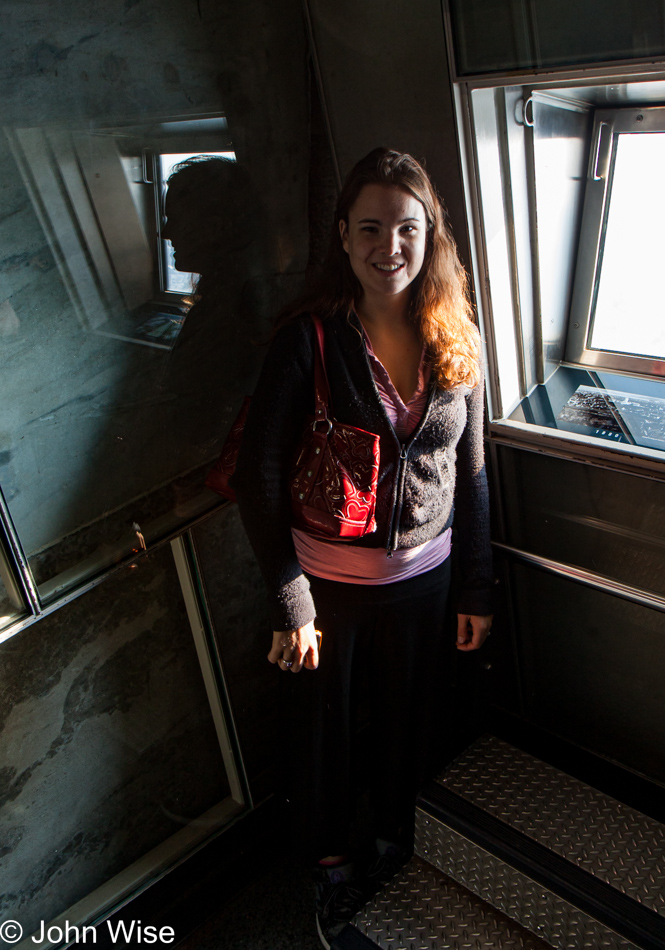
At each window is a photographic diagram showing three different views of the same scene across time. For example, on the western view, you see an image from 1901 with what looks like a swamp next to the Potomac with a dotted overlay showing where the Lincoln Memorial and Reflecting Pool sit today. The next image is from 1920, with the majority of the monument built, but the entire site is still under construction. The last image is from 1999 and some buildings that had been north of the Reflecting Pool have been replaced by a carp pond. The construction for the World War II Memorial hadn’t been started yet, either. On the ride down, the elevator stops, and the lighting changes, allowing us to see through opaque doors some of the dedications made in granite on the interior of the monument. I may sound like a broken record, but we are thrilled to have had the opportunity to see all of this.
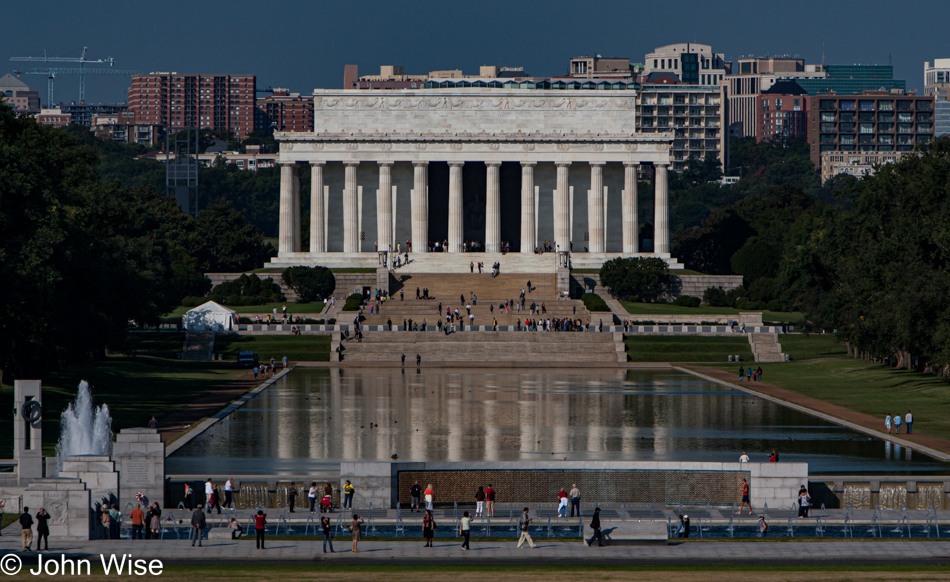
I have no idea how I had this vantage point above so much, and yet obviously not from the heights of the Washington Monument. By the way, it’s at this point, 13 years after the majority of this blog post was already written up, that I’m adding more photos and a bit more text, starting with this image right here. It’s 2022 when I’m working through these entries, which I believe I pointed out in the previous posts.
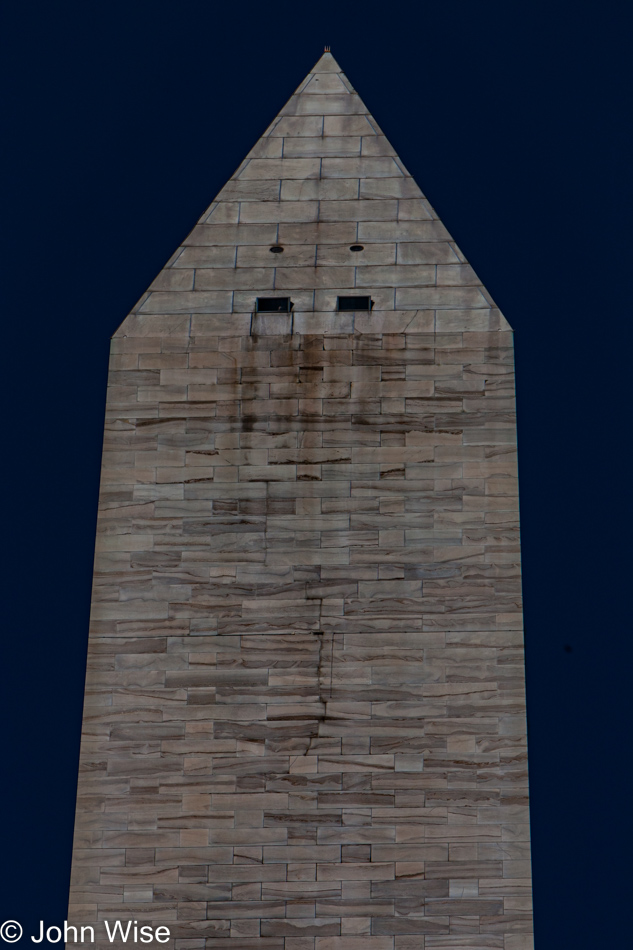
Those tiny rectangles up there are the windows we were just looking through on the Washington Monument. While the day could have easily revolved around nothing more than visiting the immediate area right here, we do have other plans.
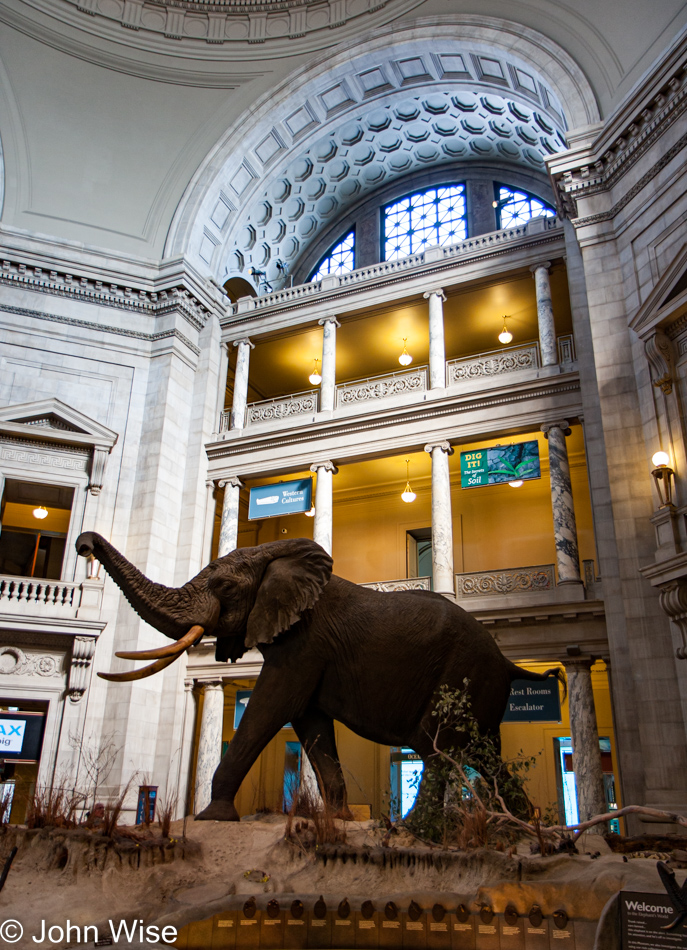
East on the National Mall, we walked towards the Capitol until we reached the Natural History Museum.
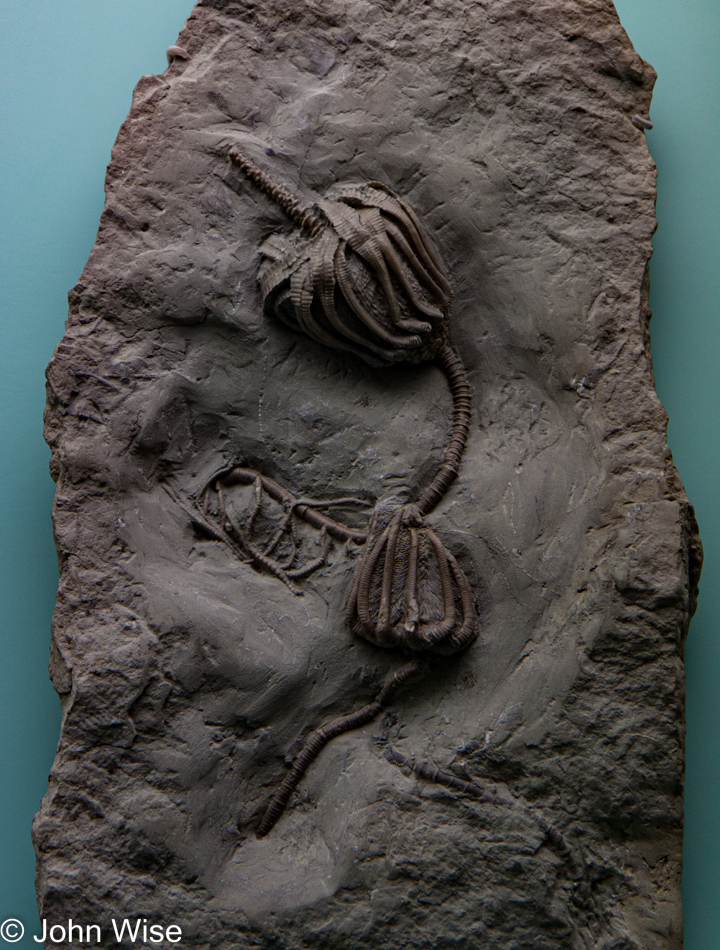
In May, when we visited with my mother-in-law, there was an event being held in the museum that cut our visit short. Caroline, in particular, had wanted to return to spend more time at the exhibit titled ‘Written in Bone.’
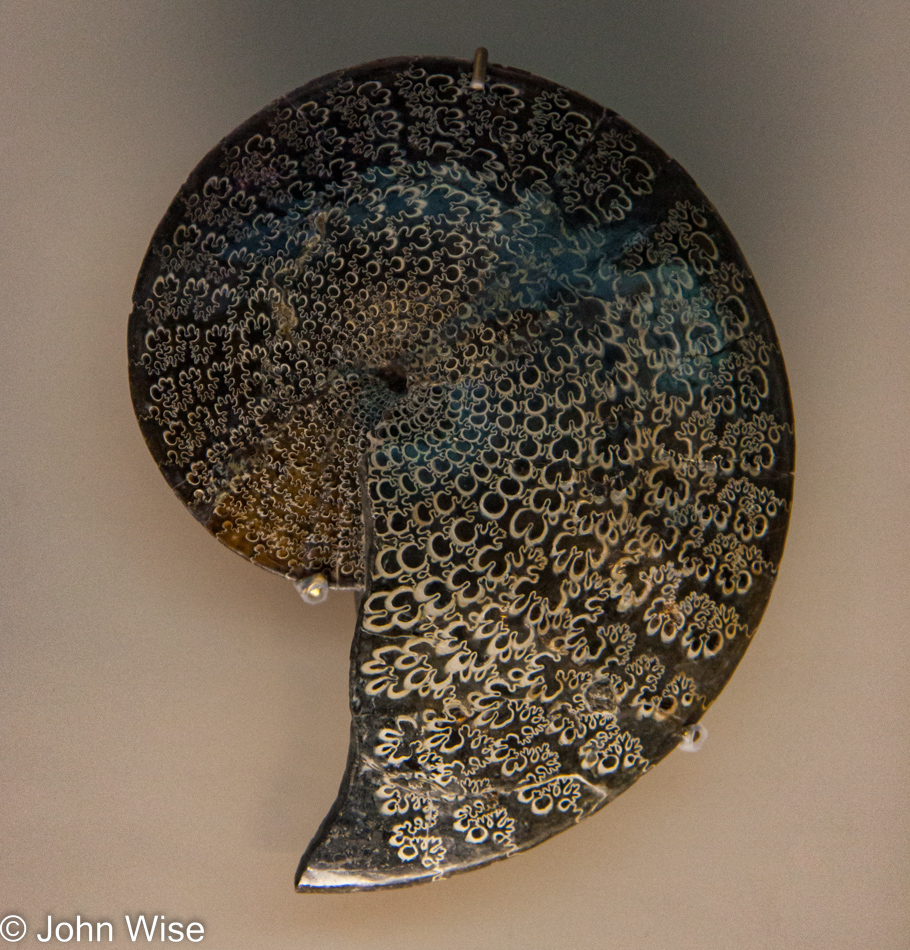
We spend two hours here, seeing lots of dinosaur skeletons, fossils, minerals, precious gems, and human bones, but look forward to the day we might be able to dwell from opening to closing, reading and studying the displays.
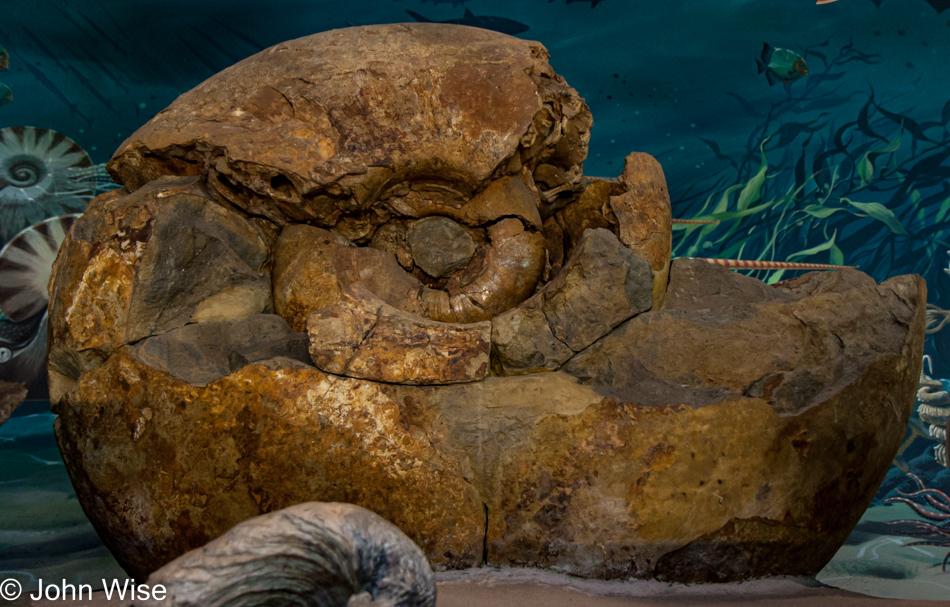
A giant nautiloid fossil.
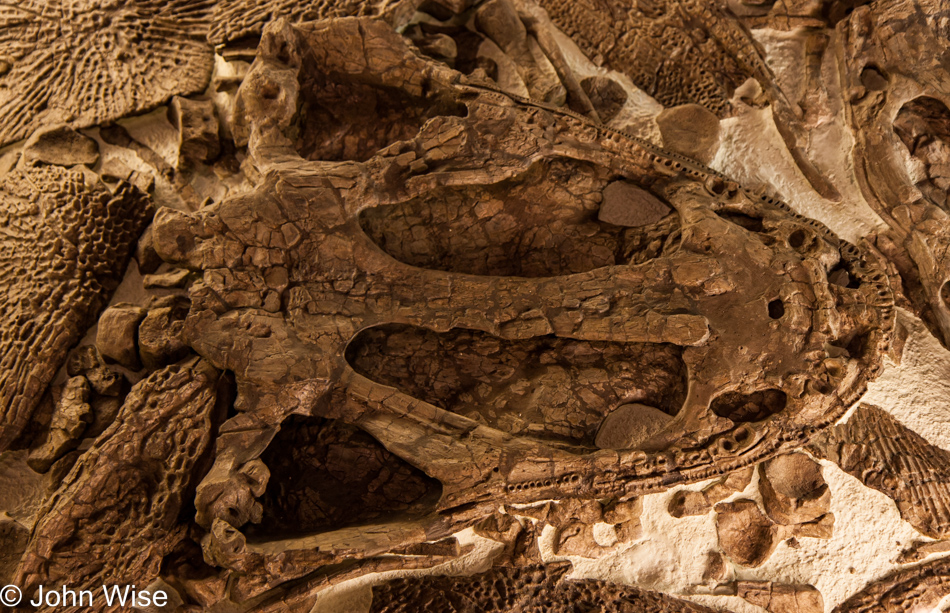
A Triassic-age relative of the crocodile.
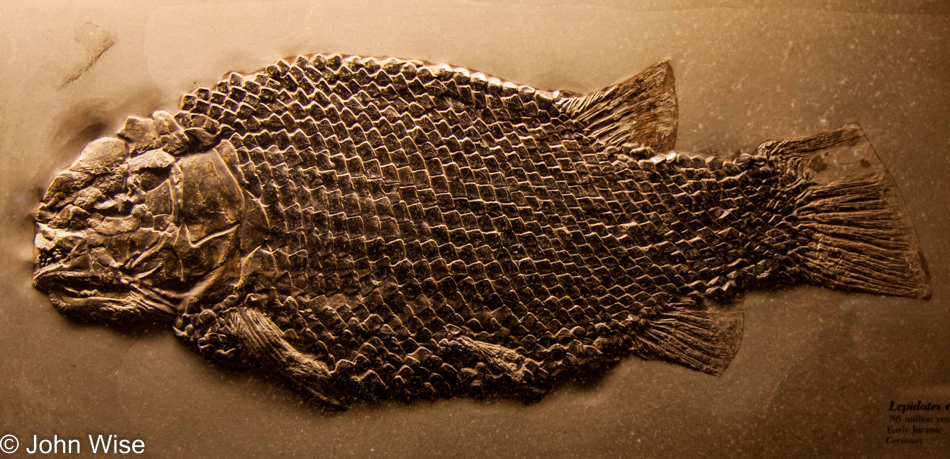
An example from the Lepidotes species of fish that is now extinct.
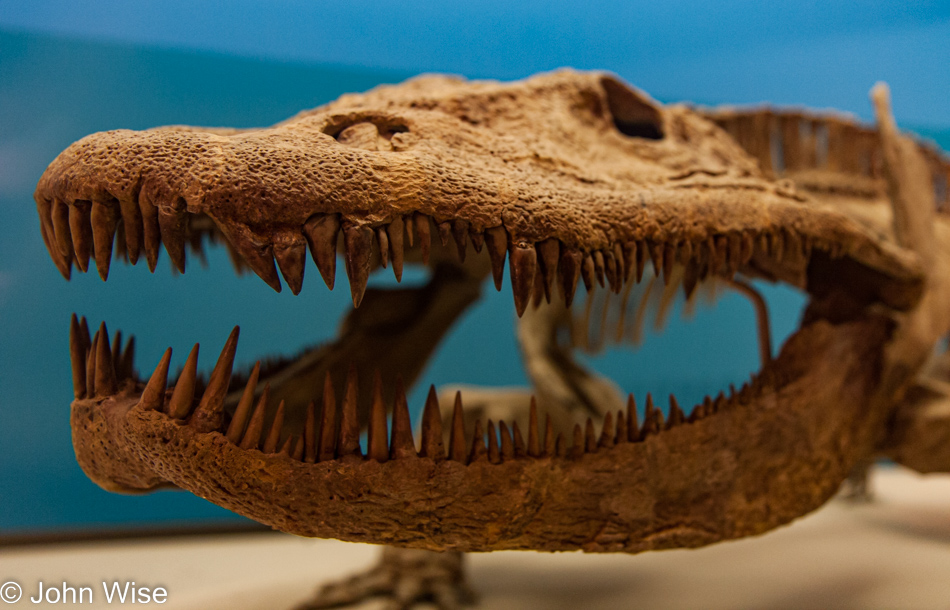
We can all be happy that this line of amphibians didn’t survive very long out of the Paleozoic/Permian periods, as who the hell would want to see a line of frogs descended from these monsters?
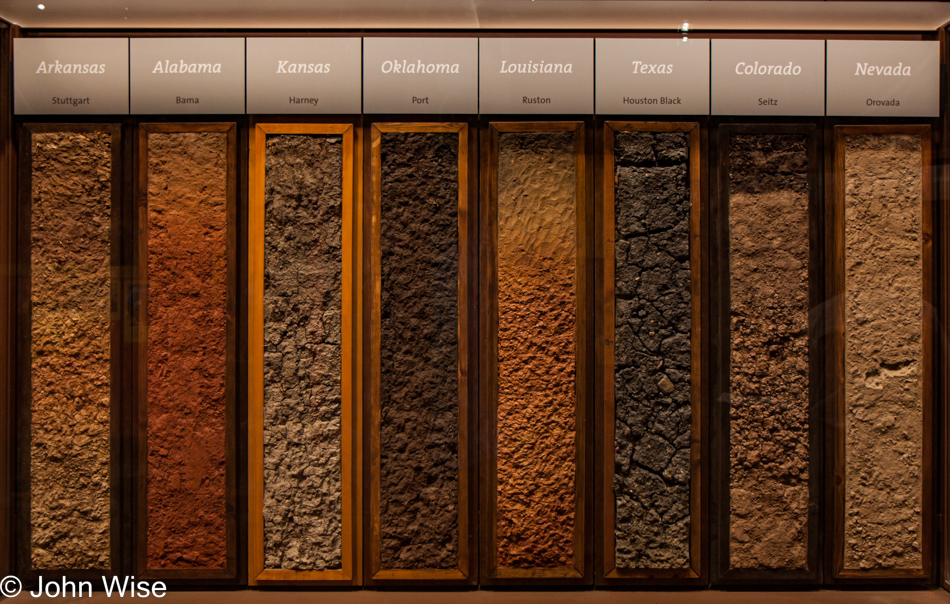
Various soil types from states across America this is just a small sample of them.
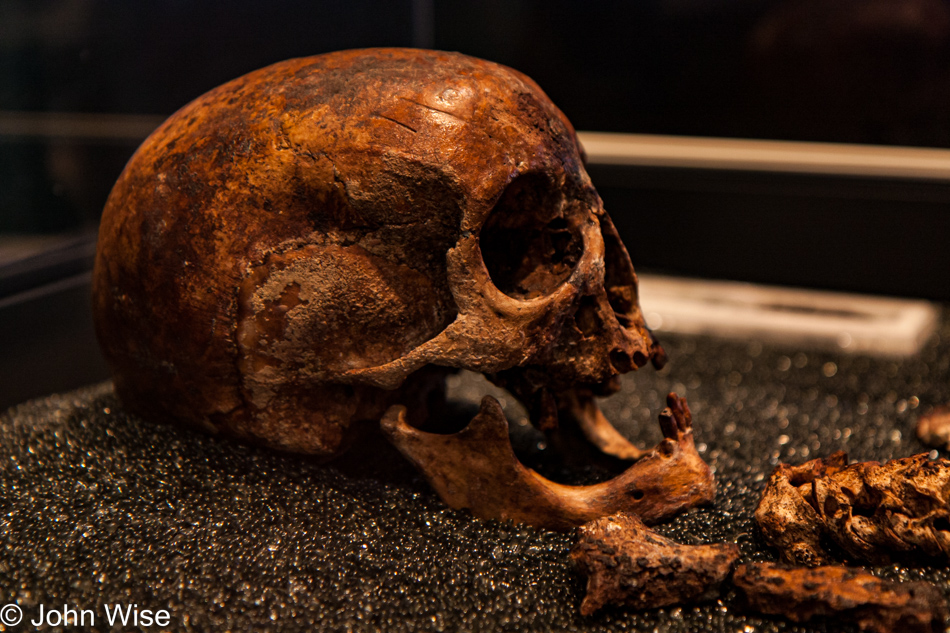
In May when we visited the Jamestown settlement, we had seen that some of their exhibits were on loan to the Smithsonian for the exhibition titled, you guessed it, Written in Bone. This is one of those exhibits.
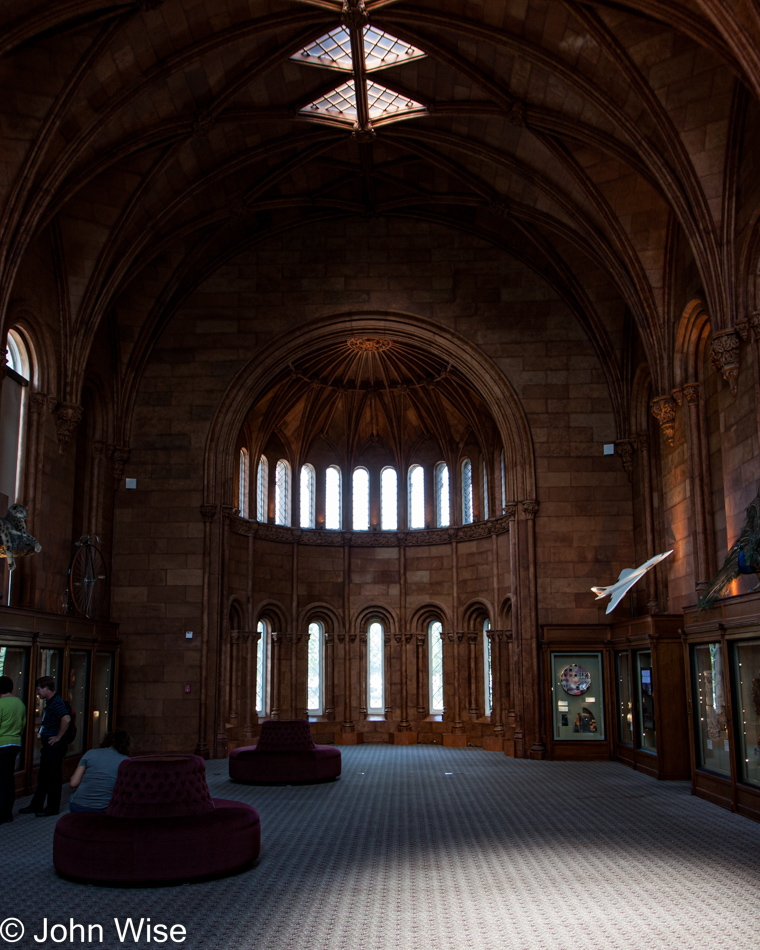
Across the Mall, we enter the Castle. The Smithsonian Information Center and administrative offices are housed here. The Castle was the first building built for what would, by the time of our visit, encompass a total of sixteen museums and the National Zoo. As you enter the Castle, on your left is the tomb of James Smithson, from whose charitable gift the Smithsonian was established on July 1st, 1836.
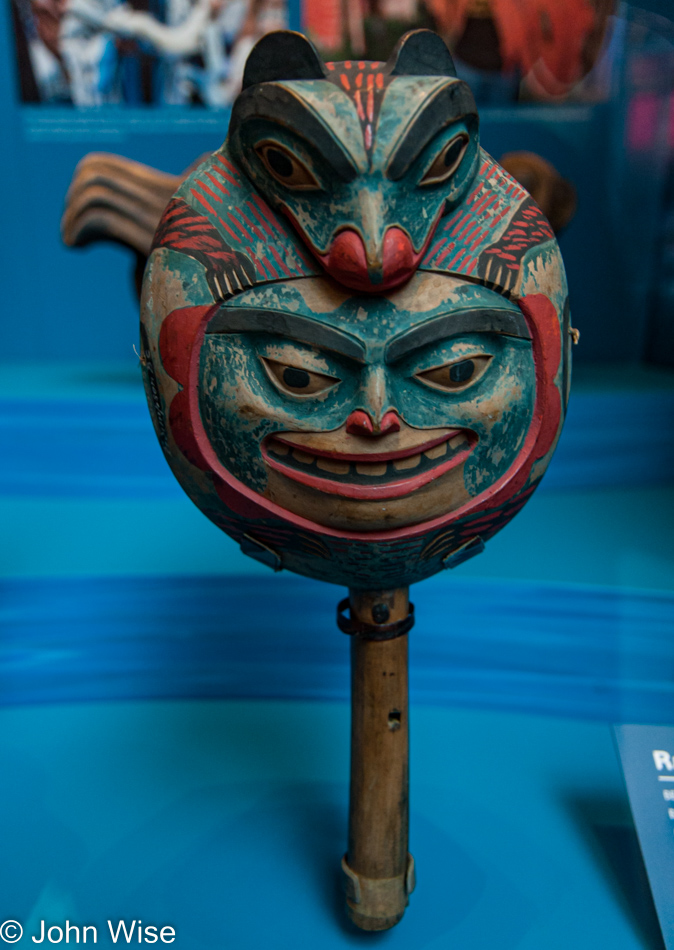
The collection pieces on display in the Castle are taken from the various other museums within D.C.
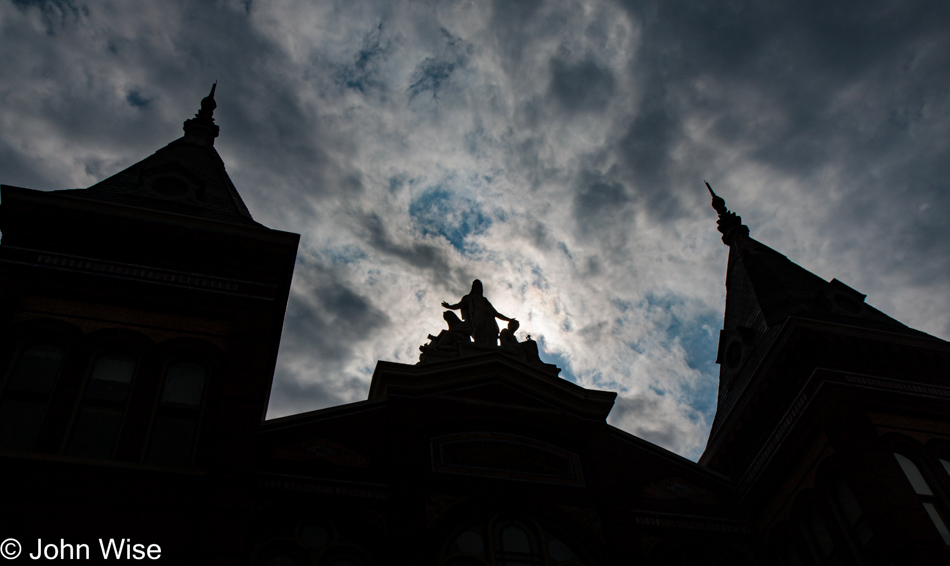
Sure, there were other things seen and photographed, but I don’t have a lifetime to note the many details of inventory of what we’ve seen, so I must be moving on.
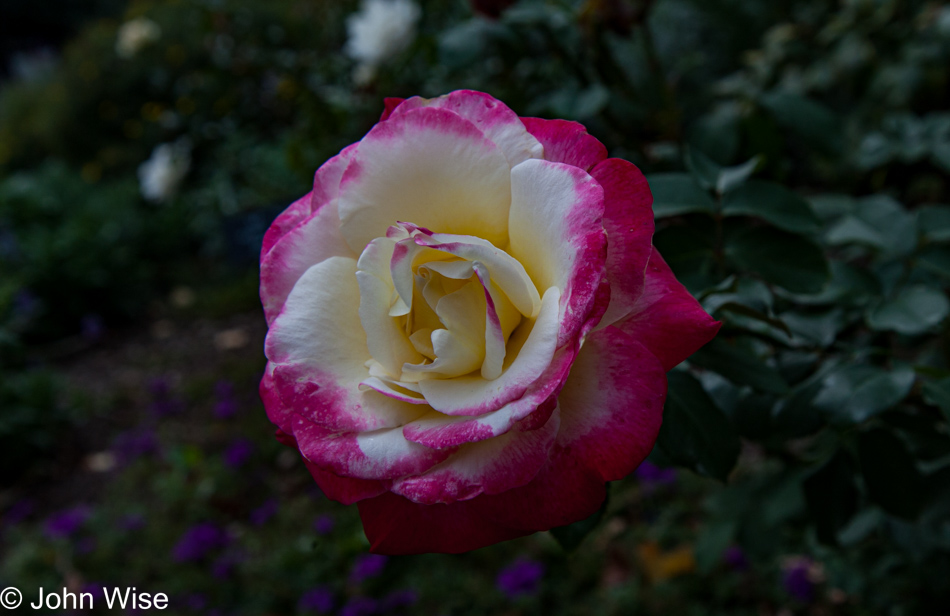
Between the museums, there are other things to see, such as beautiful roses.
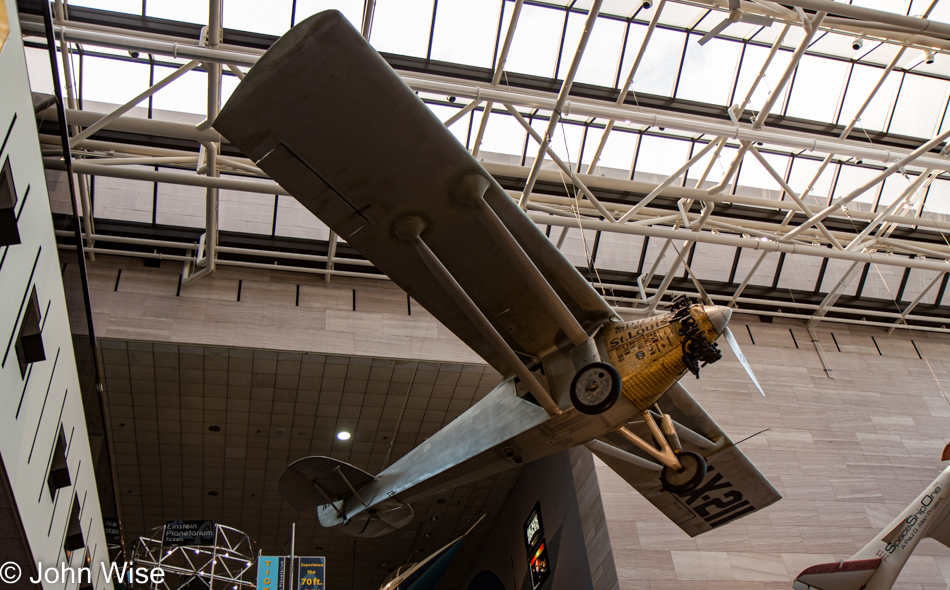
On our way to the newest addition to the Smithsonian, we dipped into the National Air and Space Museum. After flying Southwest Airlines so many times over the previous years, I had forgotten how large a 747 is; the front side of one of these trans-continental jumbos is on exhibit, complete with a cockpit, offering us a look into this giant of the skies. Obviously, the Spirit of St. Louis is not a 747.
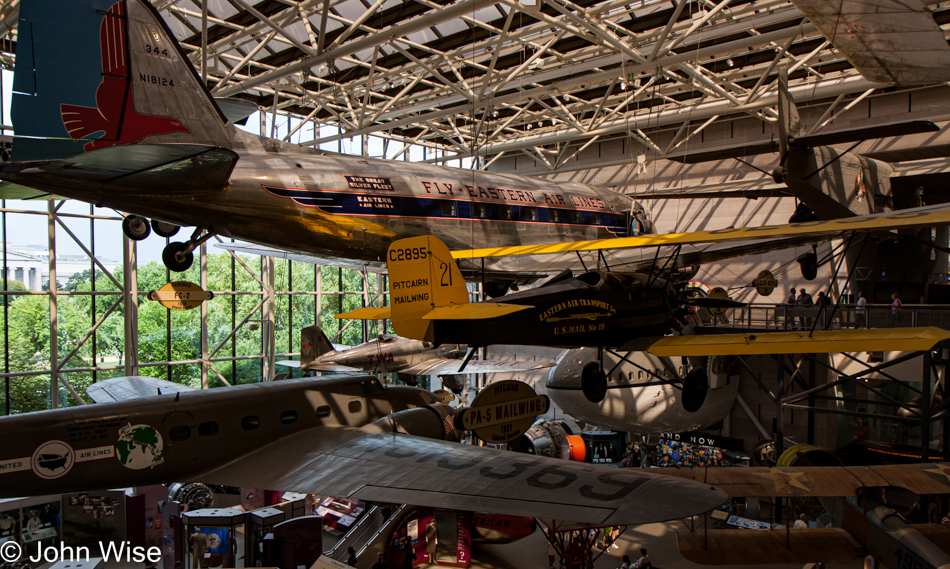
Seeing the model for the Hubble Telescope was nothing less than amazing; I thought it would have been a lot smaller. The same goes for Skylab; a life-size model is on display, and with a line of visitors snaking around it before reaching inside, you can guess this is a popular display. Skylab crashed back to earth in 1979, all 77.5 tons of it.
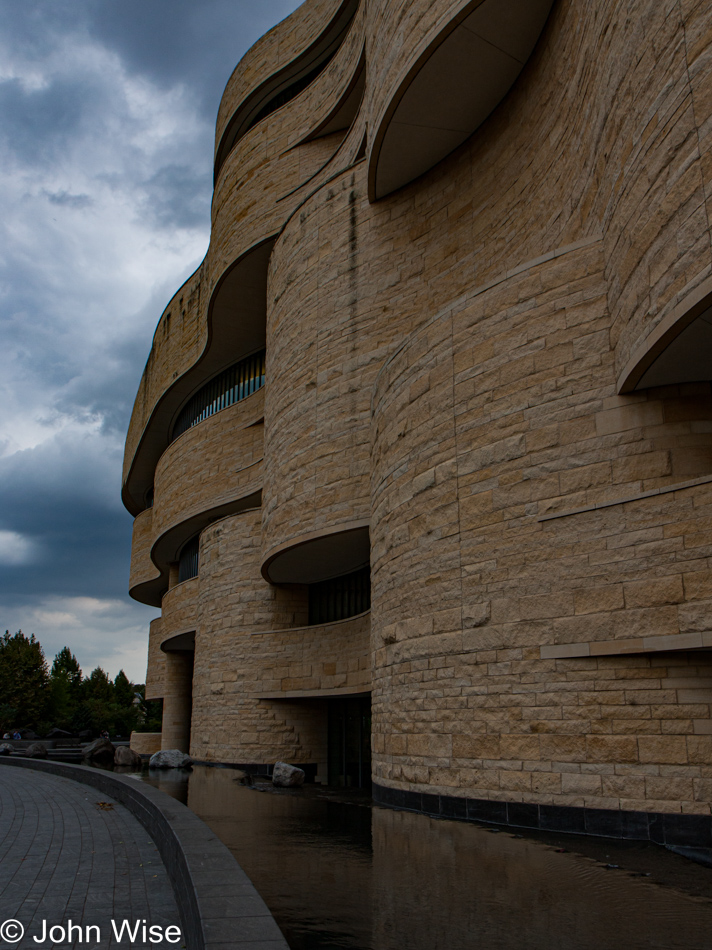
On September 21, 2004, the National Museum of the American Indian opened its doors. This is our first visit, and to be honest, I had anticipated this particular museum would be a disappointment. The reason I assumed that is because the American Indian typically gets short-changed, and maybe this effort would appear to be a cheap second thought.
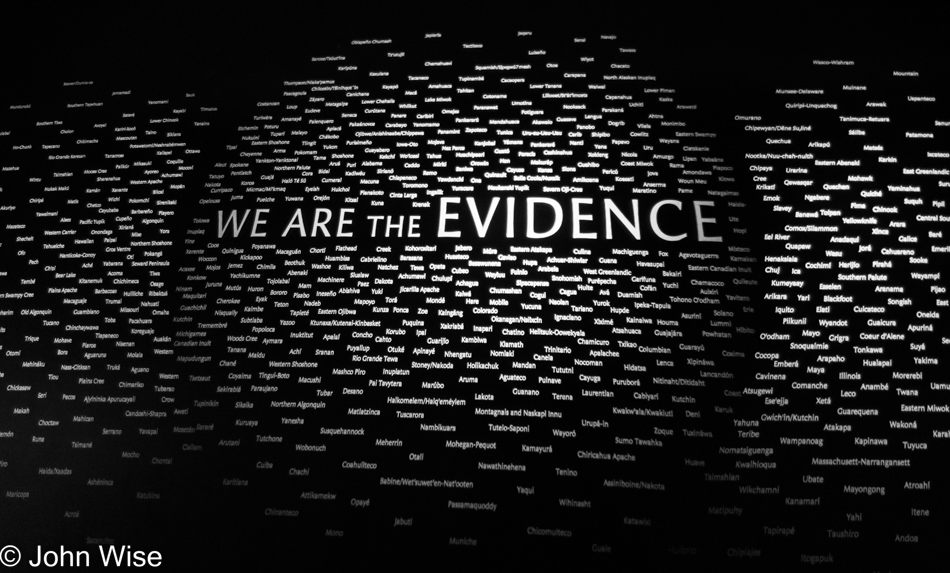
I was wrong – very wrong. The five-story building and water features as you approach are beautiful. Walking through the doors, you can’t help but be impressed with the flow of things. The museum’s architect, Douglas Cardinal, is a Blackfoot Indian; his work is amazing.
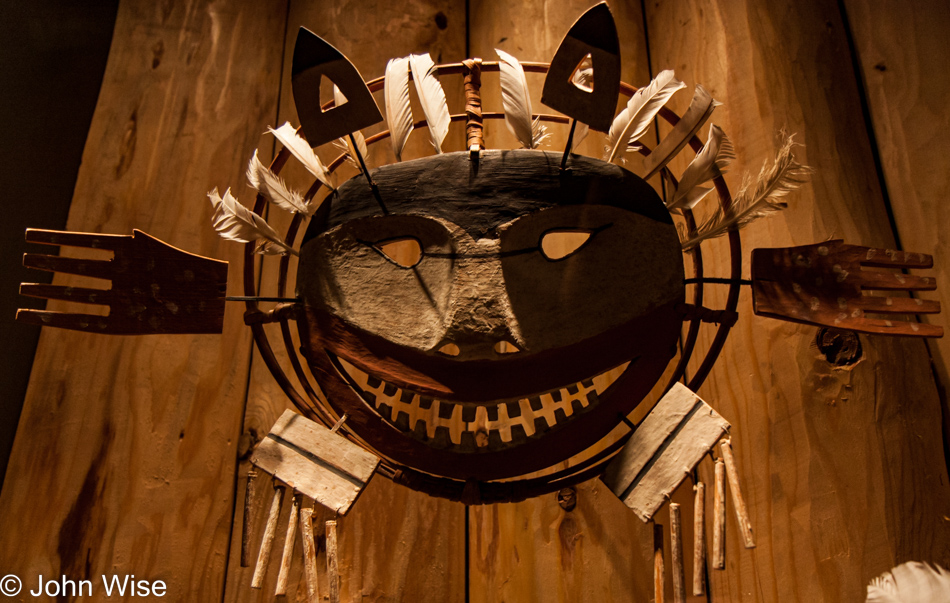
On display is part of a collection of more than 800,000 objects as well as a portion of the more than 125,000 images in the archive.
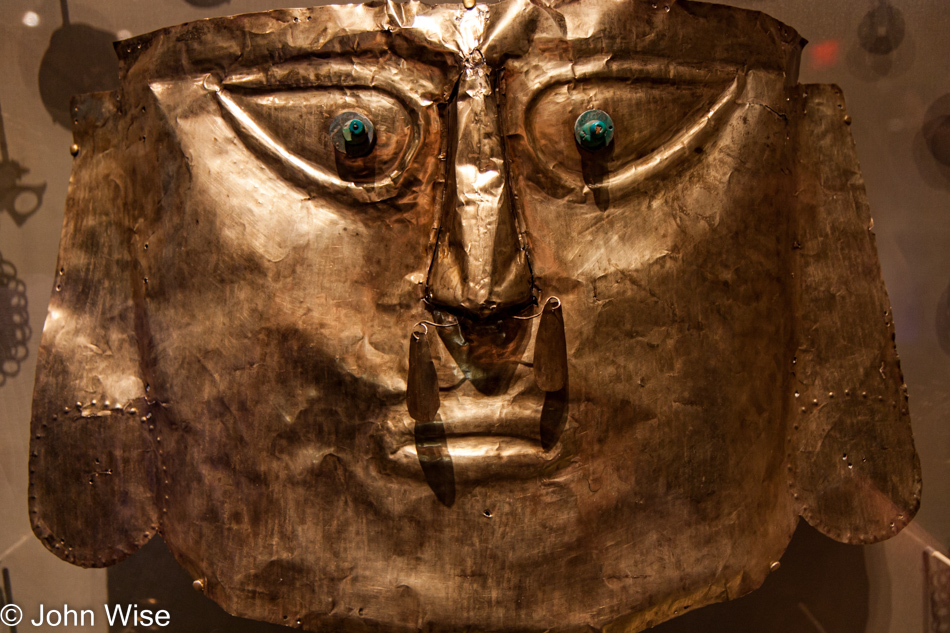
There are many exhibits dedicated to particular tribes, with contemporary and historical pieces presenting these peoples and cultures. And it is not just the North American Indians here; the Native people of South and Central America also find representation.
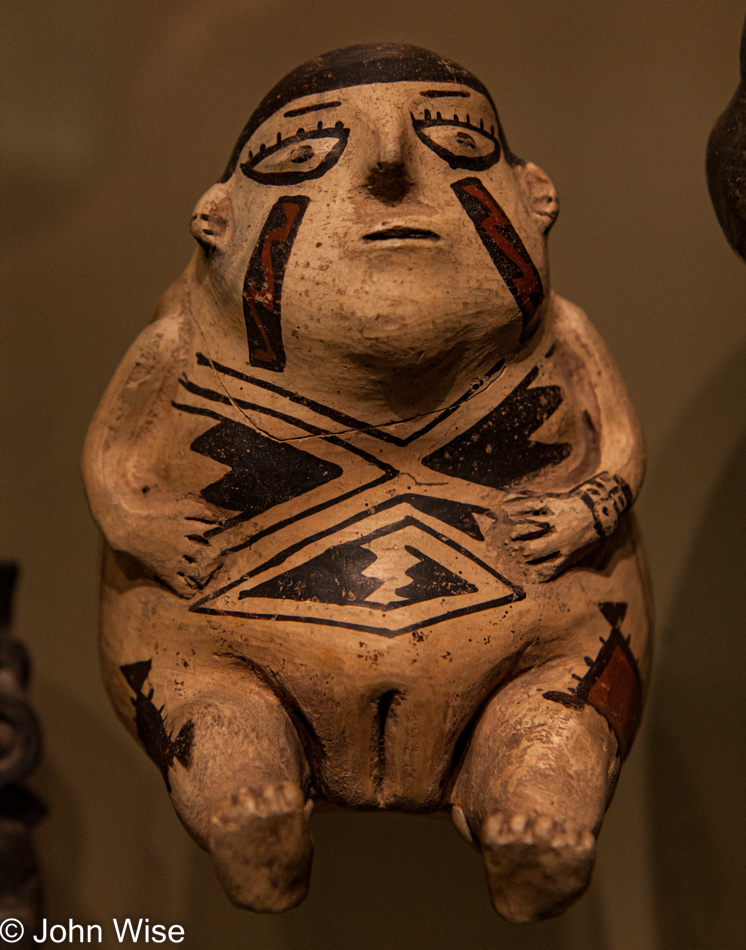
Guilt and shame are horrible traits of a people that claim to be modern and enlightened.
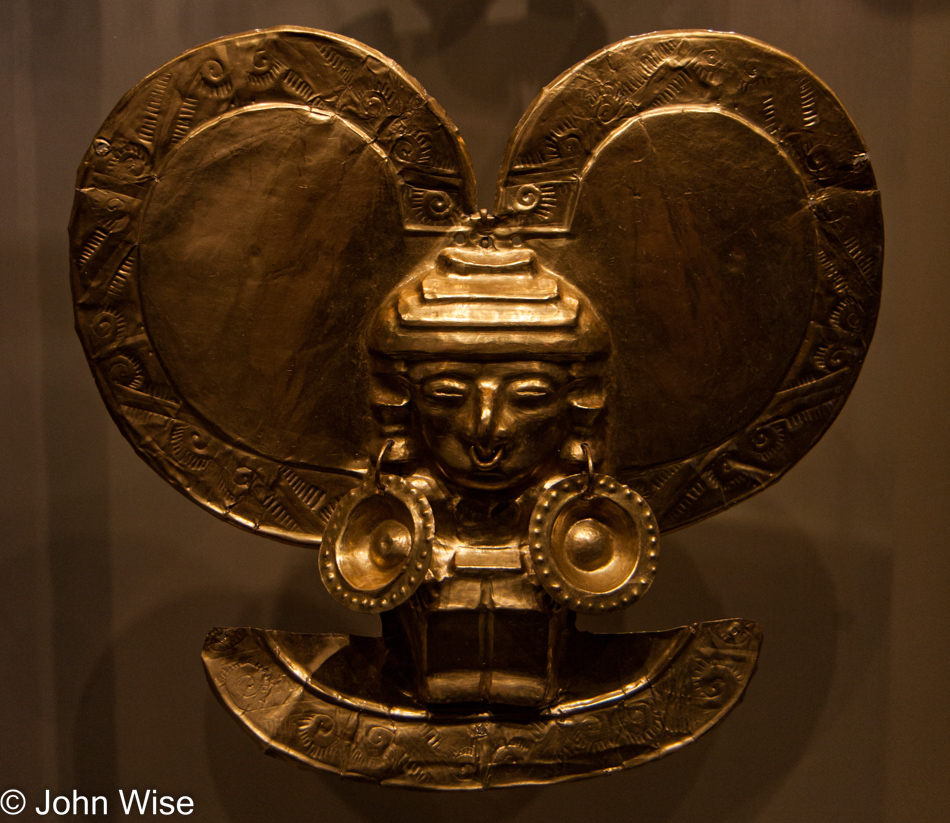
I think we can see where Walt Disney lifted his inspiration for a famous mouse.
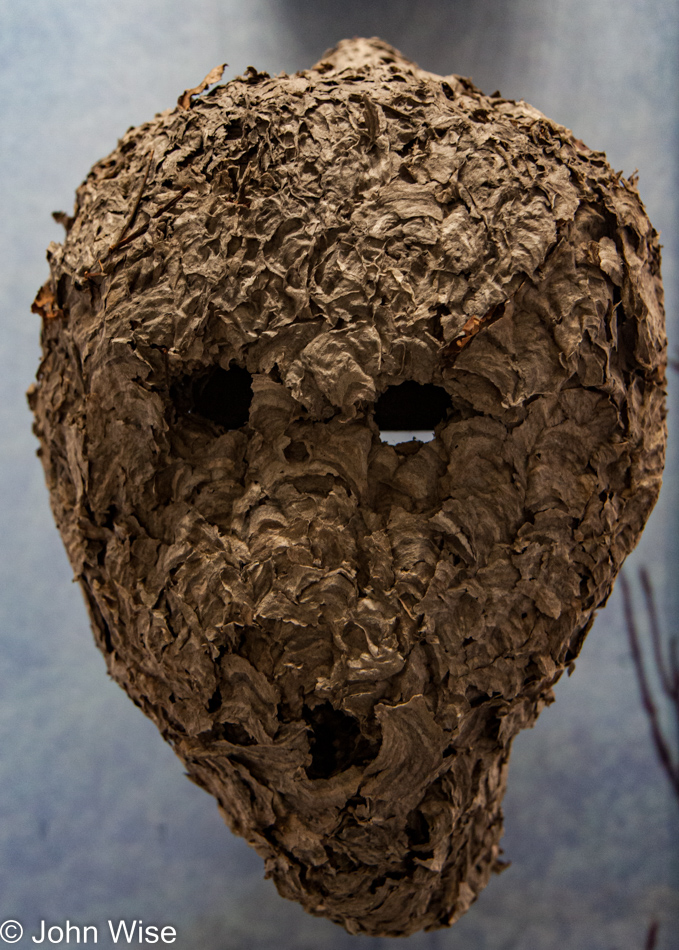
Nope, just a lot of nope. If I ever saw another human being running at me wearing a mask made of a hornet’s nest, I’d be miles away.
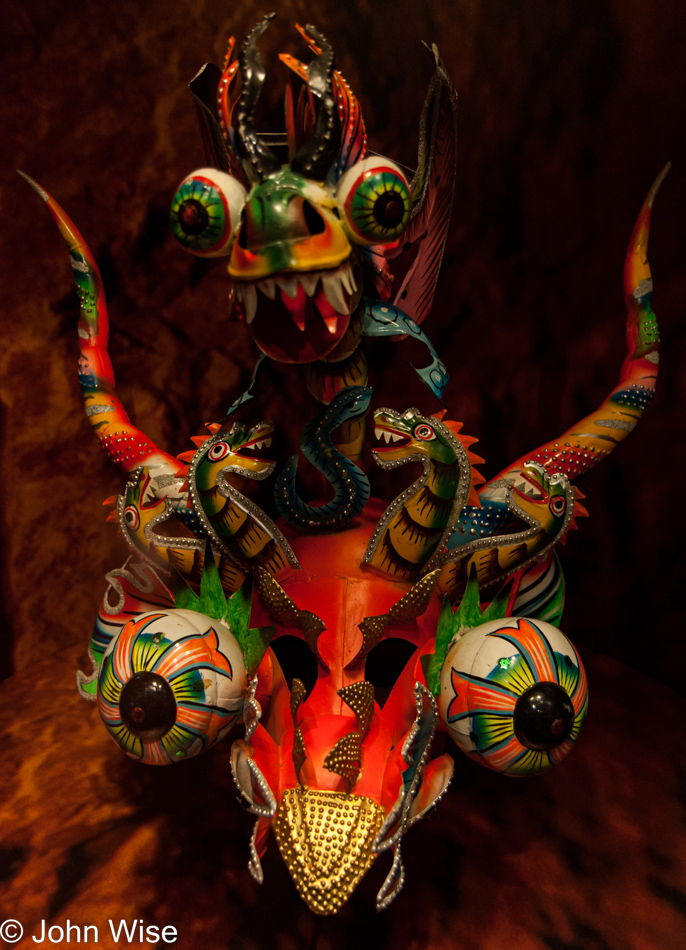
The Mitsitam Native Foods Cafe was closing when we were finishing our tour of the museum. The menu changes over the year but has featured buffalo steak, aji amarillo mashed yucca, banana-wrapped bluefish, dried red corn with chili salad, cornmeal crusted fried frog legs, wild-cinnamon-and-juniper-glazed acorn squash – next time; we are in Washington, D.C. we will try to take most of our meals right here.
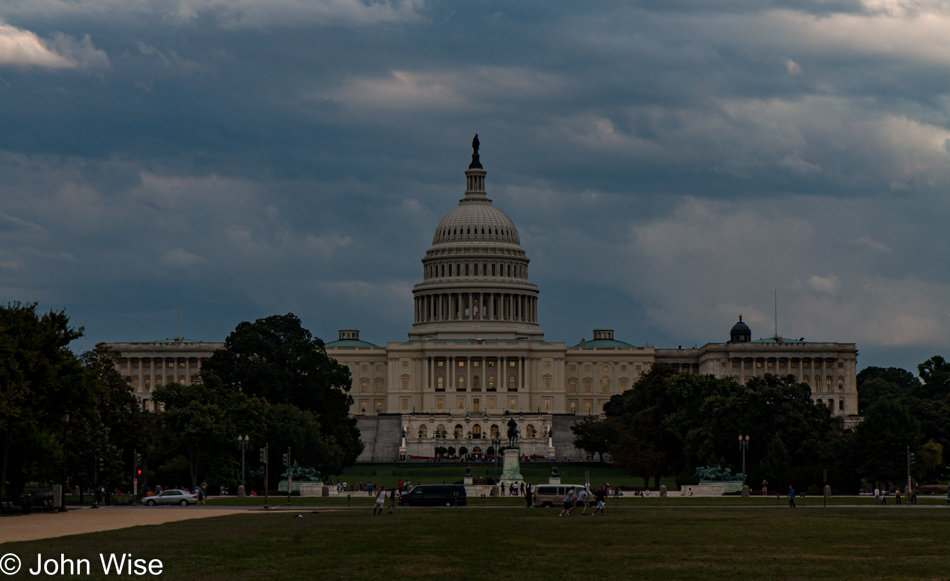
Good thing we have so many spectacular photos of this building.
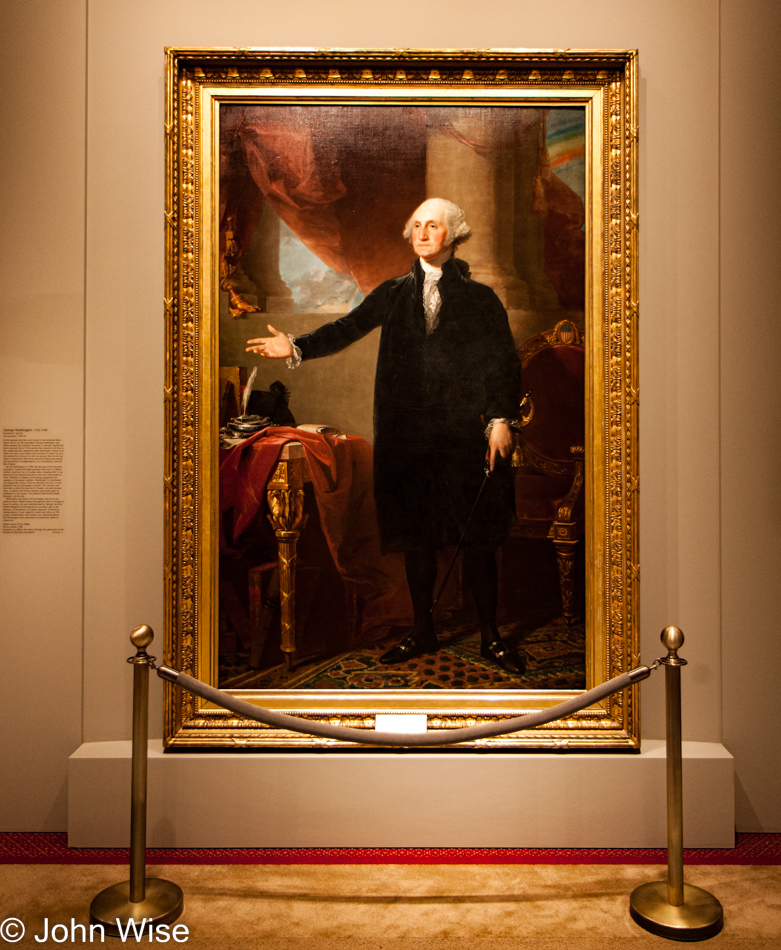
The National Portrait Gallery was our next stop. On previous visits, Caroline and I have toured the White House, the U.S. Capitol, and the Supreme Court.
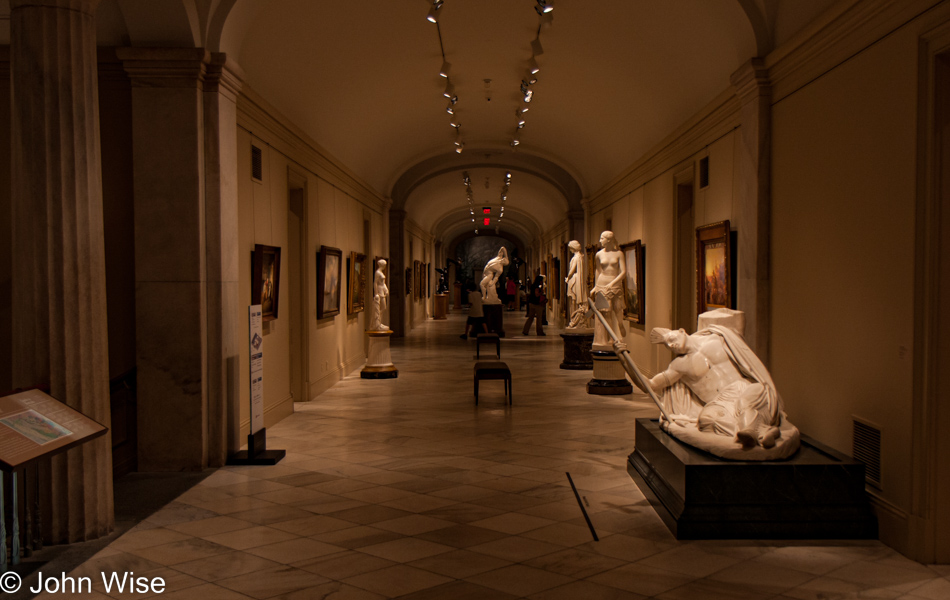
We have visited other units within the Smithsonian, the Lincoln, Jefferson, and Roosevelt Memorials, the Vietnam and Korean War Memorials, the National Archives, the Library of Congress, the Holocaust Museum, Ford’s Theater, Washington National Cathedral, and some other places but on this trip, we have been trying to fill in some gaps of a few of the places we have not been.
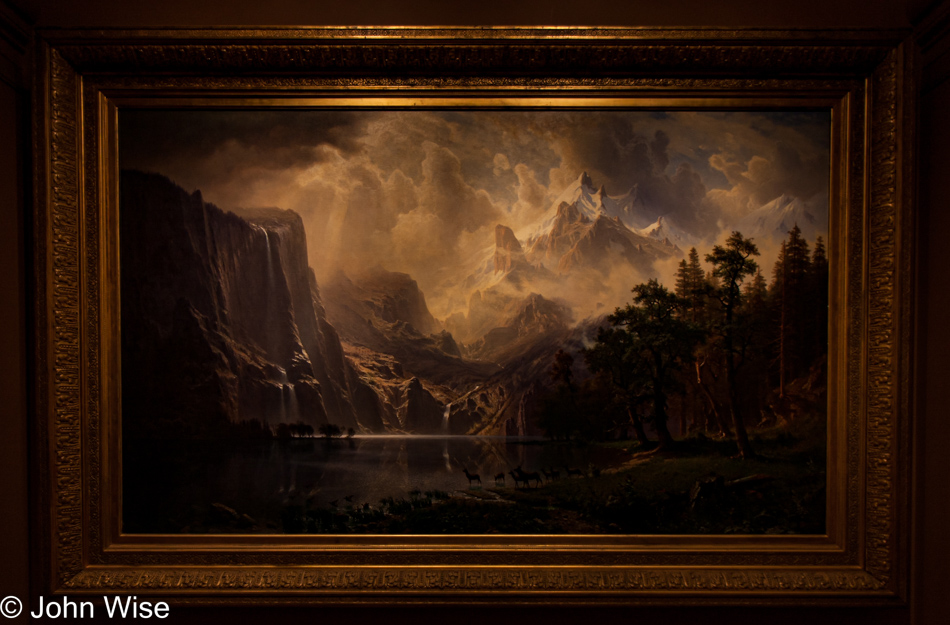
As is usual with our travels, there is never enough time to see and do all we might like to do. It’s barely an hour in the Portrait Gallery before we have to leave; this was planned as our last afternoon stop because the Portrait Gallery is open until 7:00 p.m. daily.
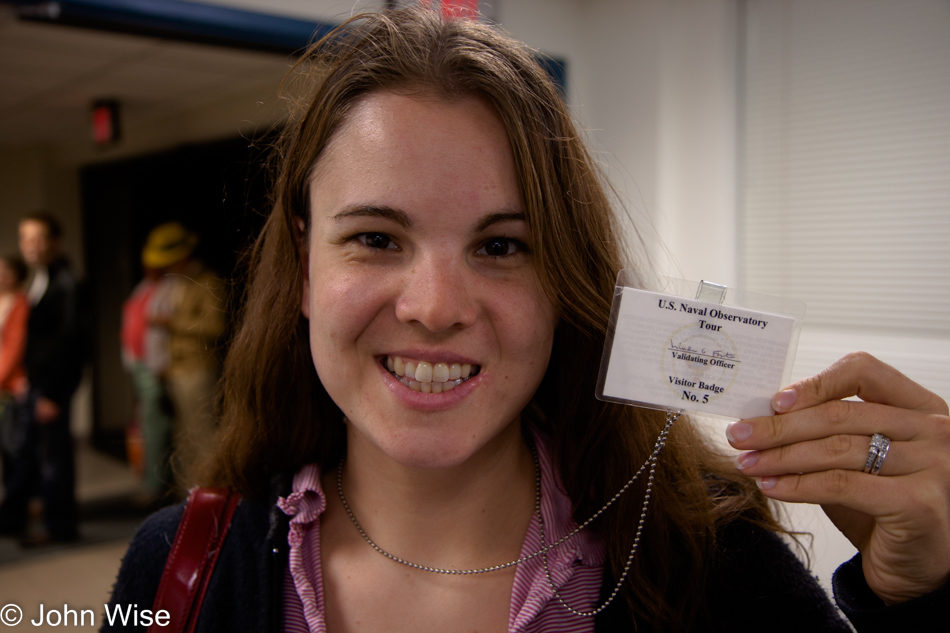
For our final destination of the day at the U.S. Naval Observatory, the Metro in the direction of Shady Grove was the subway we needed to board.
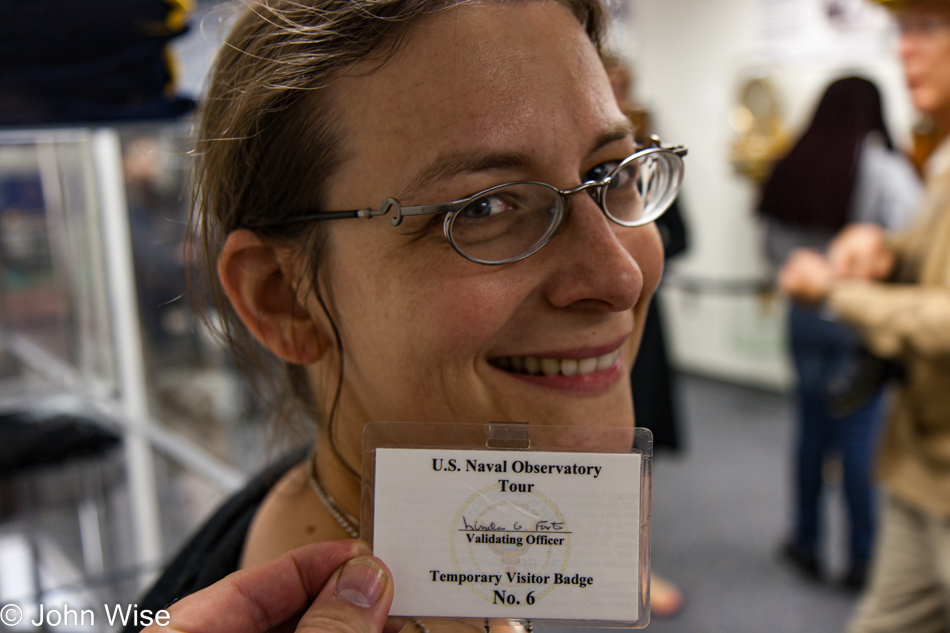
Multi-pass.
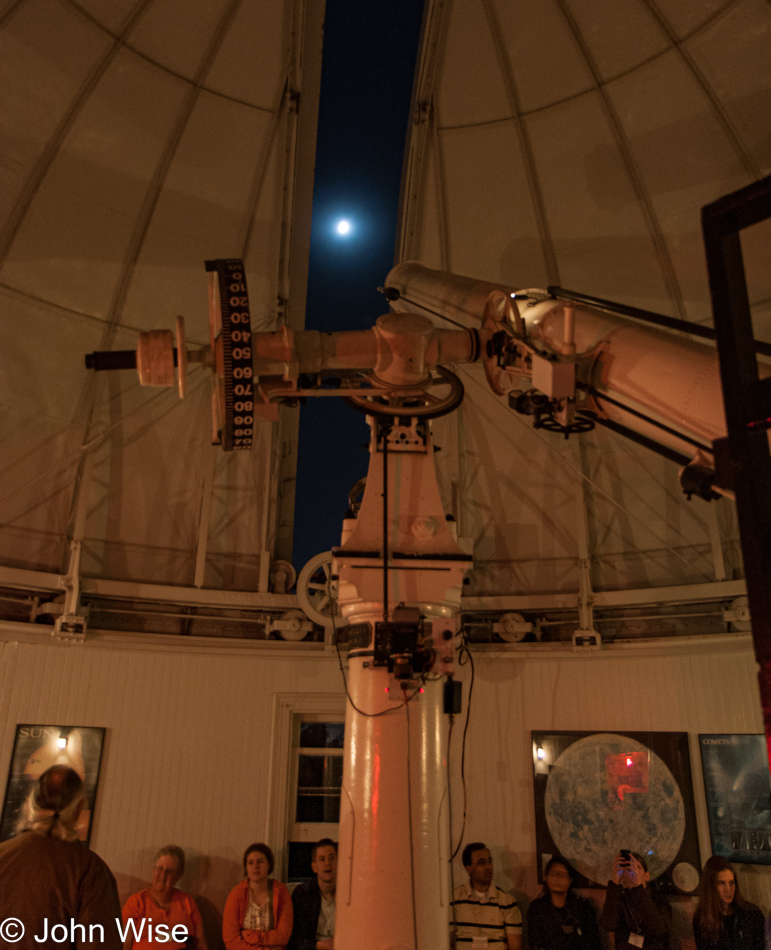
By an incredible stroke of luck with a small window of opportunity, I somehow managed to snag reservations for one of the infrequent Monday-only tours of the U.S. Naval Observatory. You must arrive by 8:00 p.m., but we took no chances and arrived a half-hour early. At 8:00, the security check began, and soon, we were wearing the badges that would have to be worn during our stay at the Observatory.
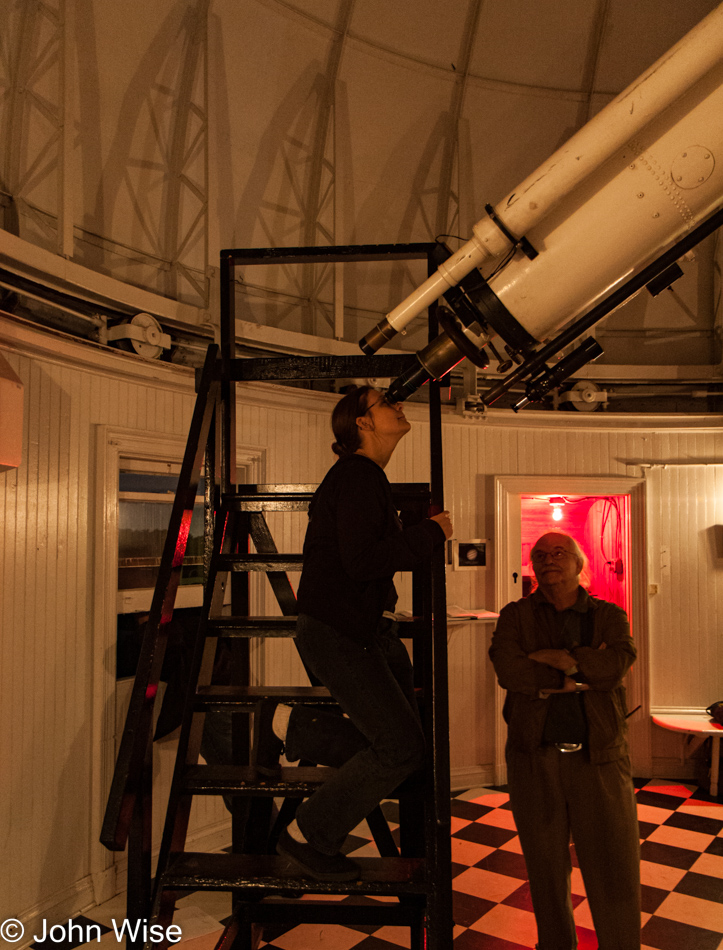
While we did get the chance to look at Jupiter and its moons, we sadly did not have the same luck in spotting our Vice President Joe Biden – the Vice President’s residence is here on the Observatory grounds. Our tour consisted of learning about the Naval Observatory’s job of being one of the keys to measuring time for the United States – and the world – and how, back before atomic clocks, the observatory was used to fix on particular stars measuring their transit and then syncing clocks so that a recognized source could be established that business and government would accept as being a true measure of accurate time.
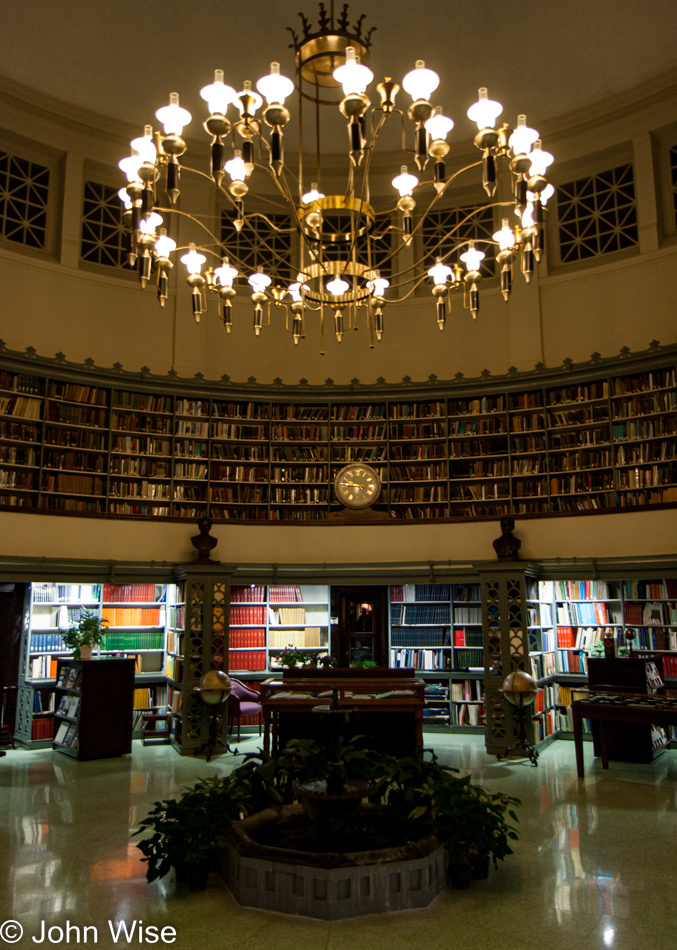
Finally, a visit to the observatory library and a terrific chance to see one of the world’s greatest collections of books regarding astronomy and mathematics, with one book on display dating from 1611-1612.
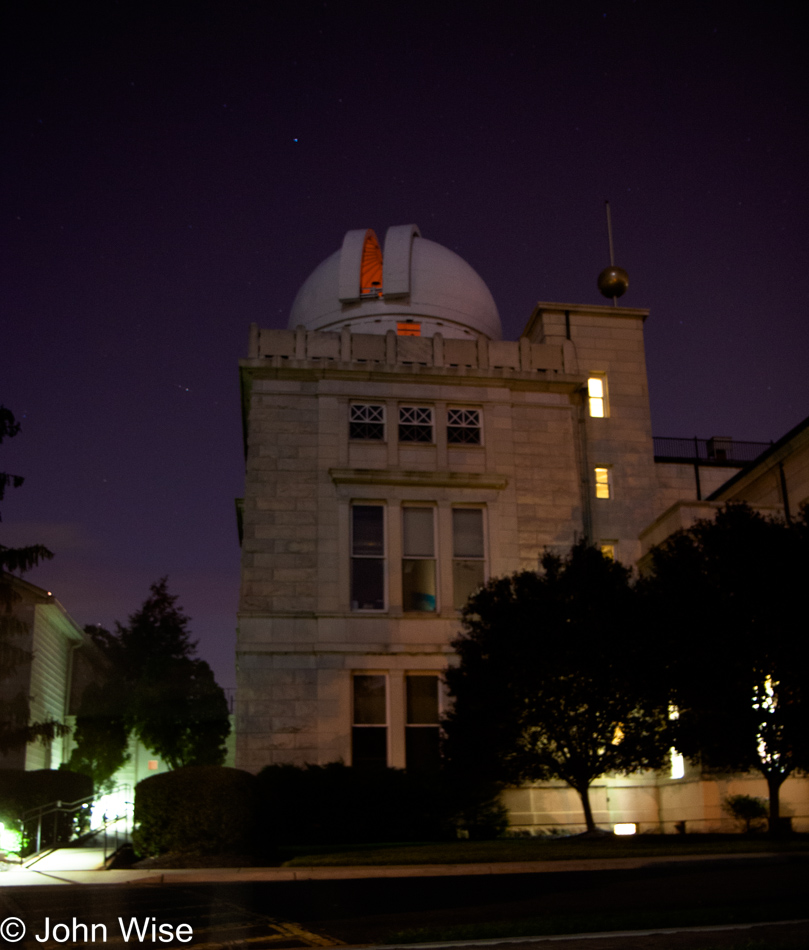
It was now after 10:00 p.m., we were hungry, and the tour was over. Great, we are quite the distance from a Metro station, there is no taxi stand nearby, and our feet are killing us. Fortunately, it wasn’t long after we started walking down Massachusetts Avenue that we were able to flag down a taxi moving in the opposite direction as us; thanks, unknown taxi man. Dinner was at Harry’s on the ground floor of our hotel; sleep didn’t show up until midnight.

